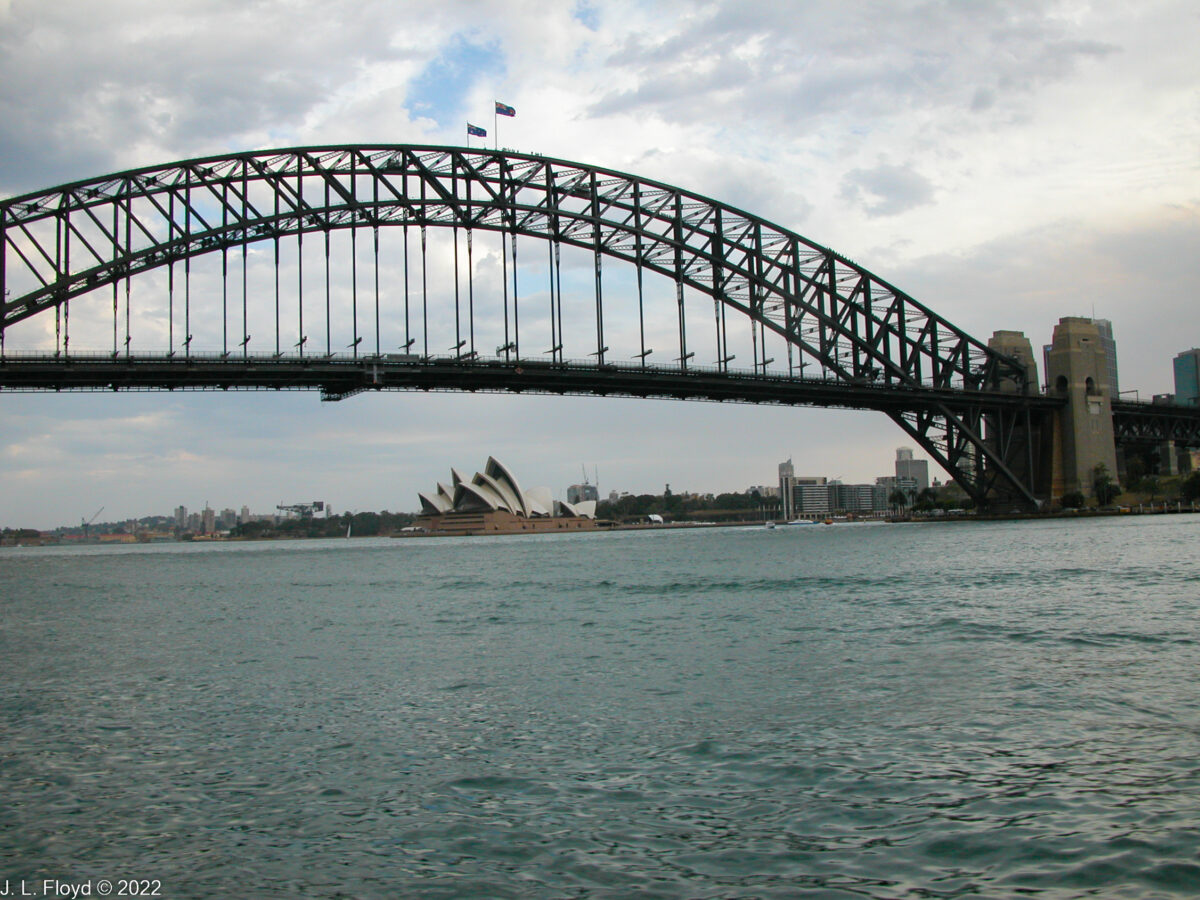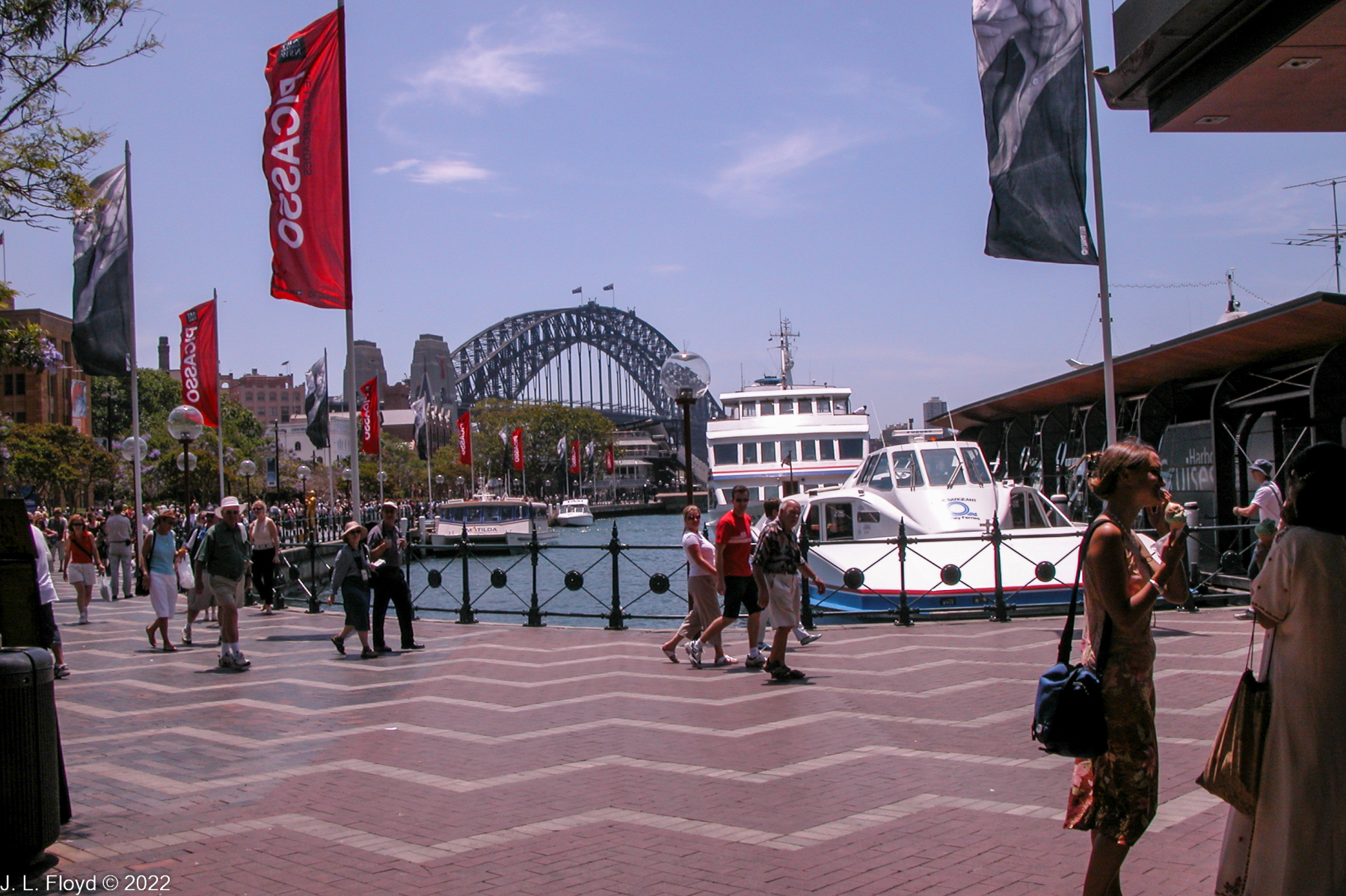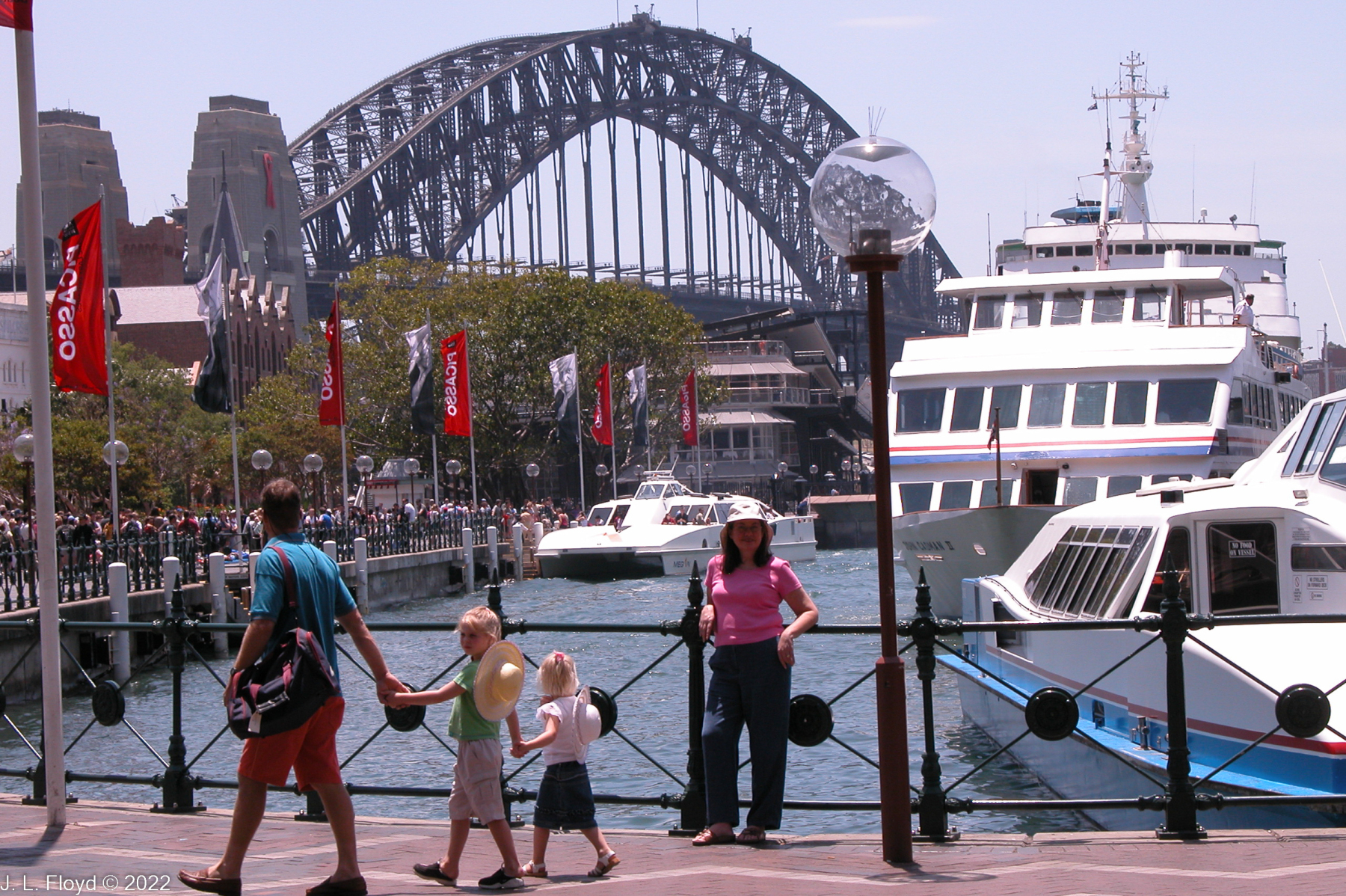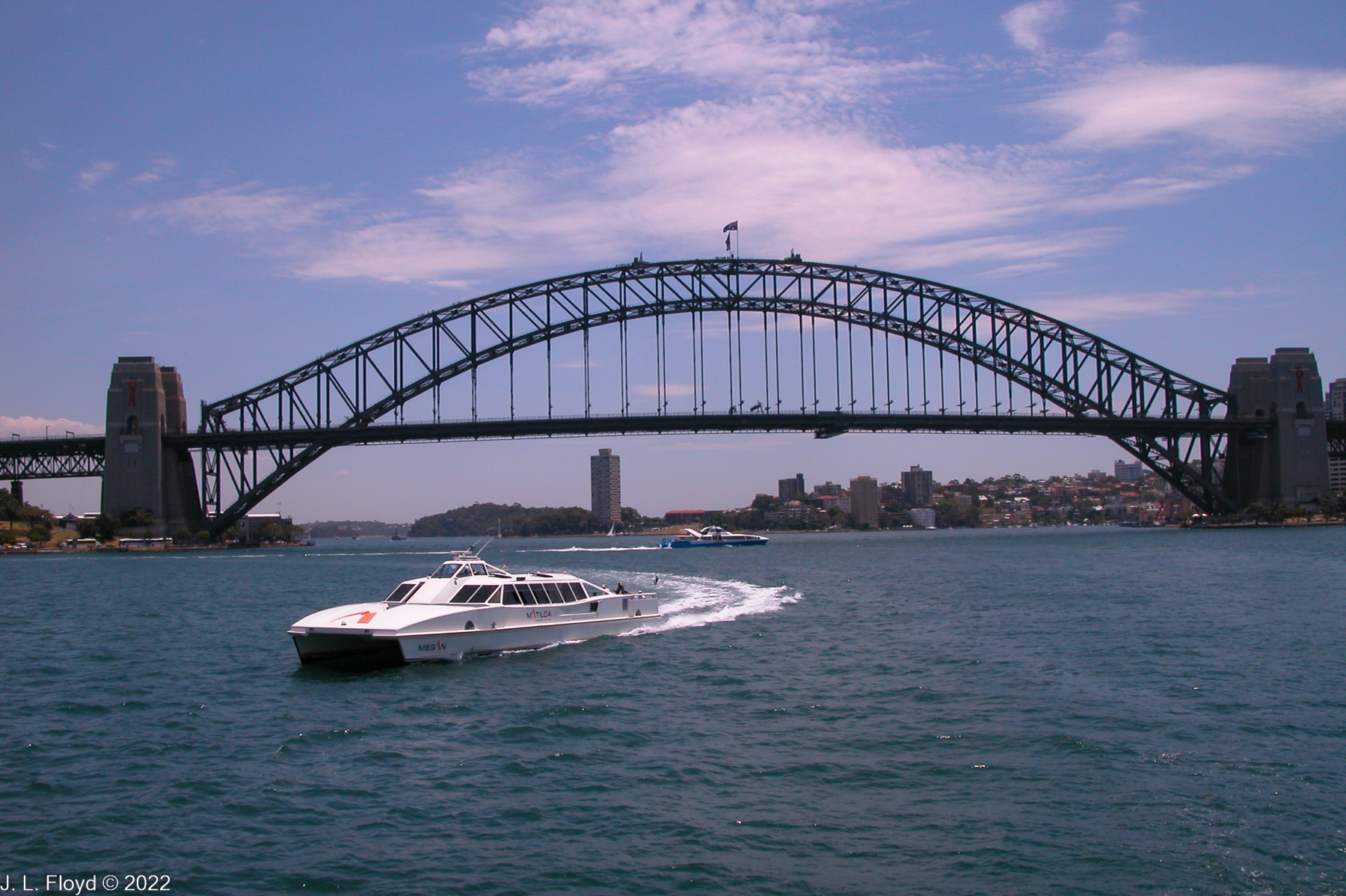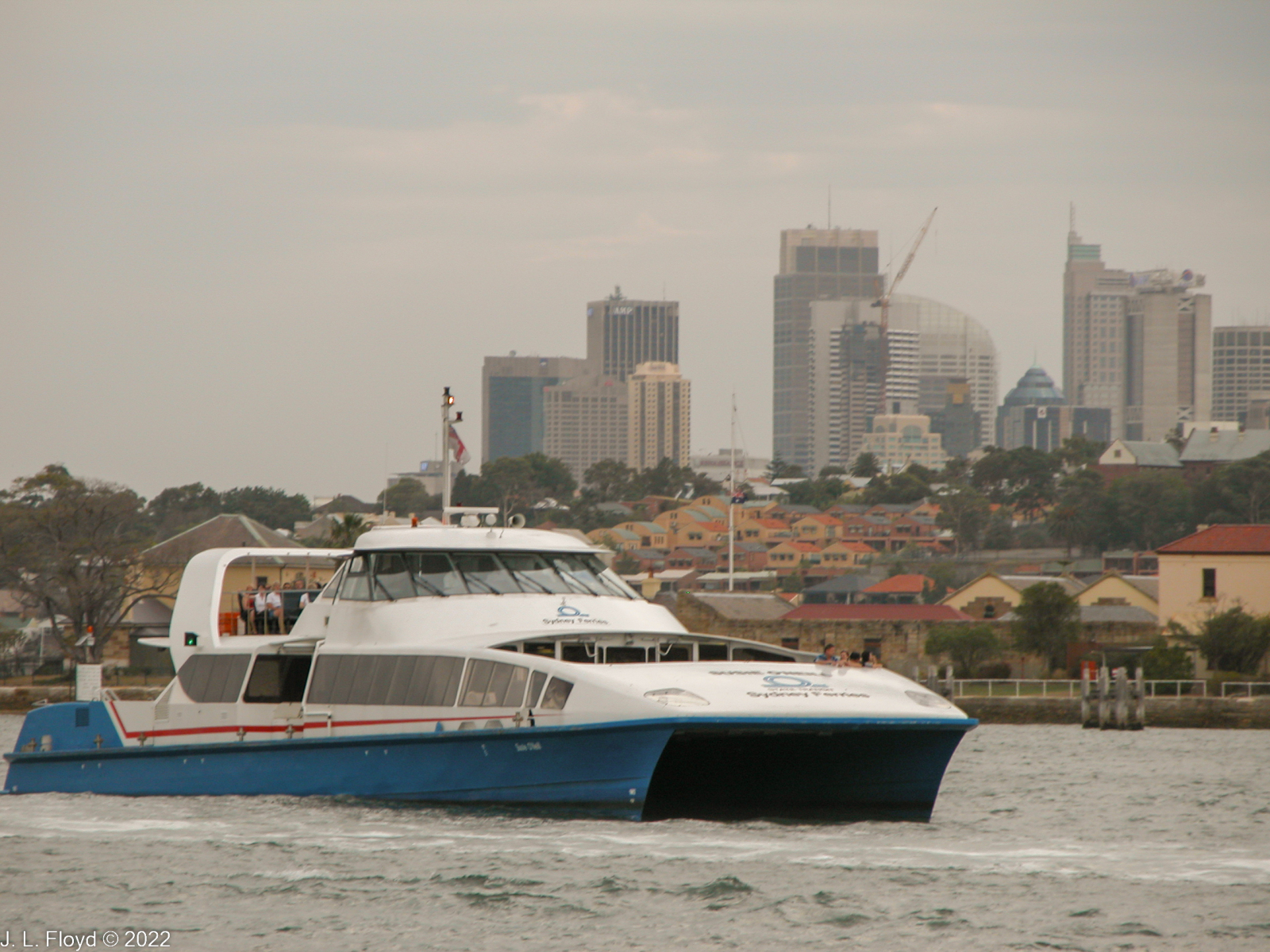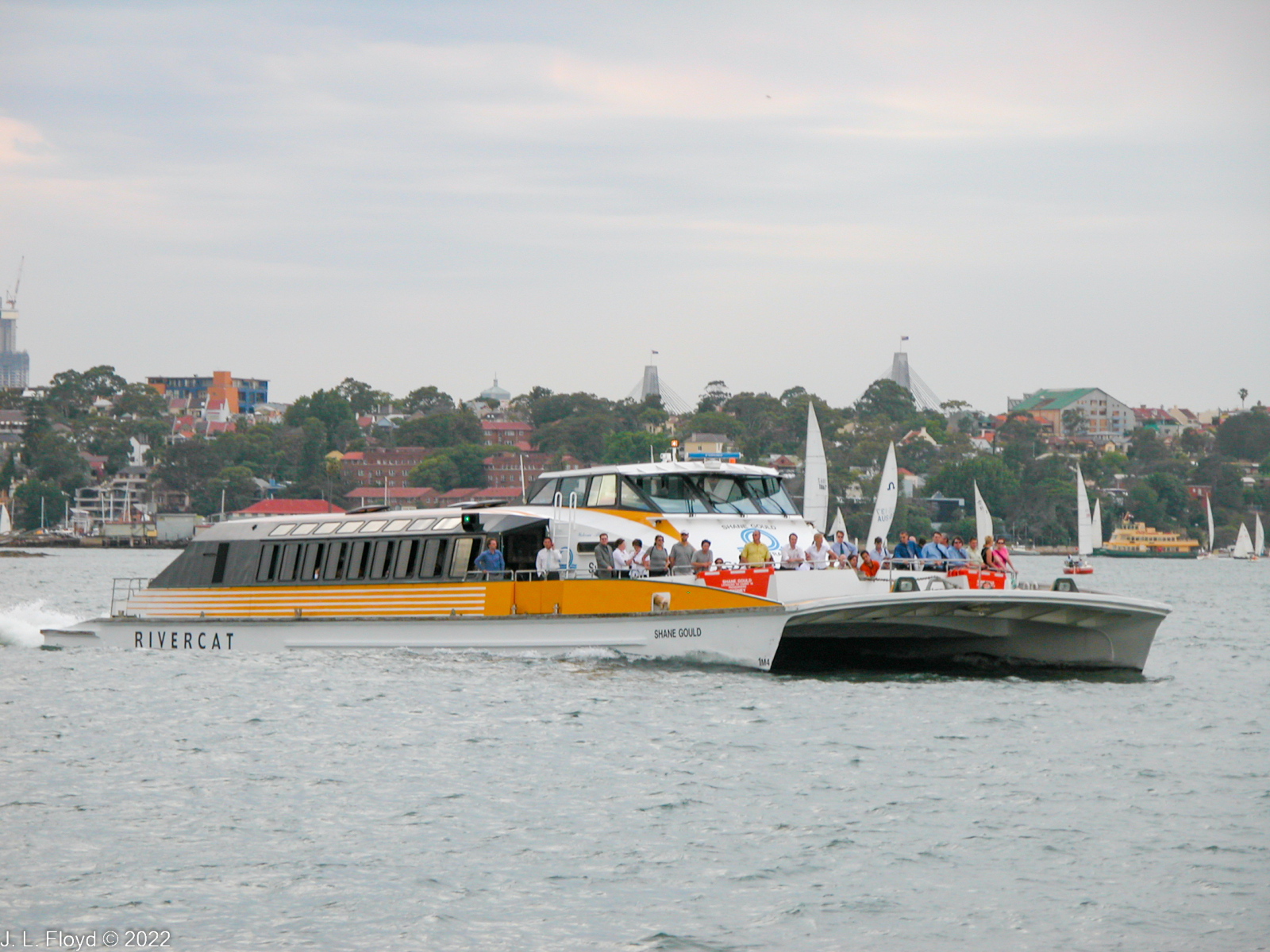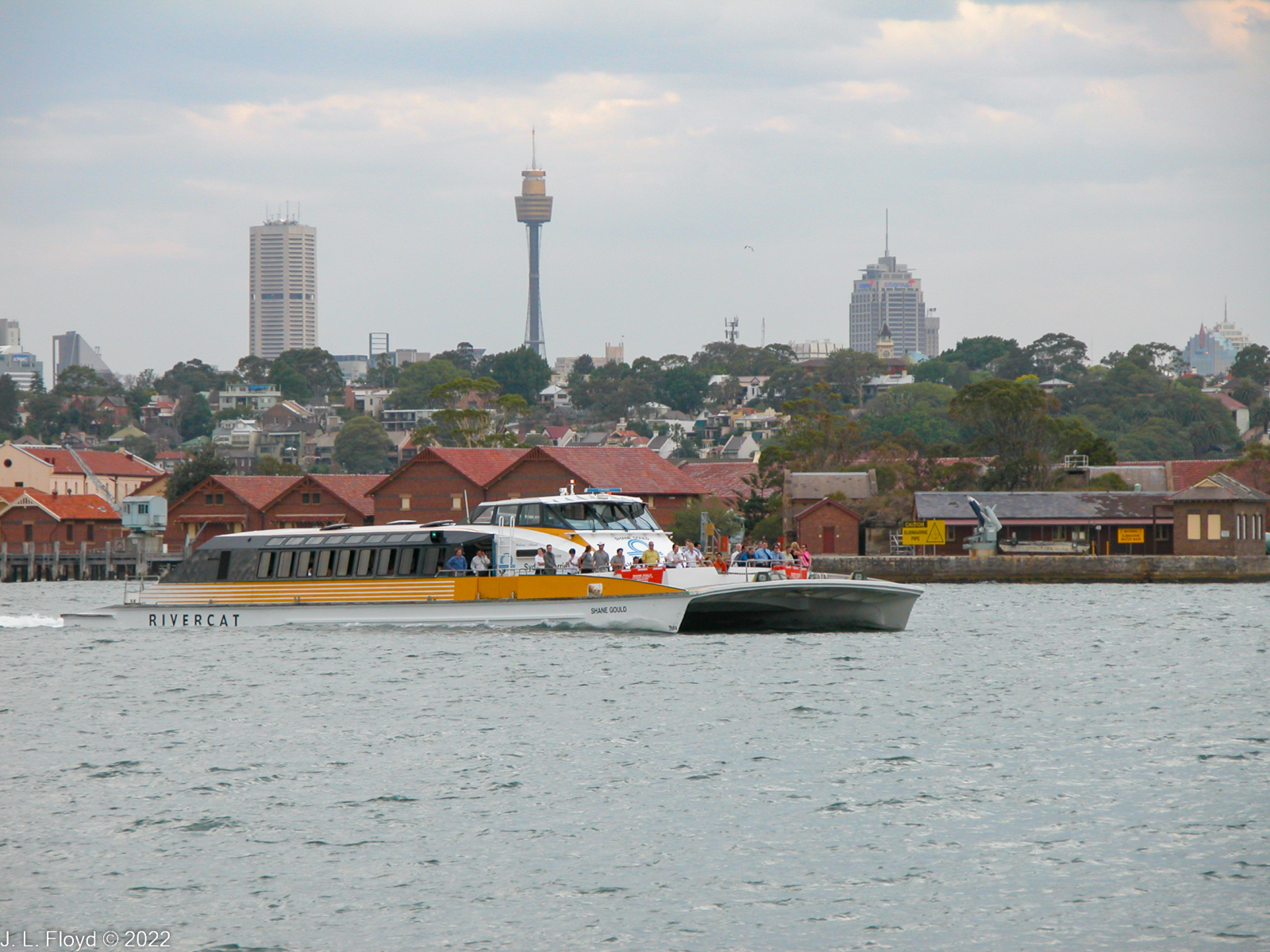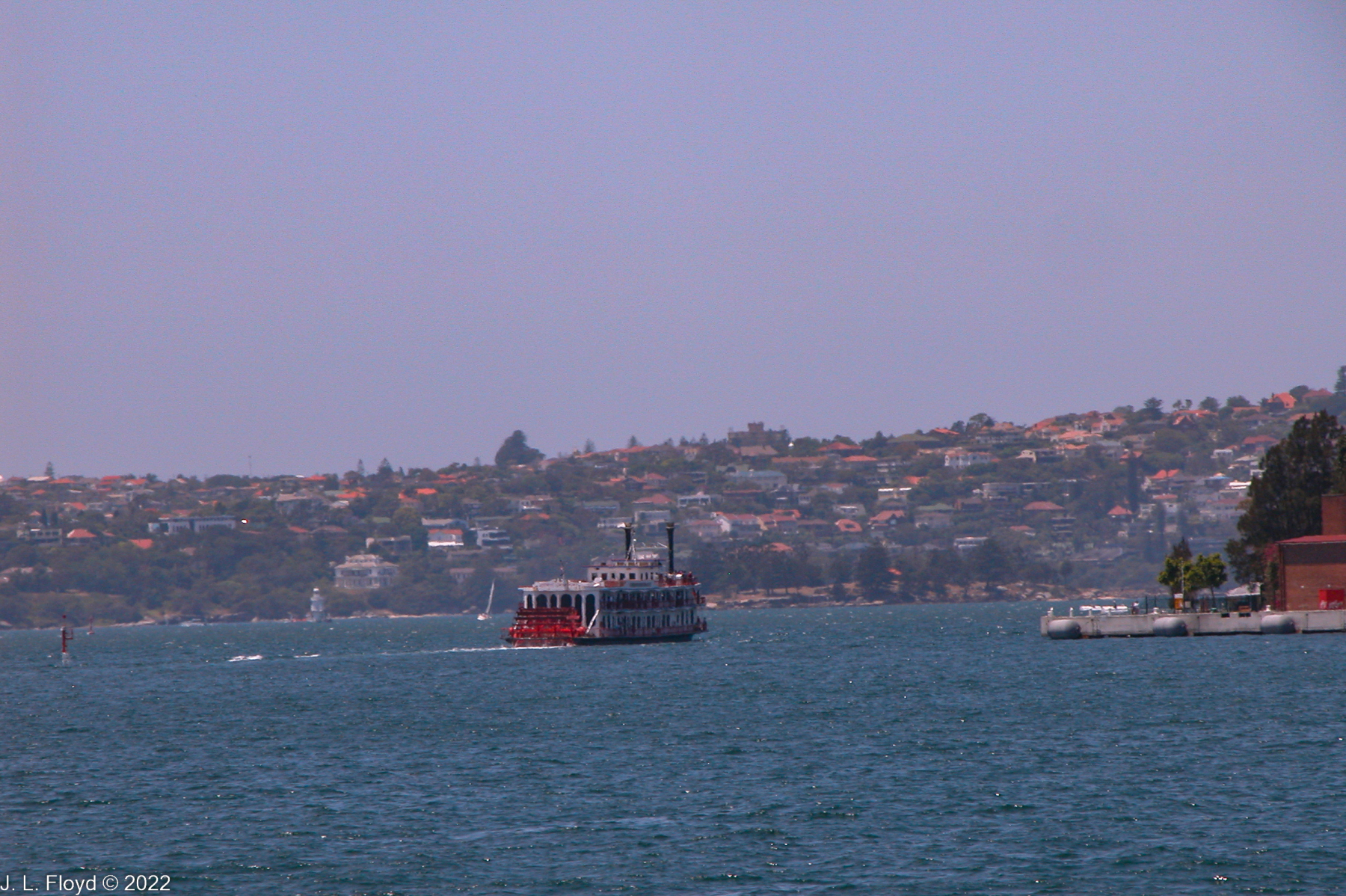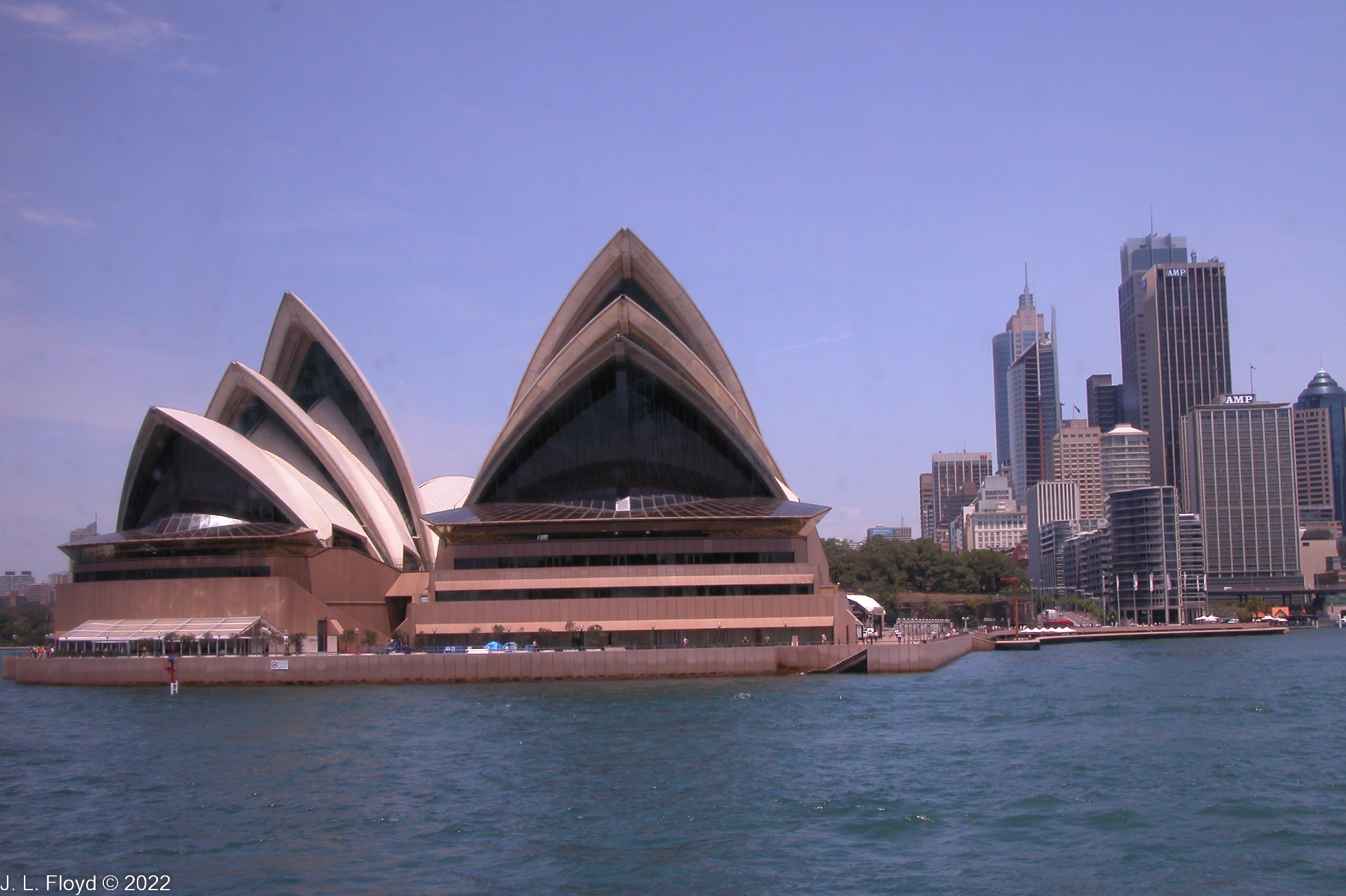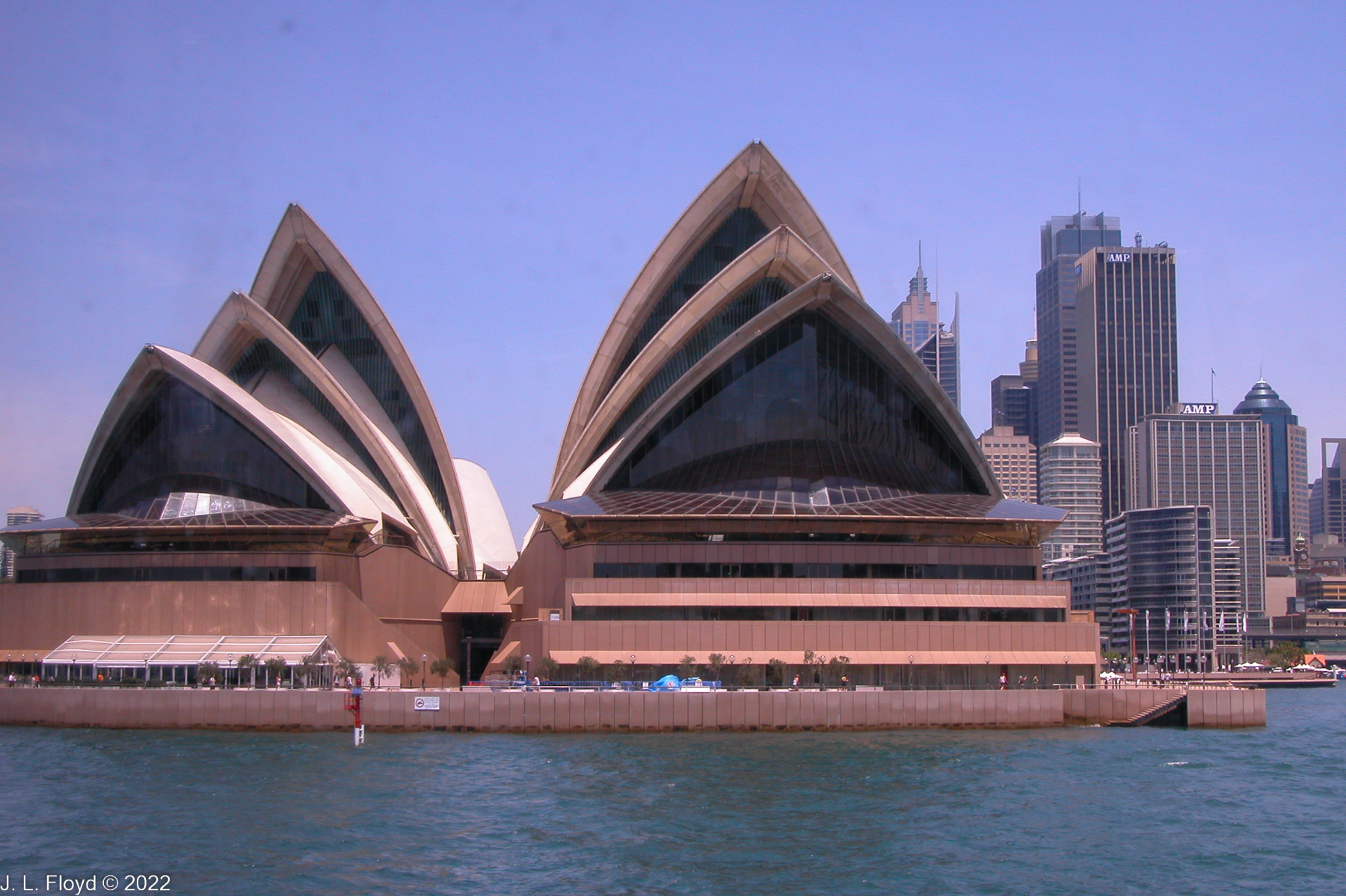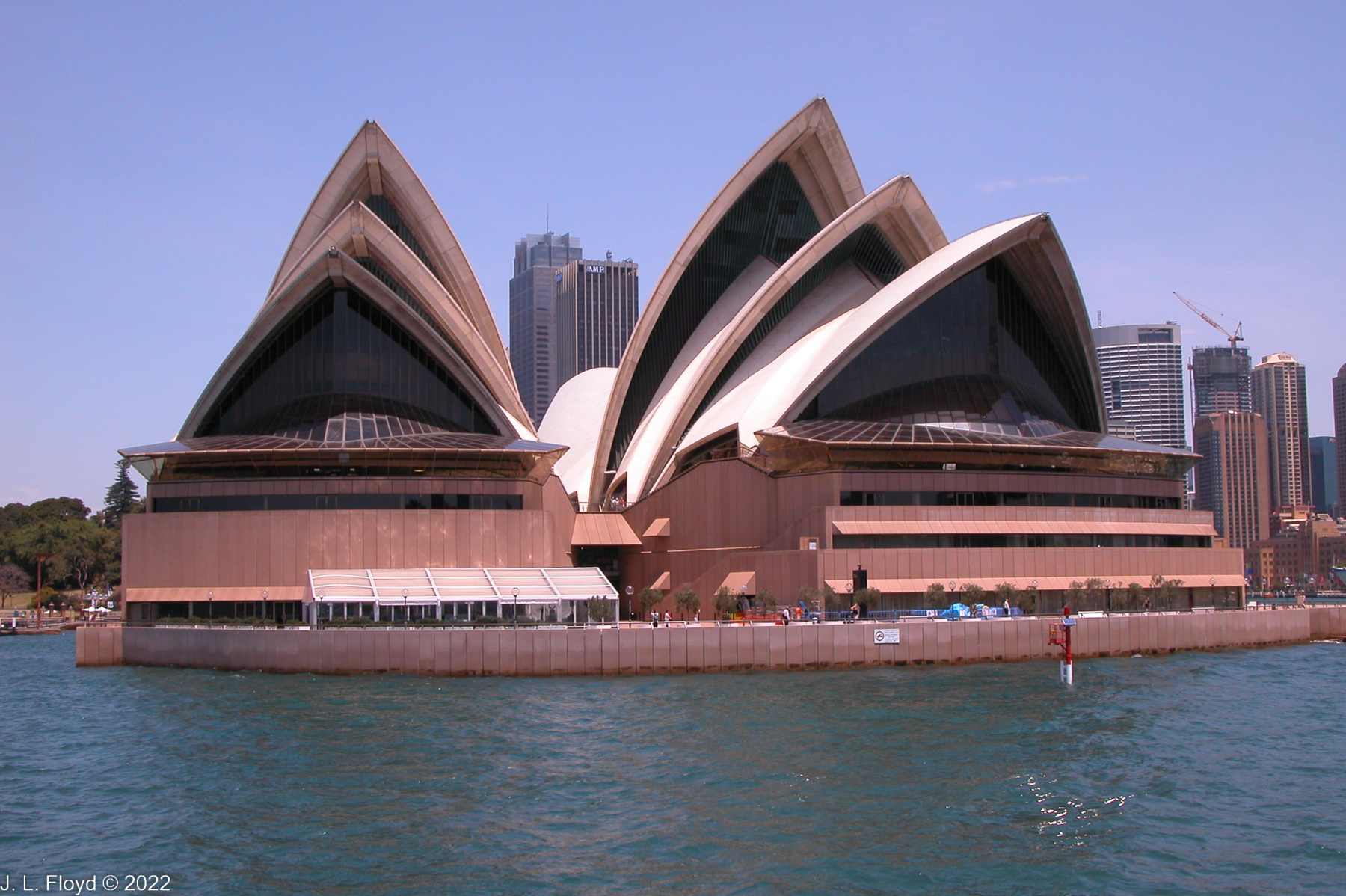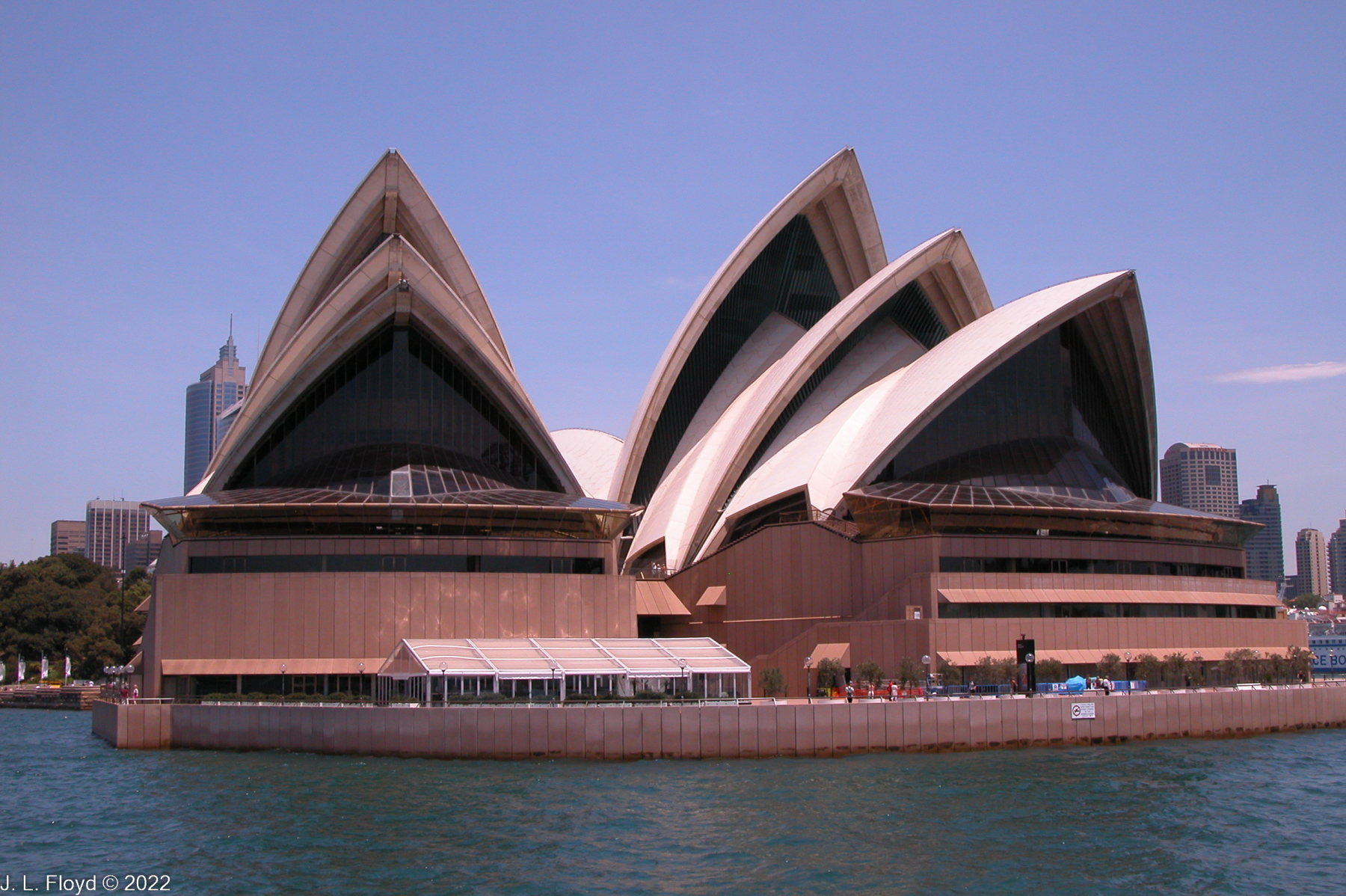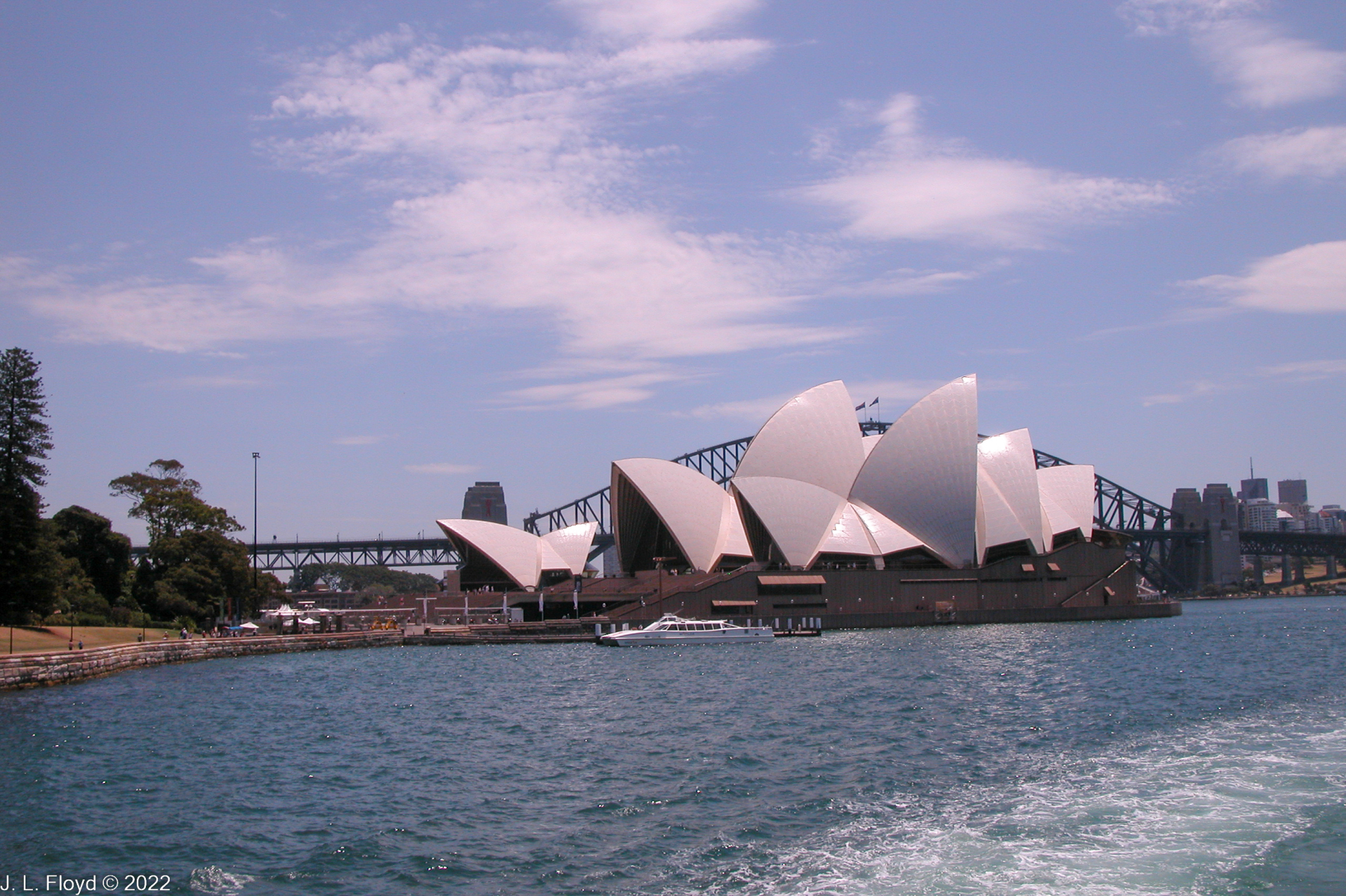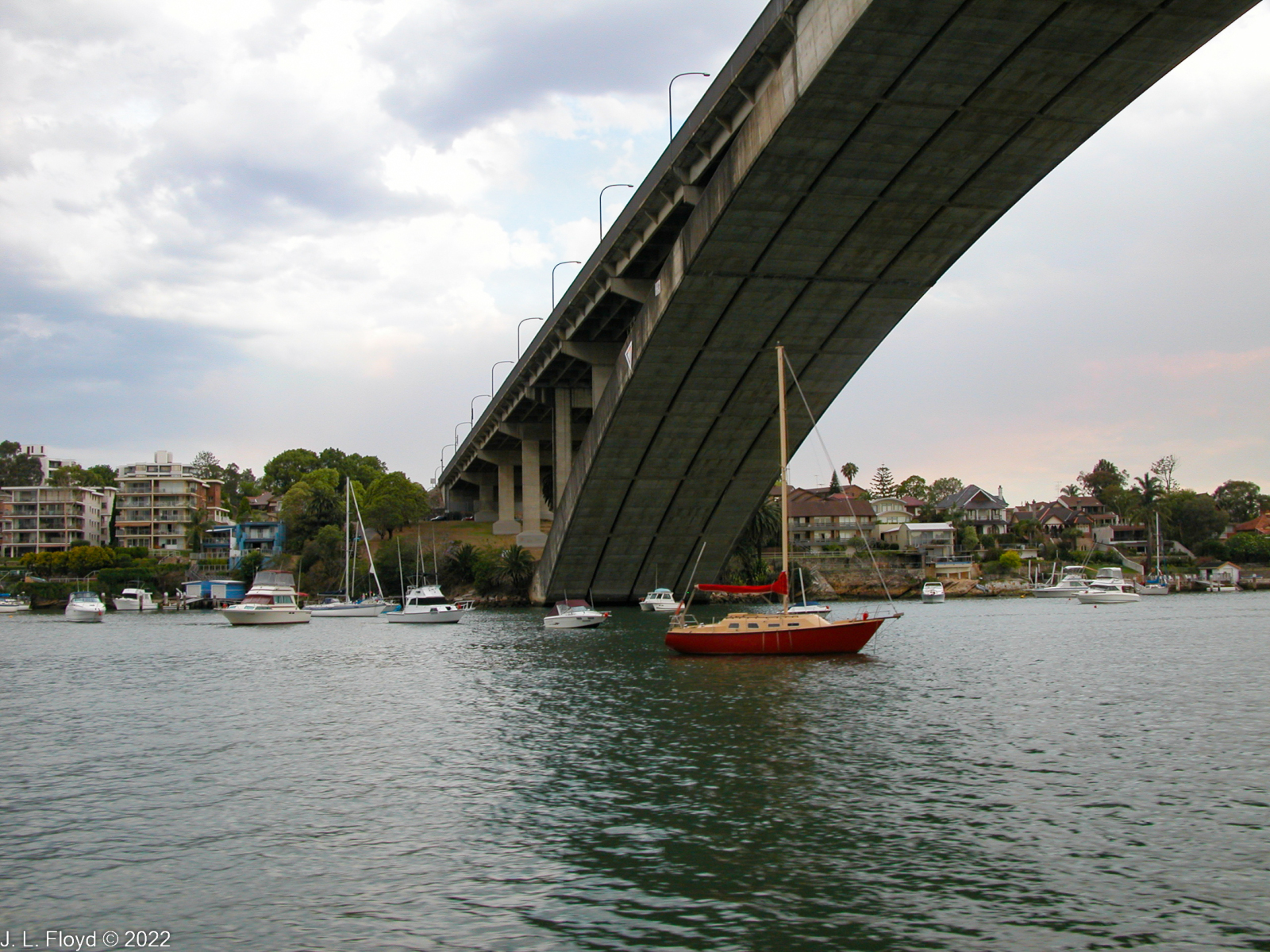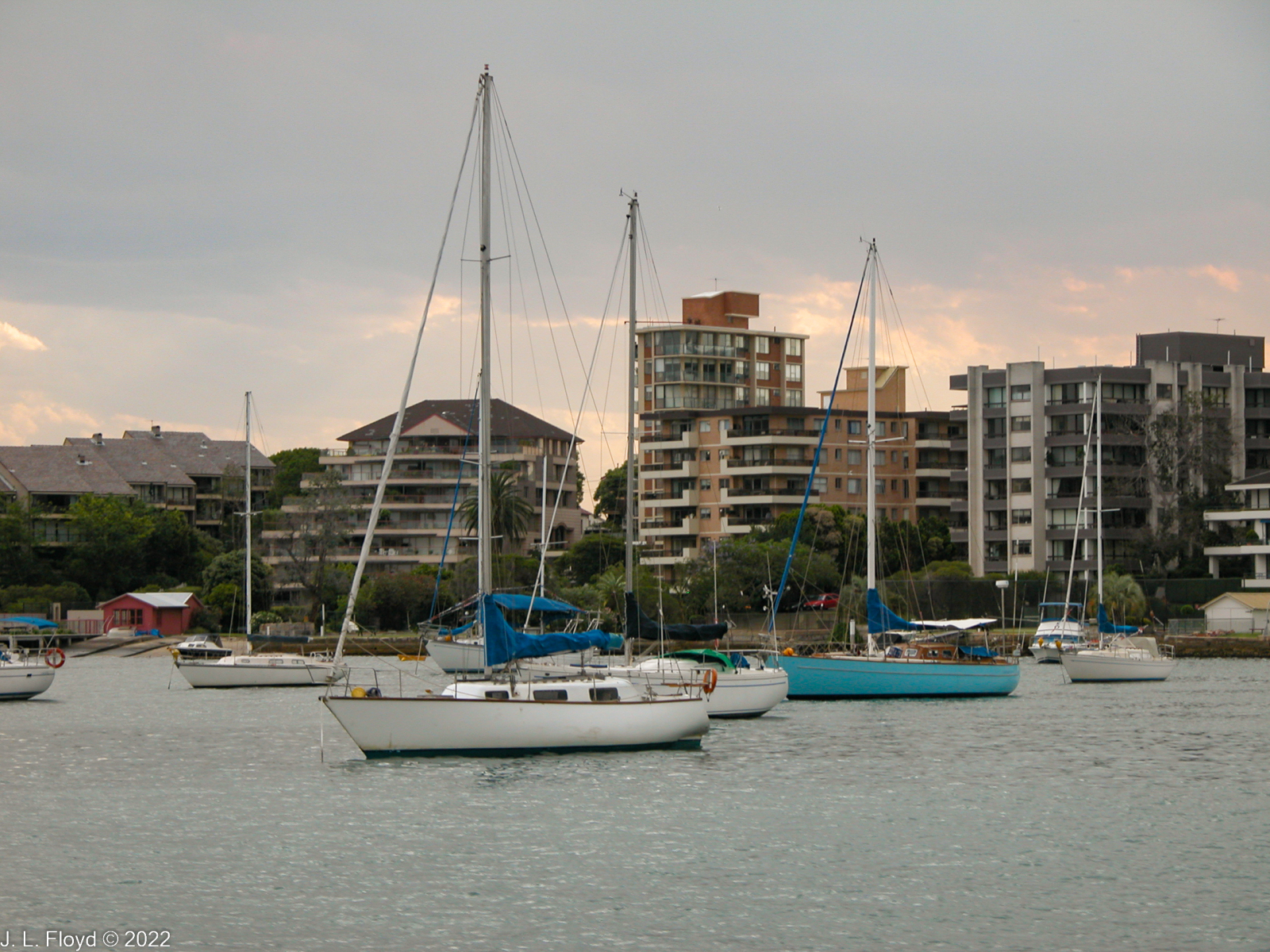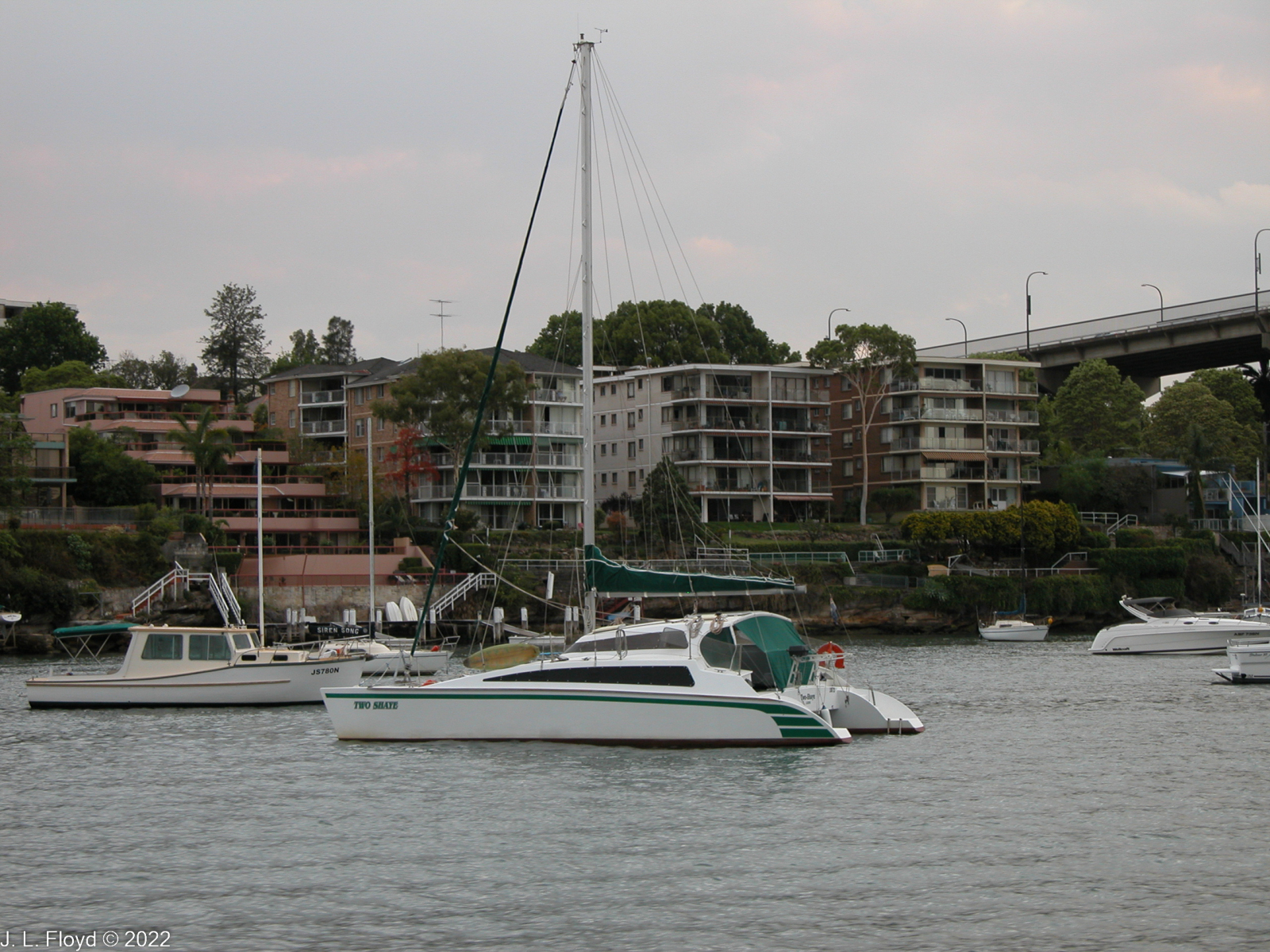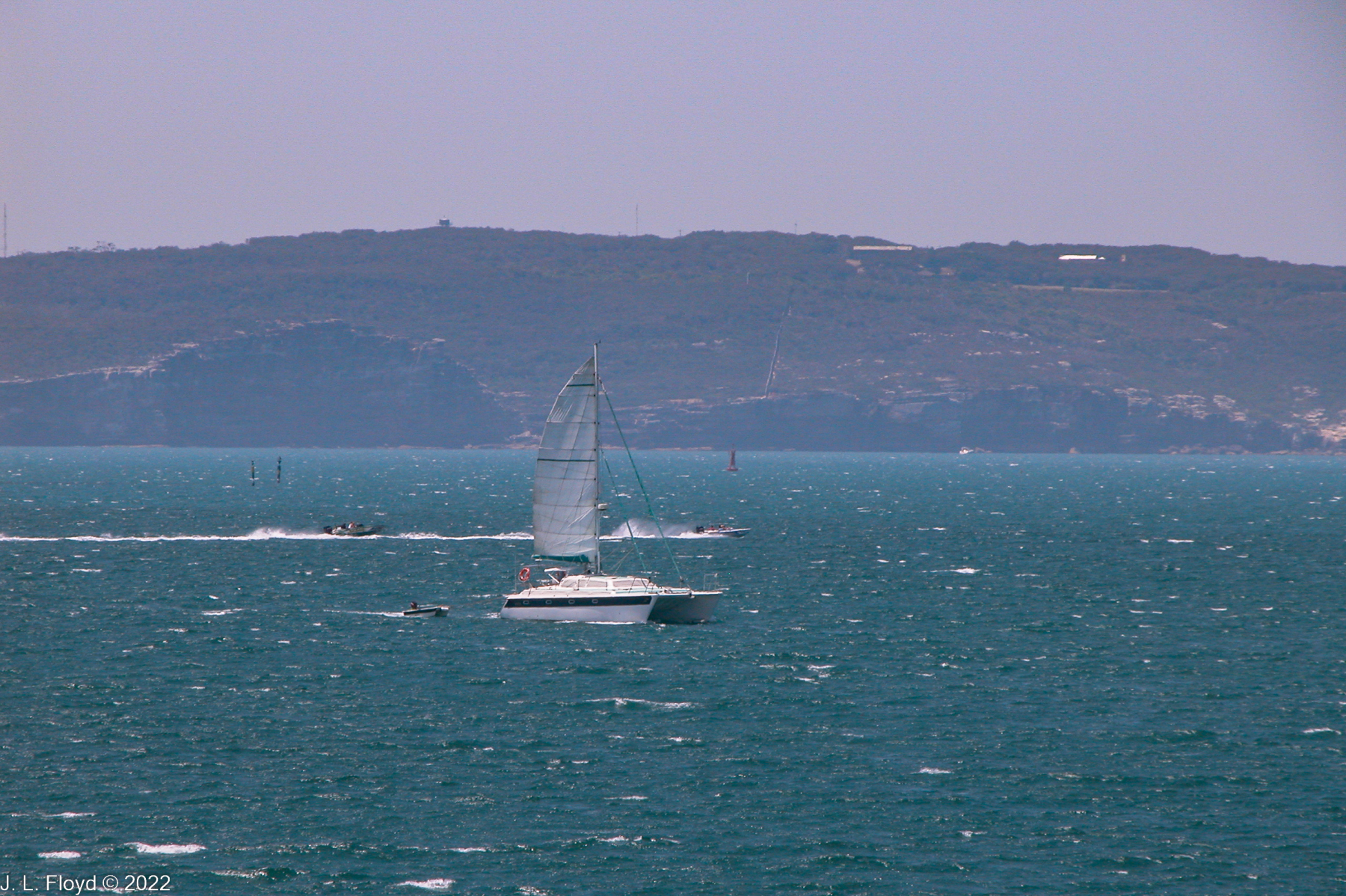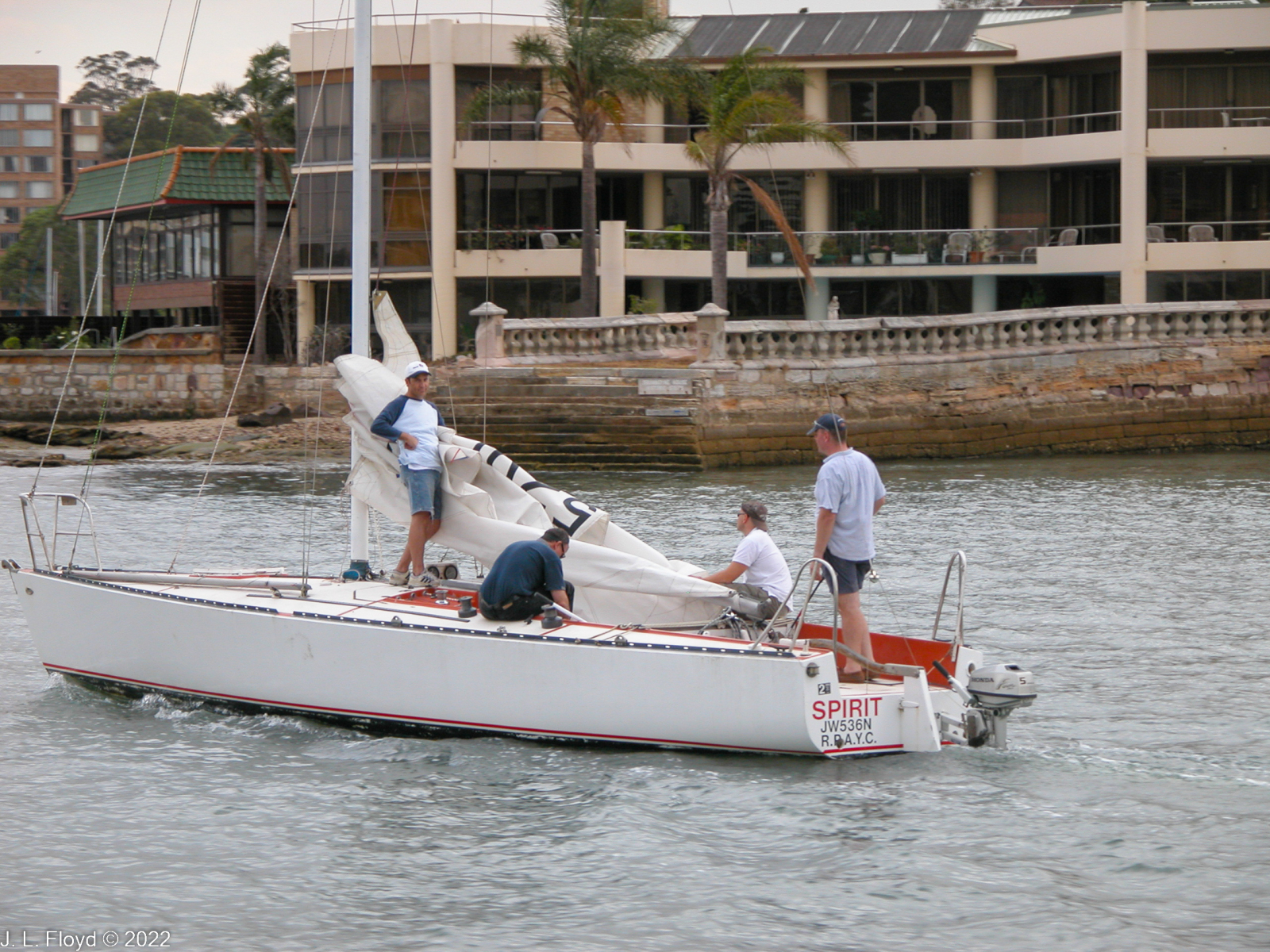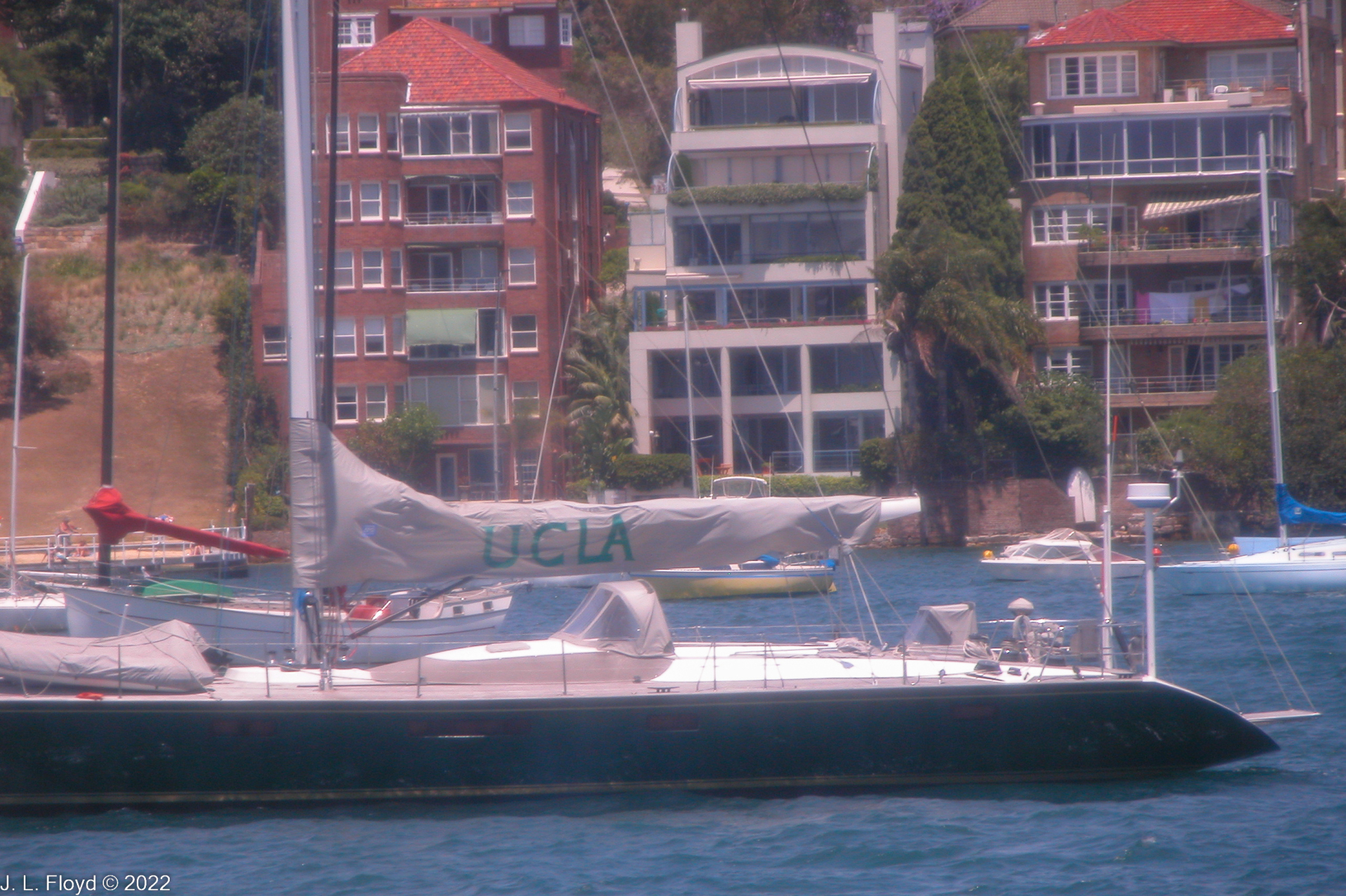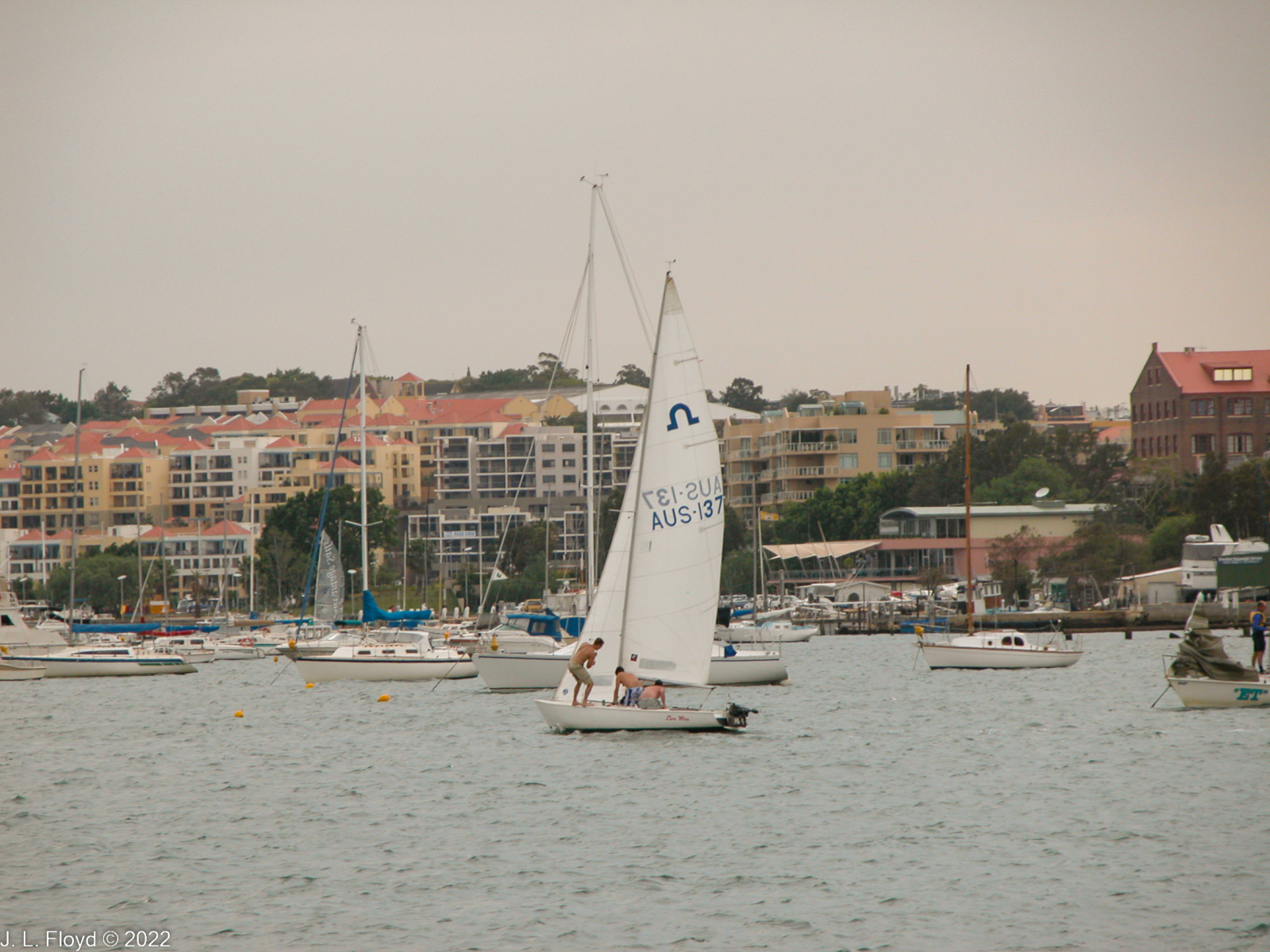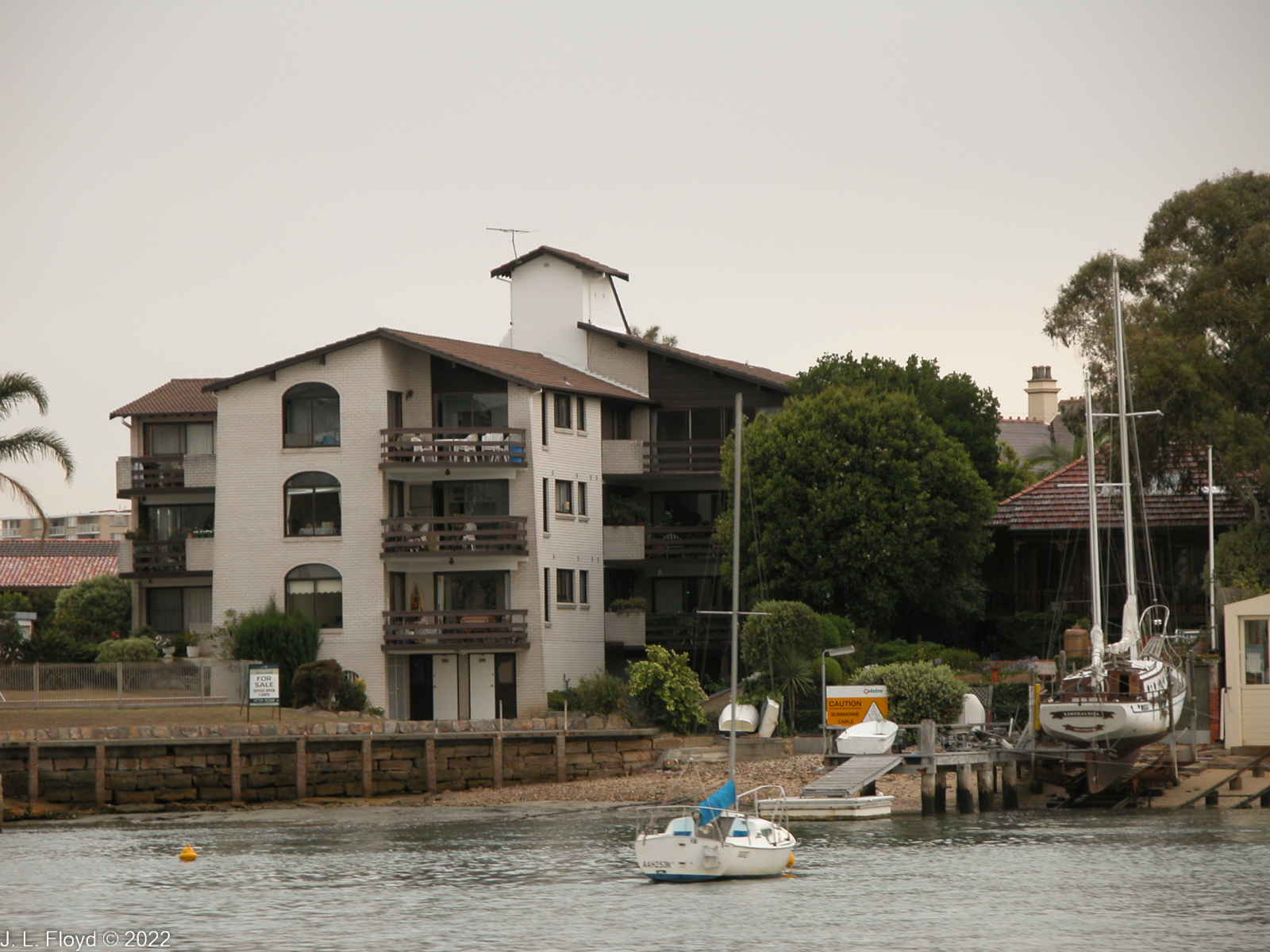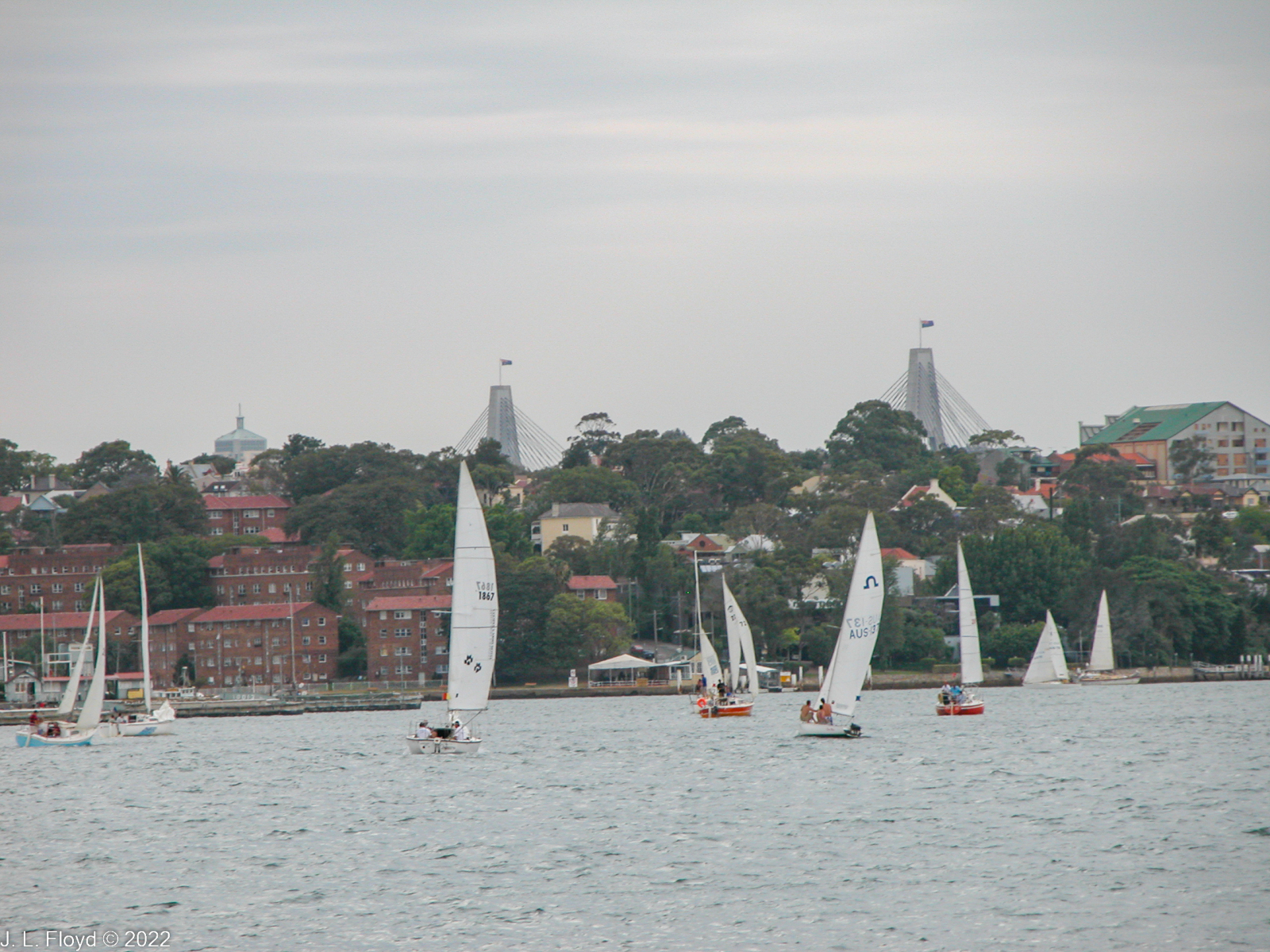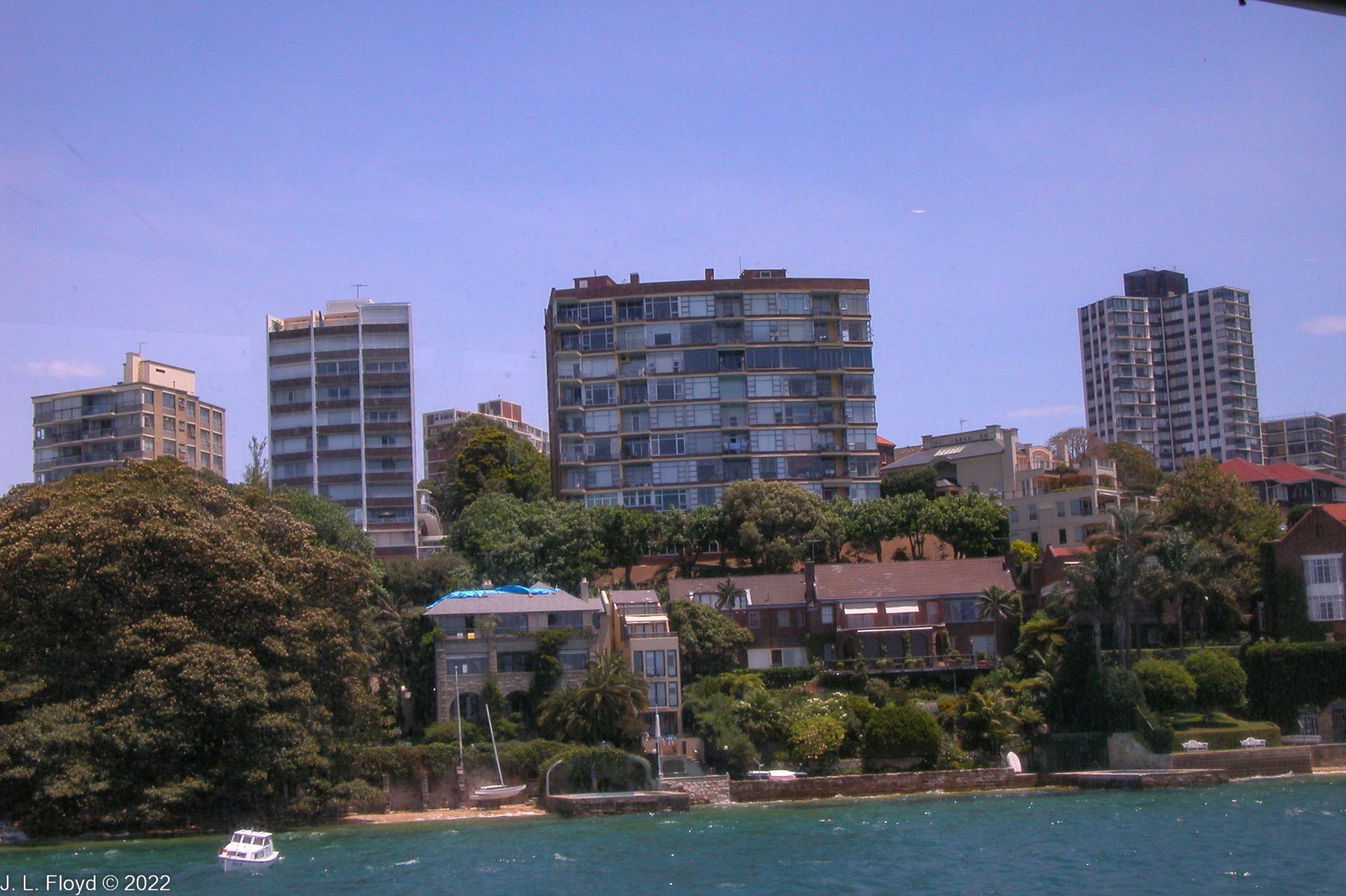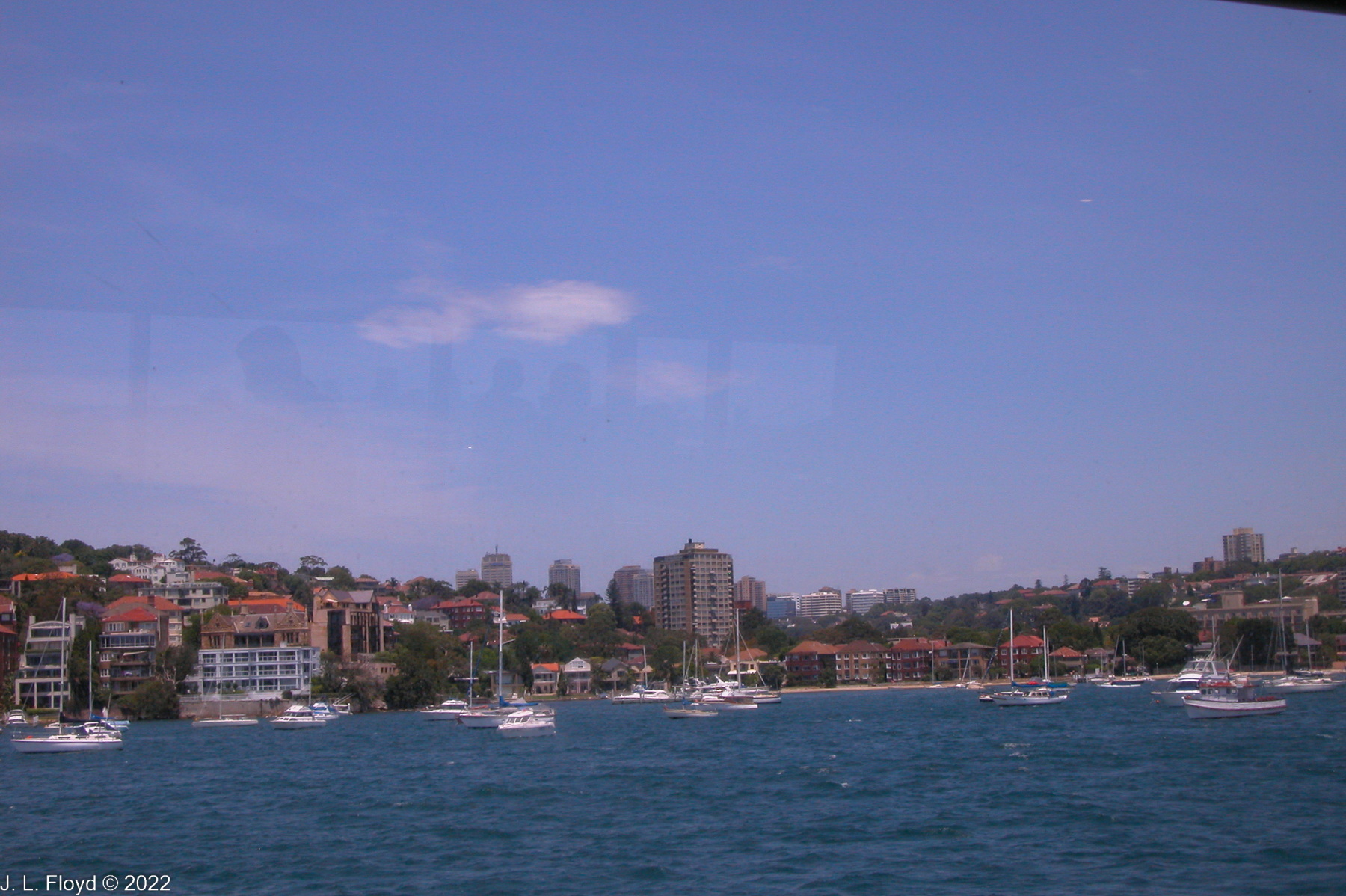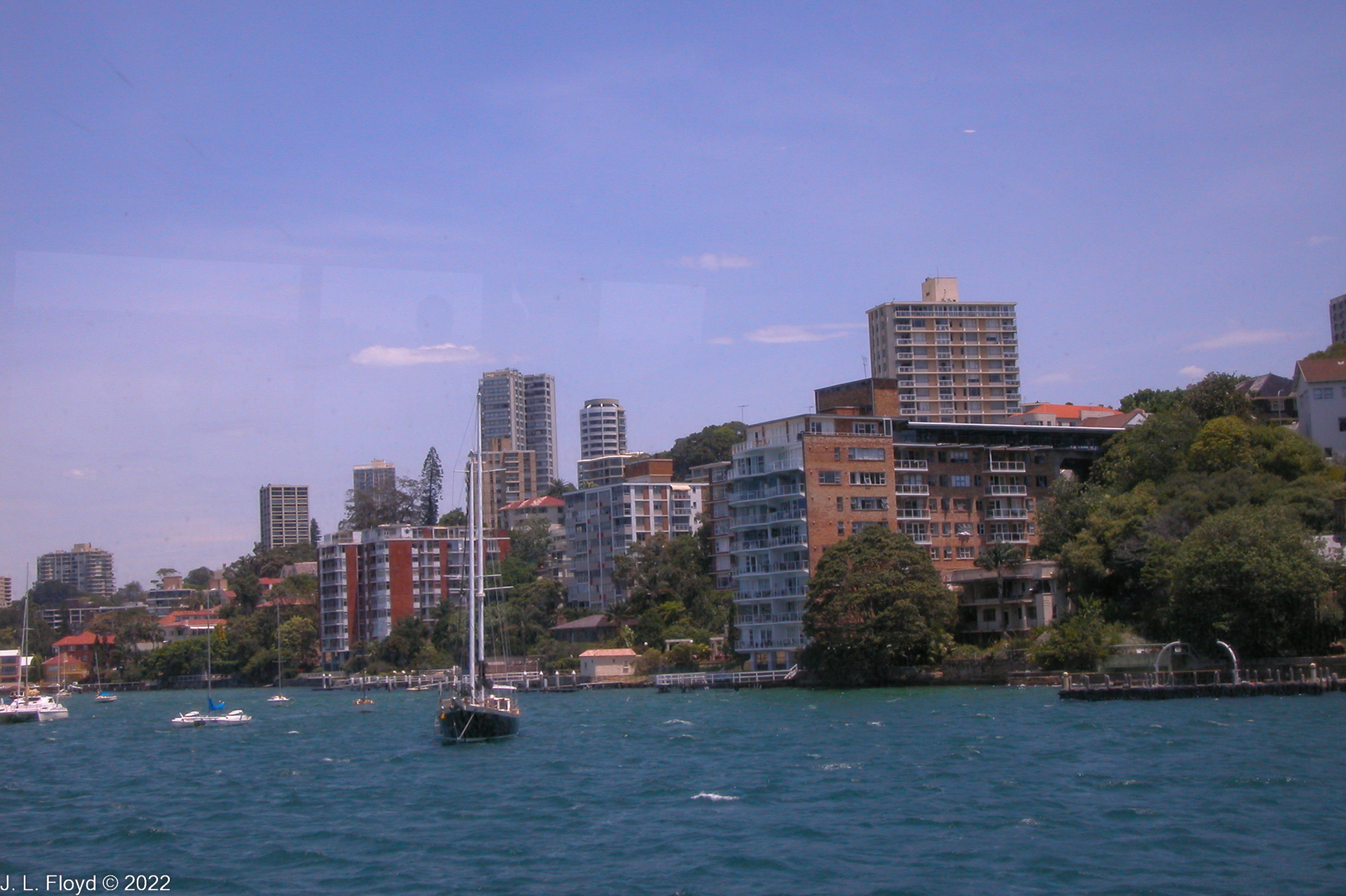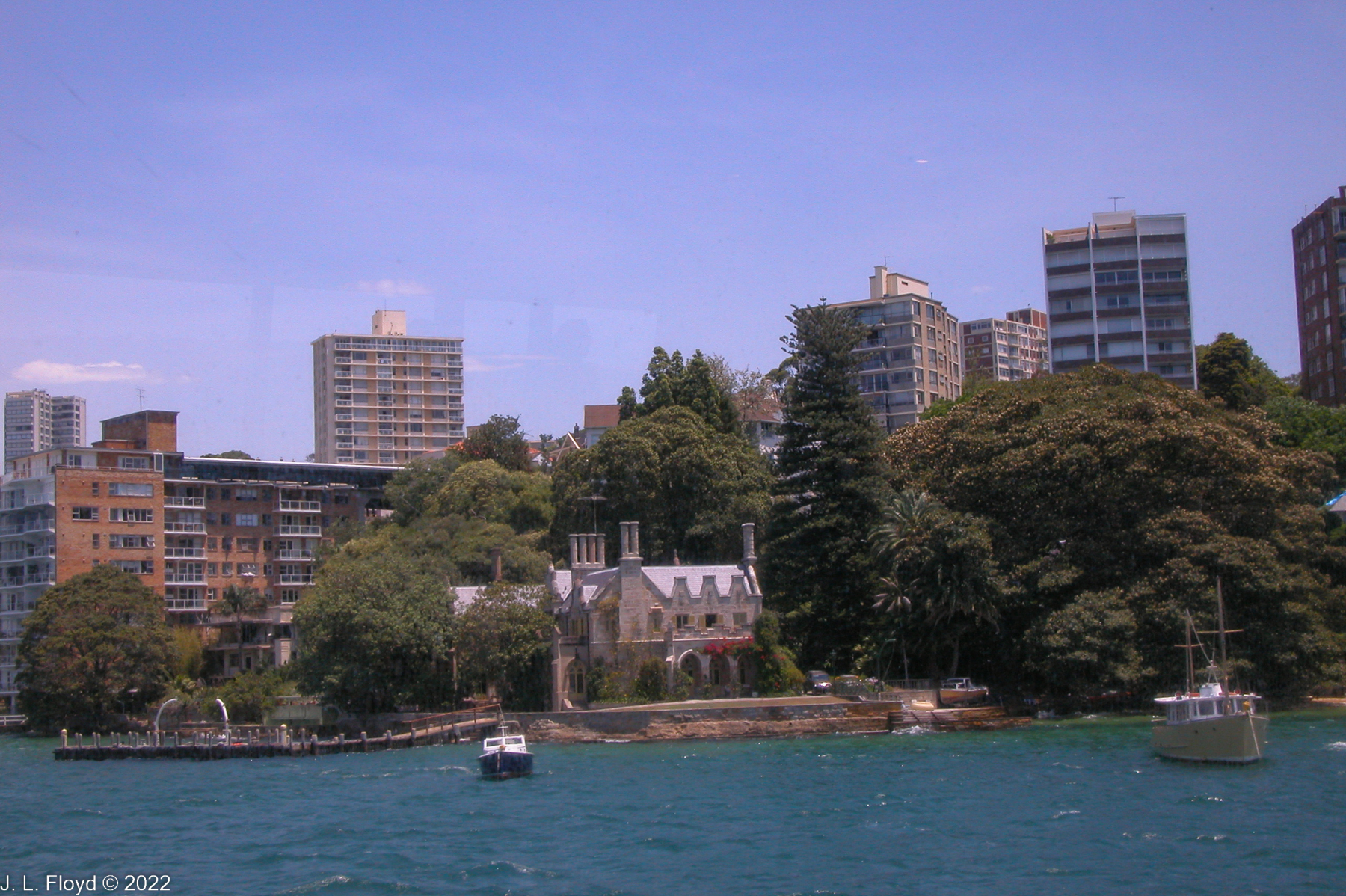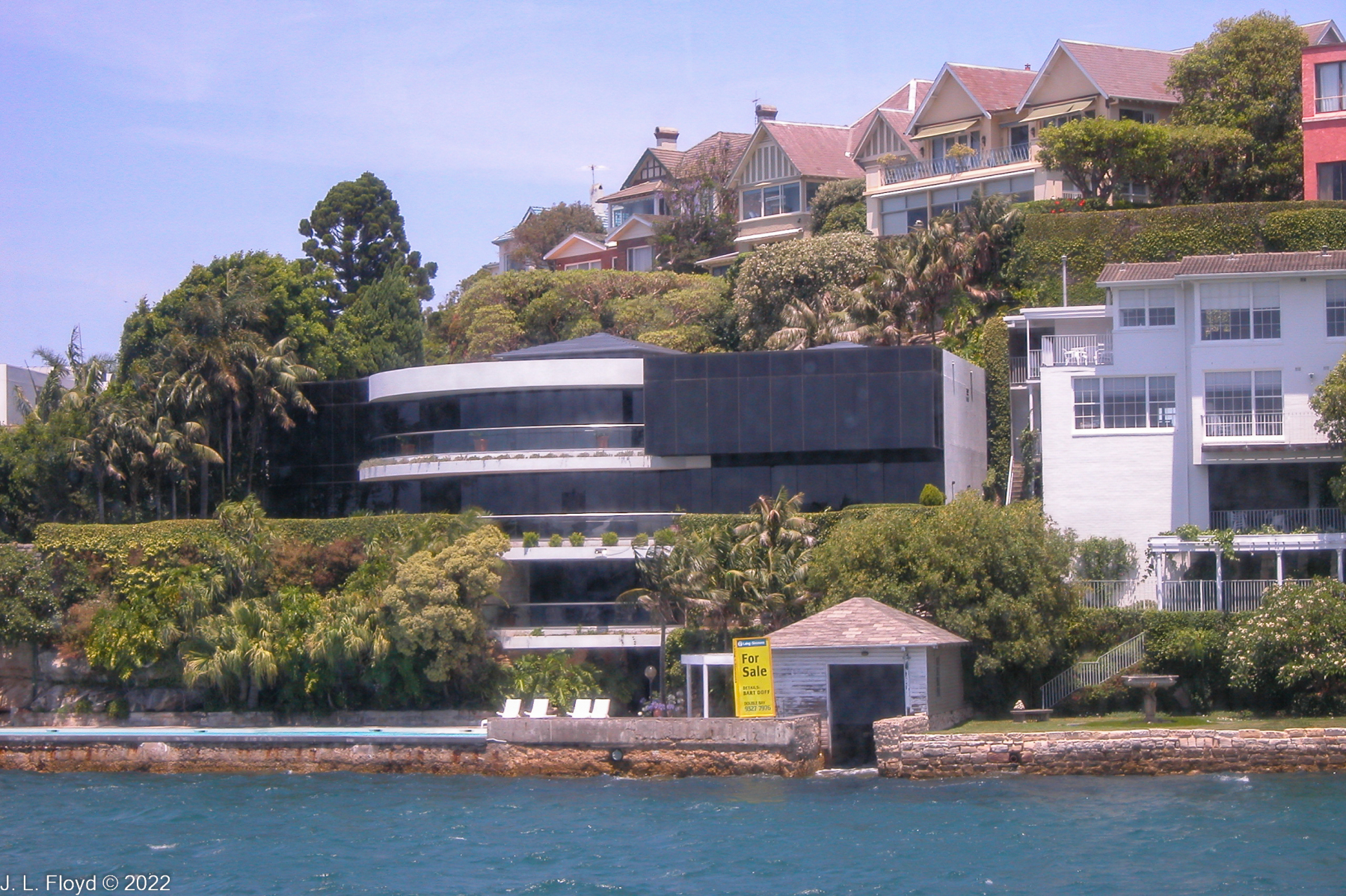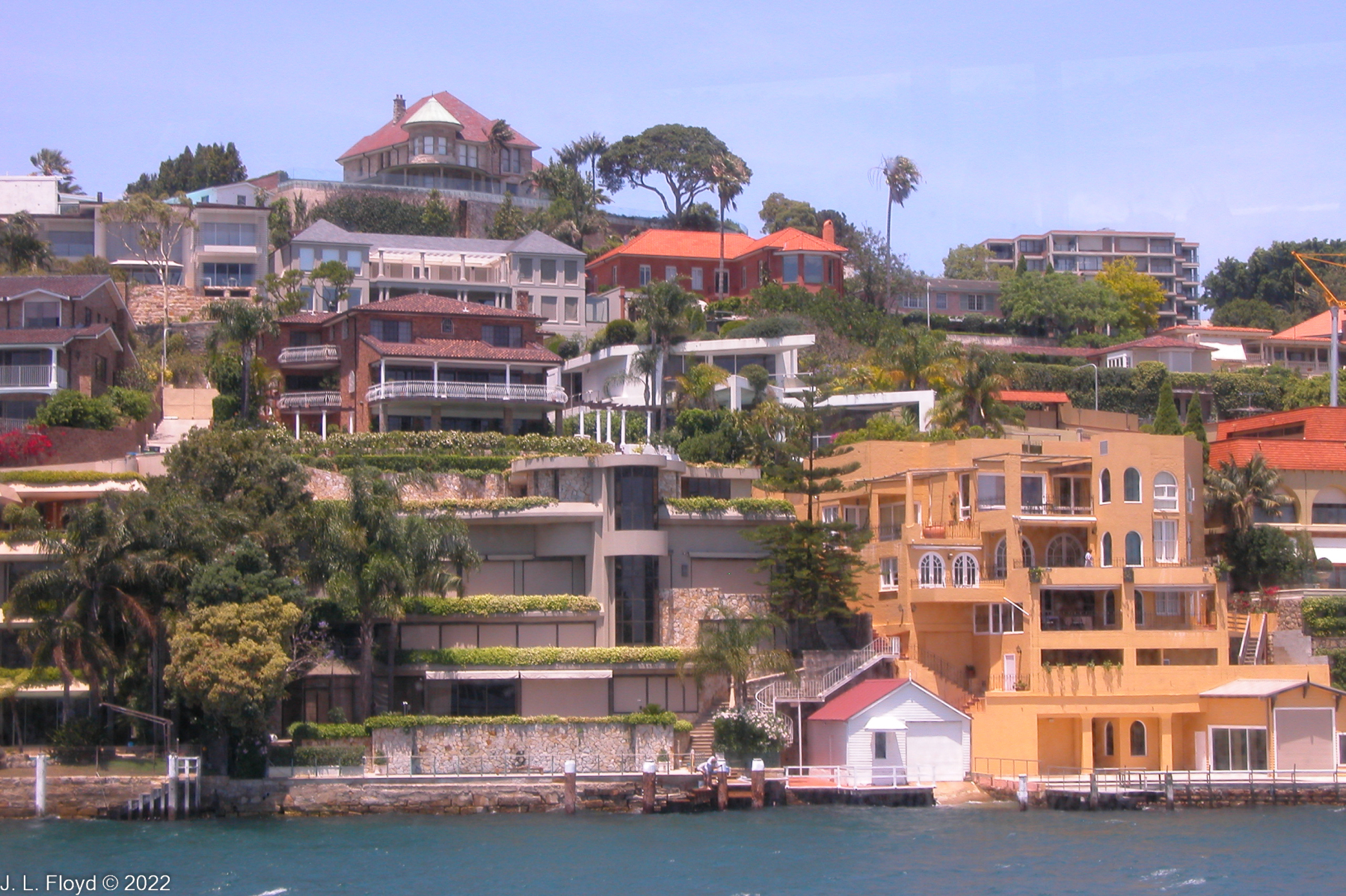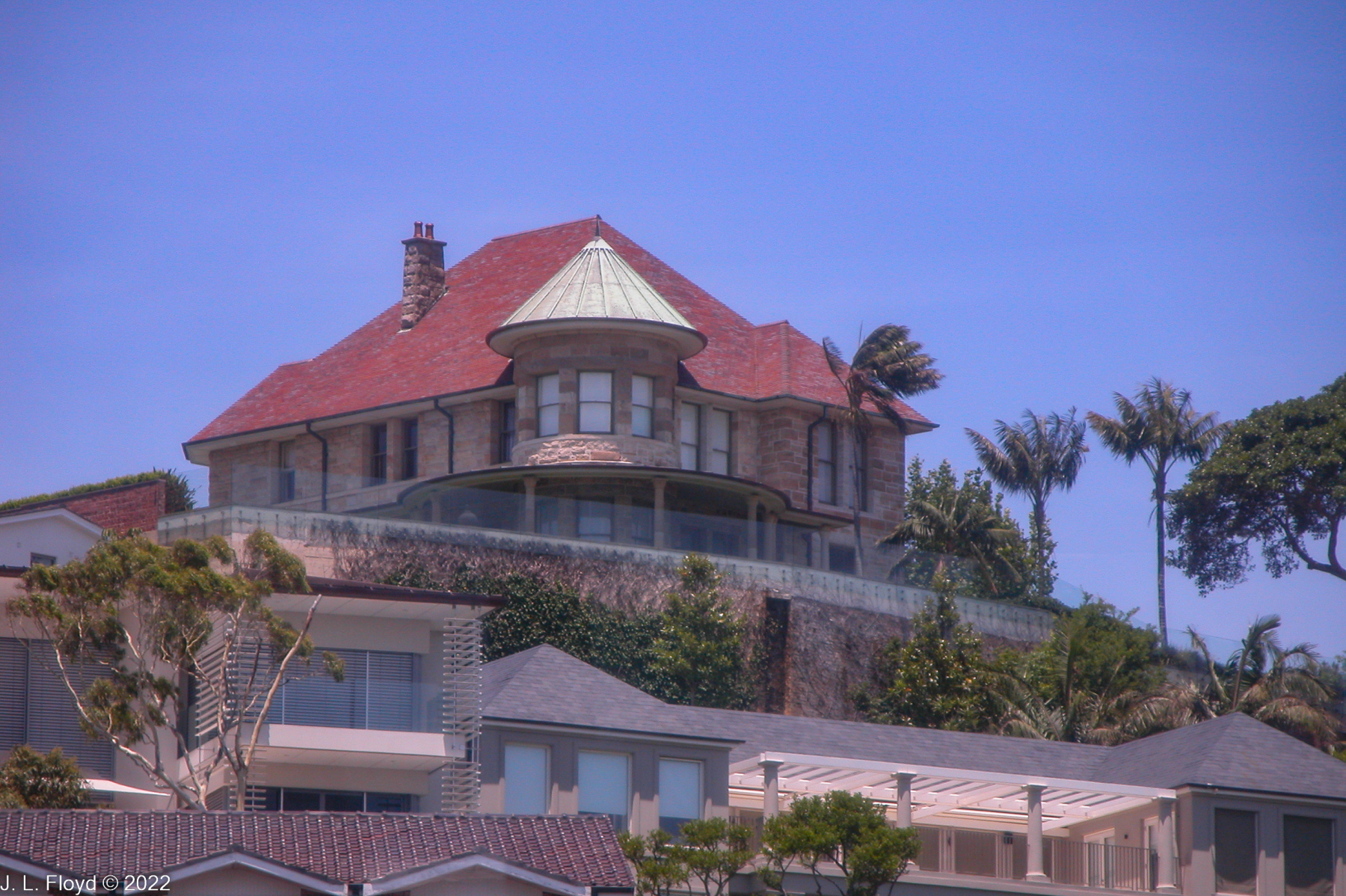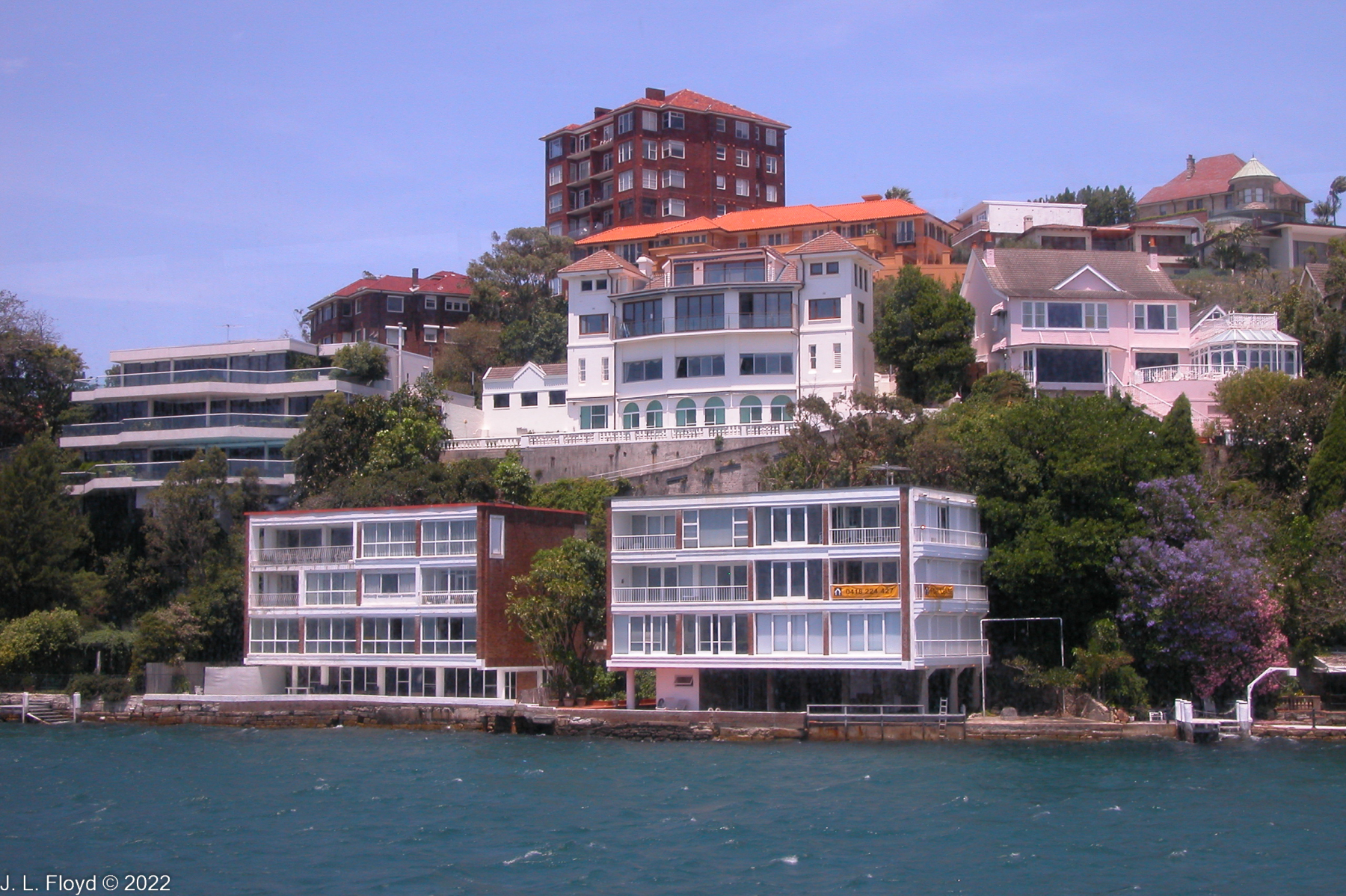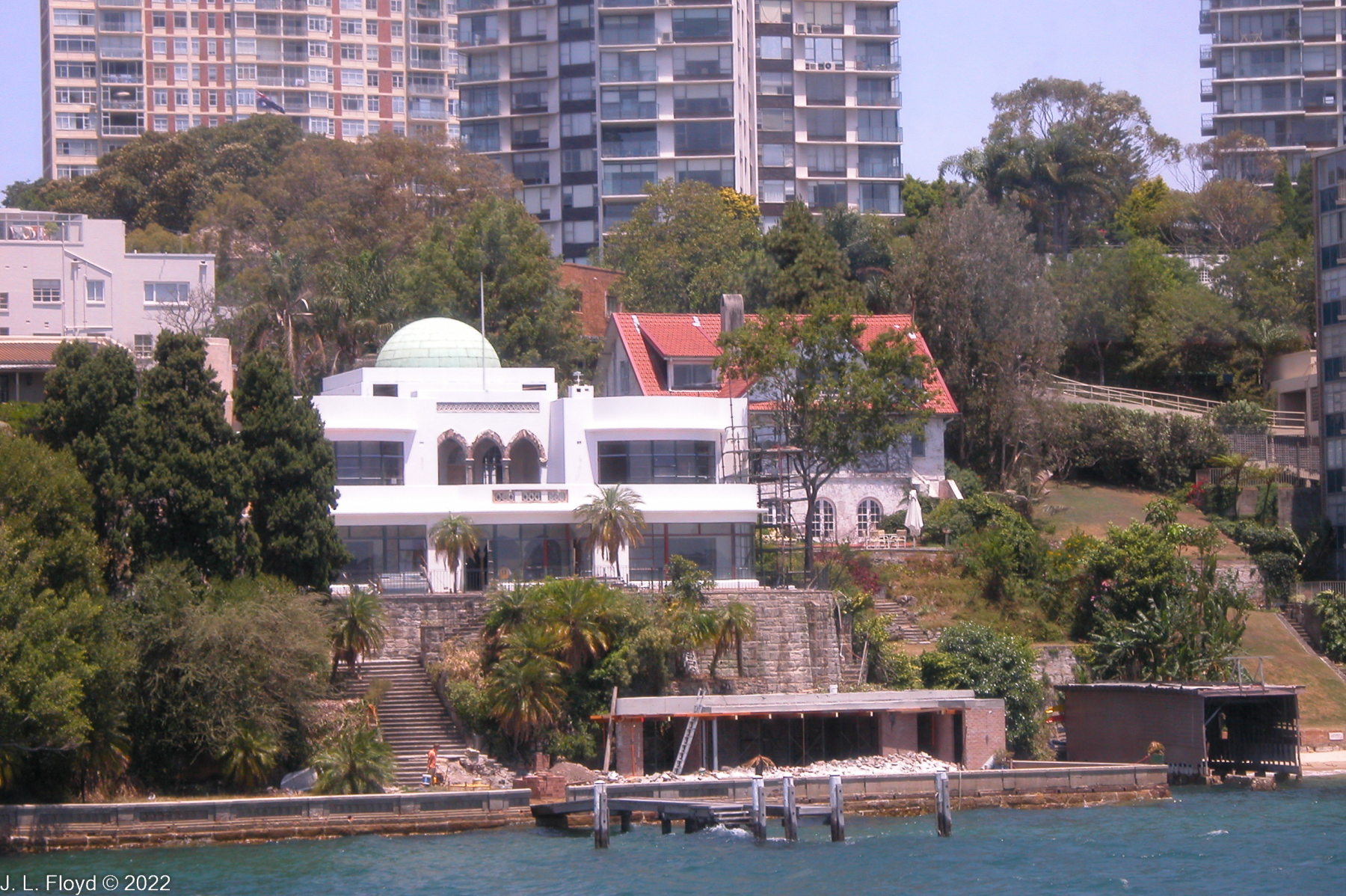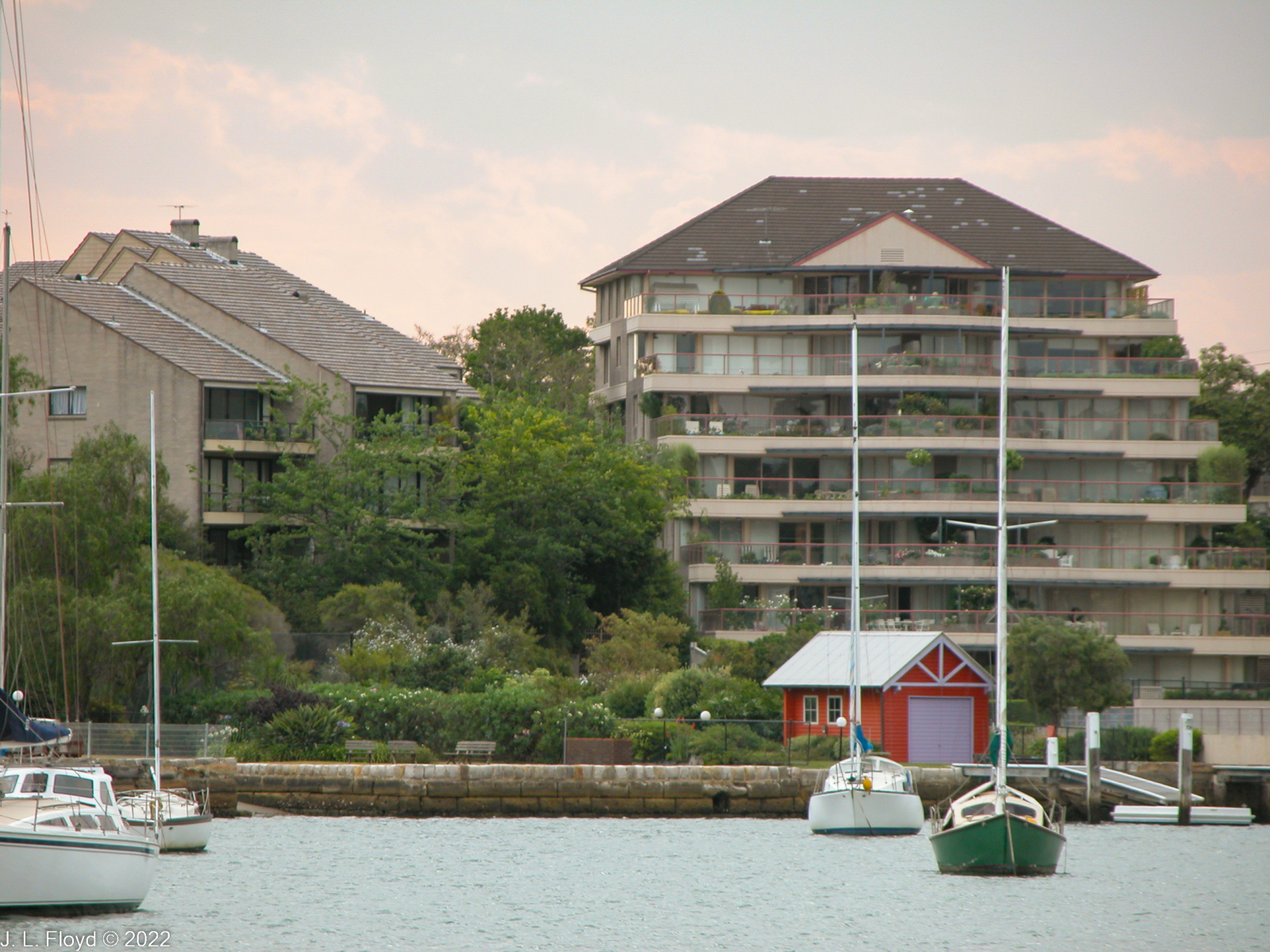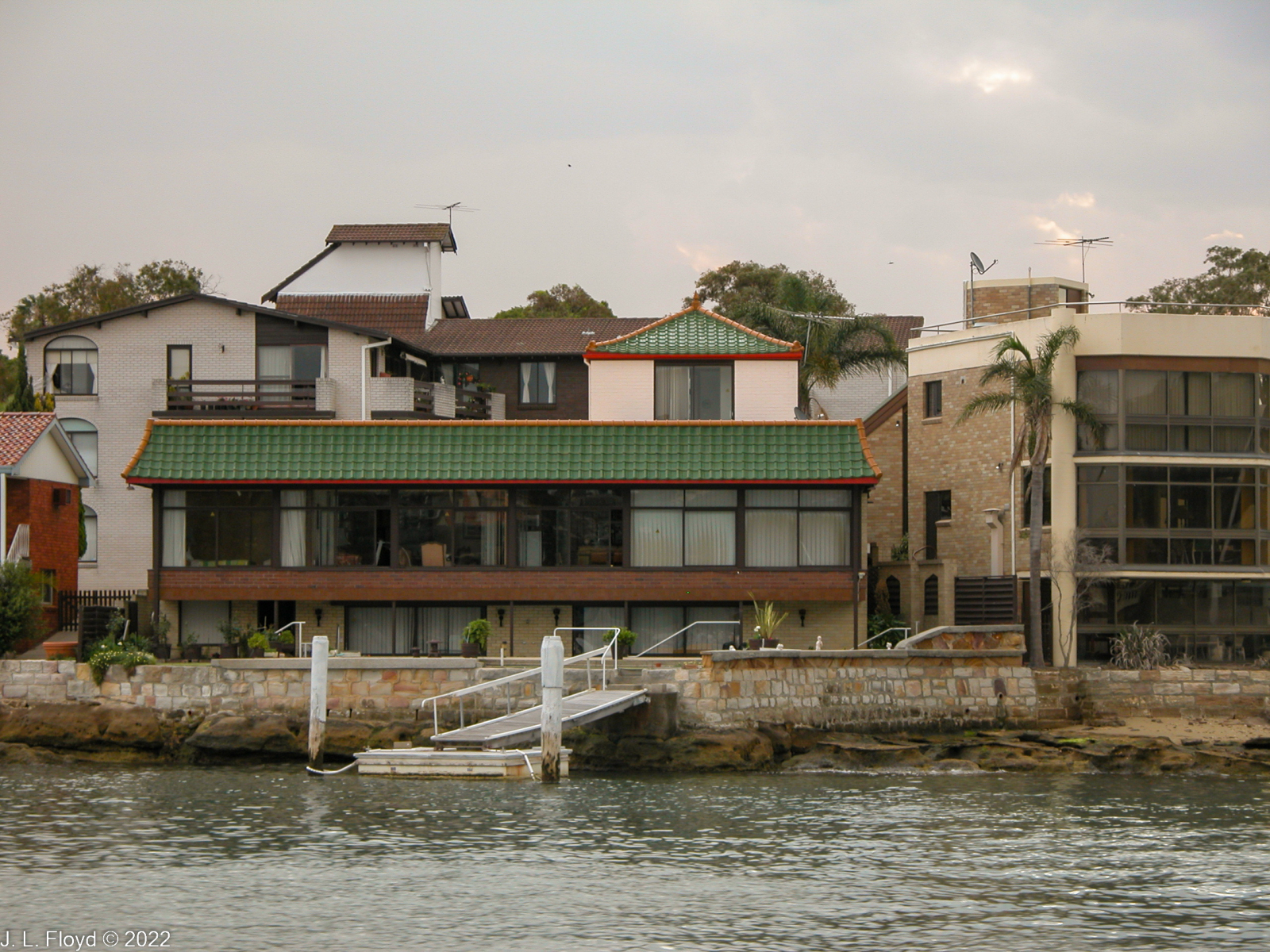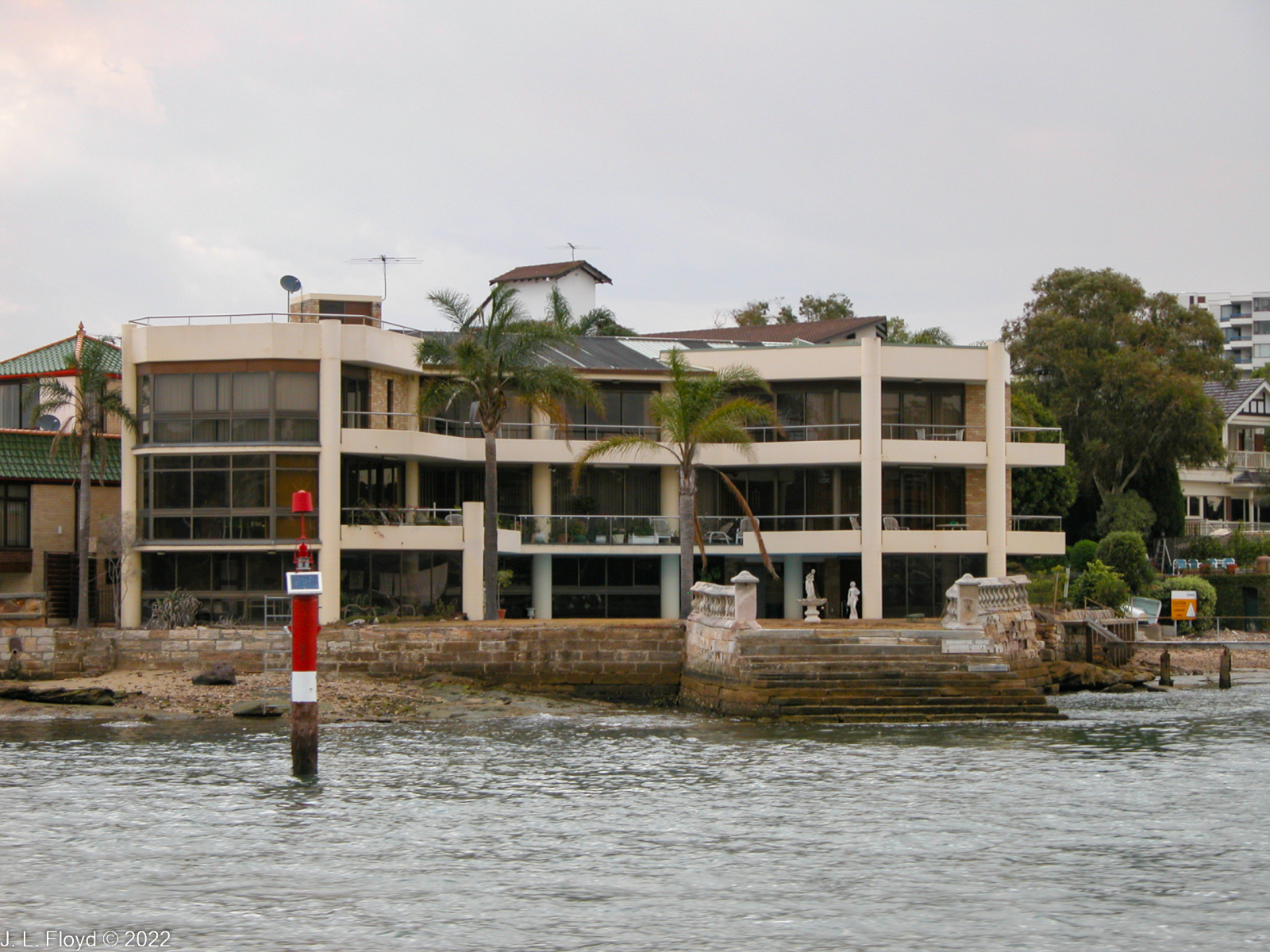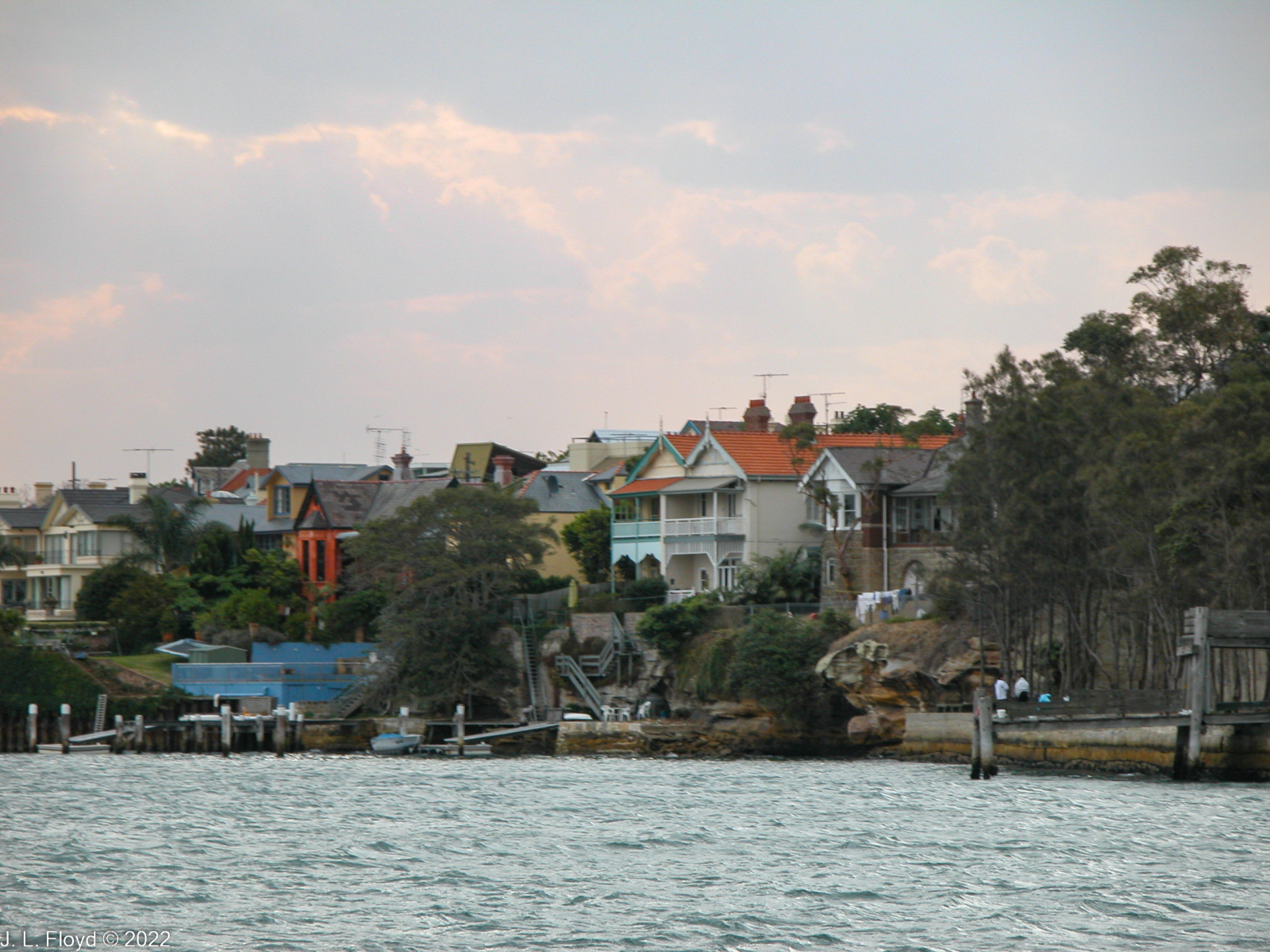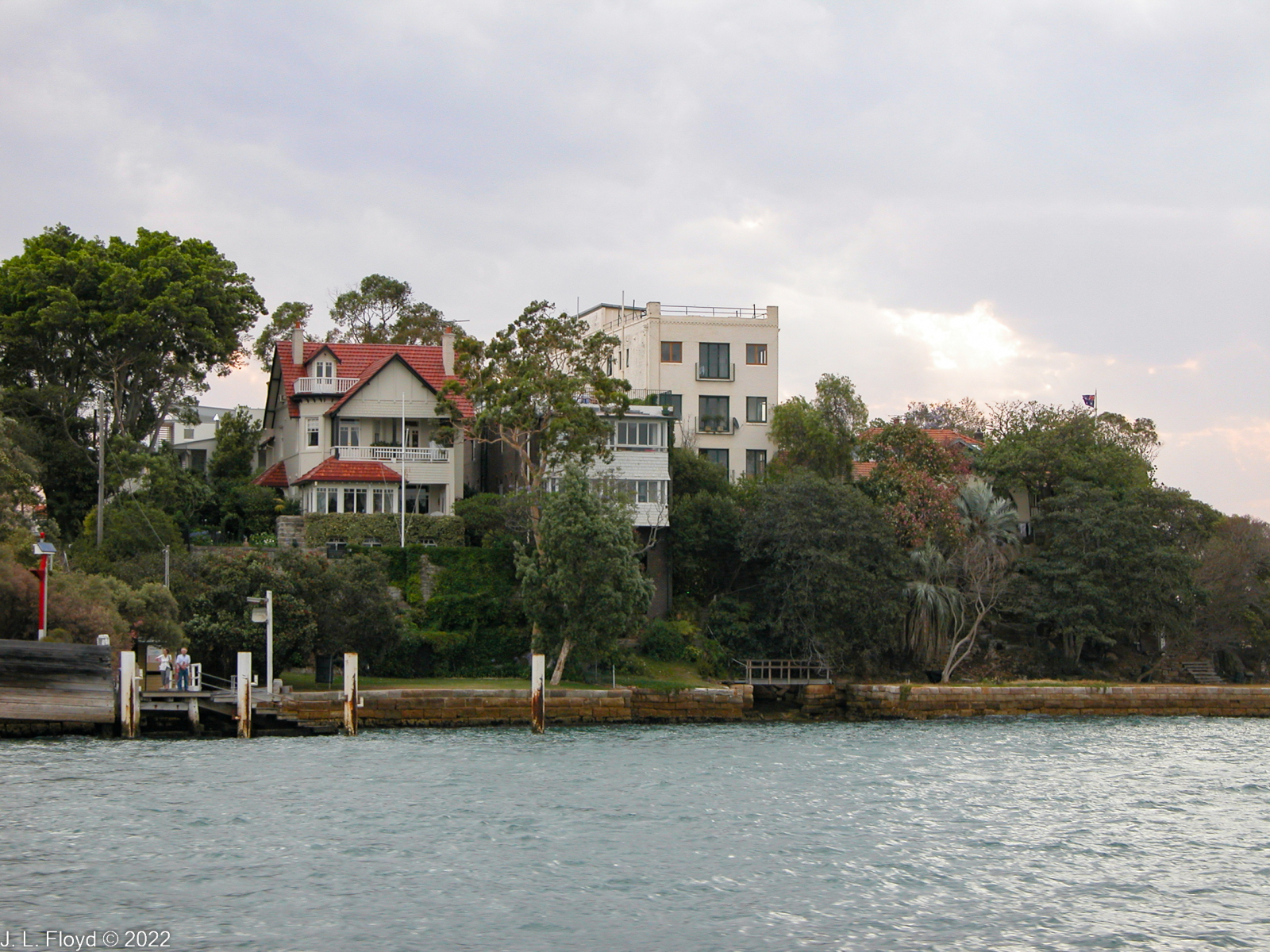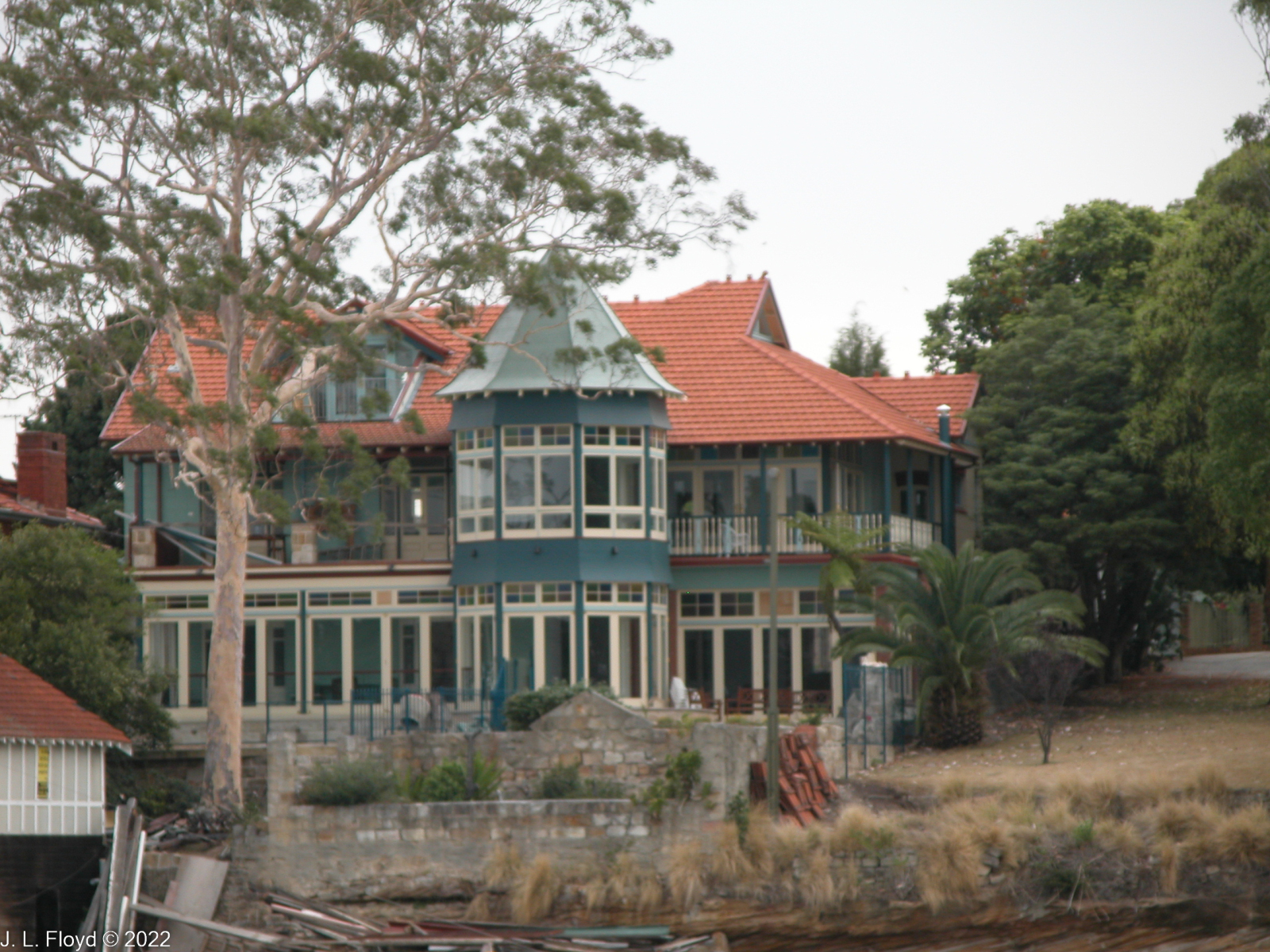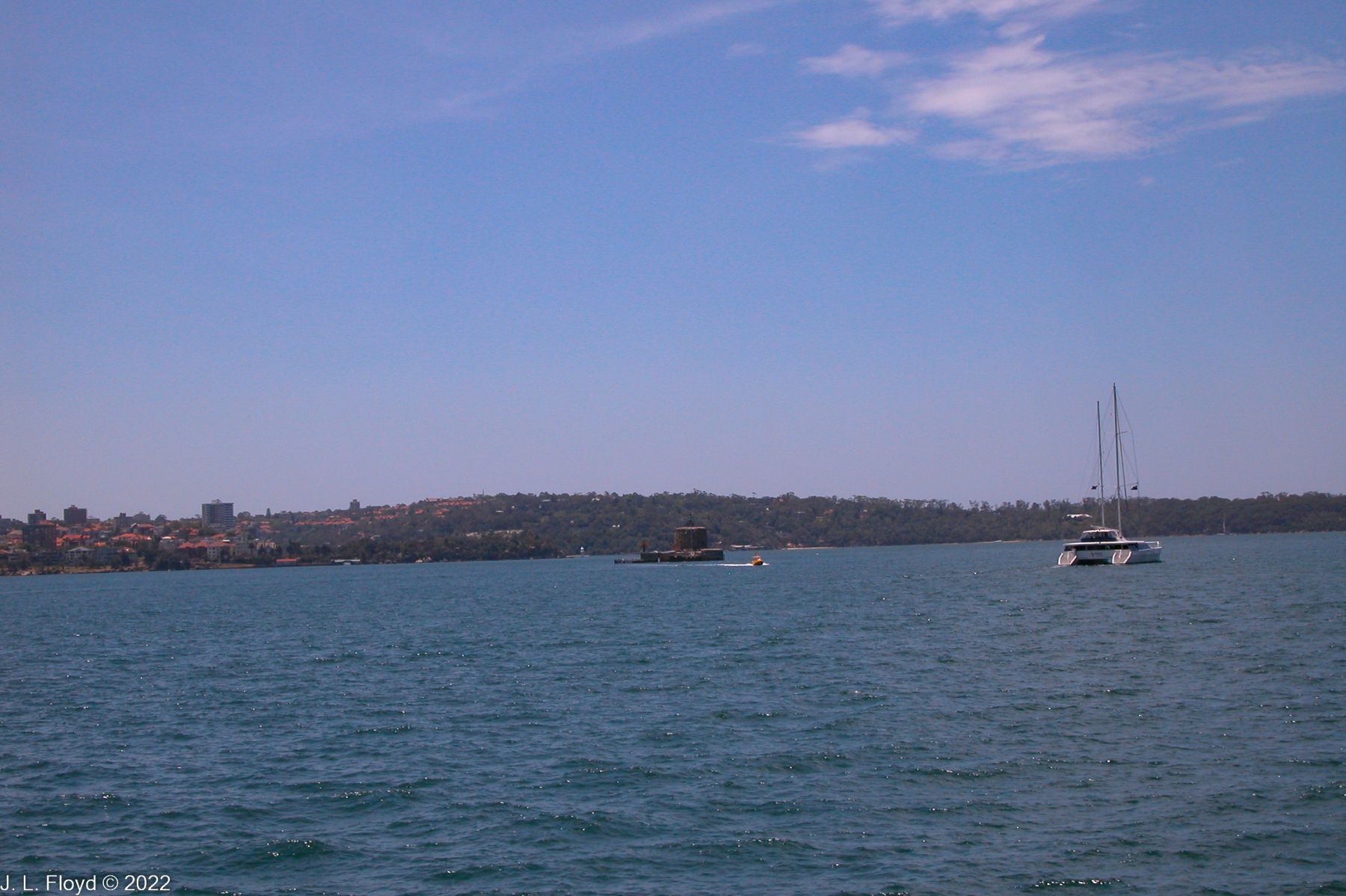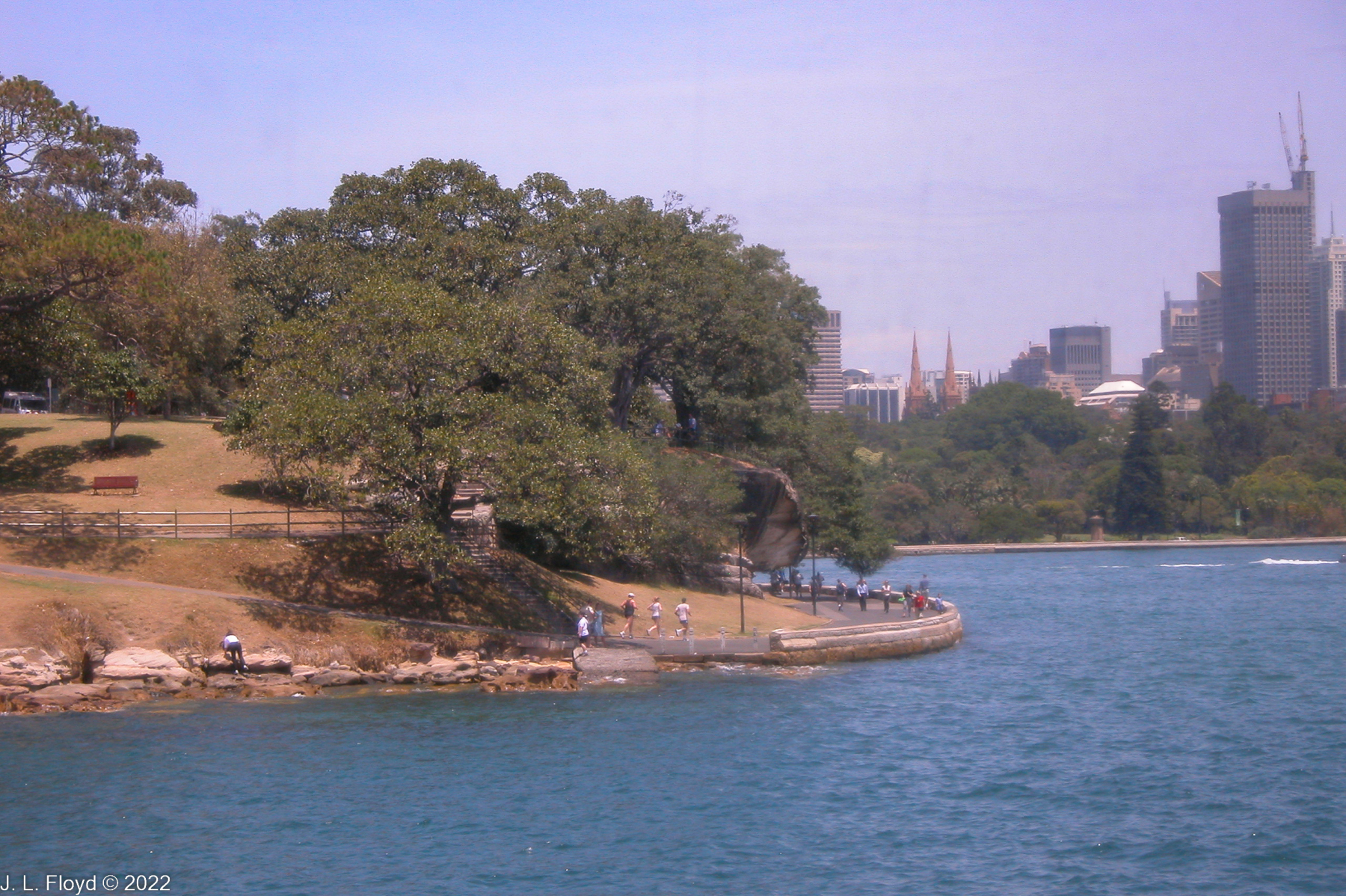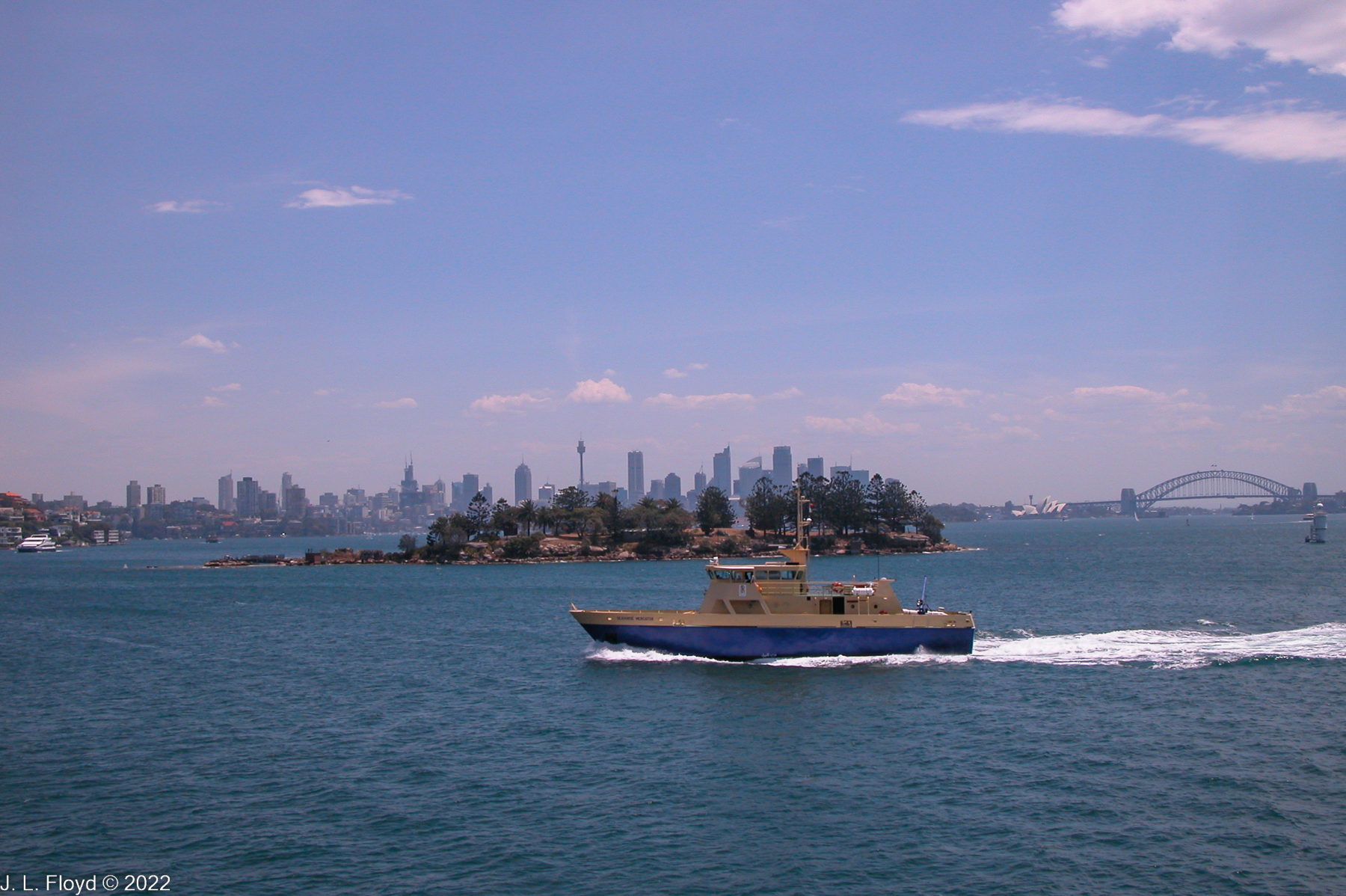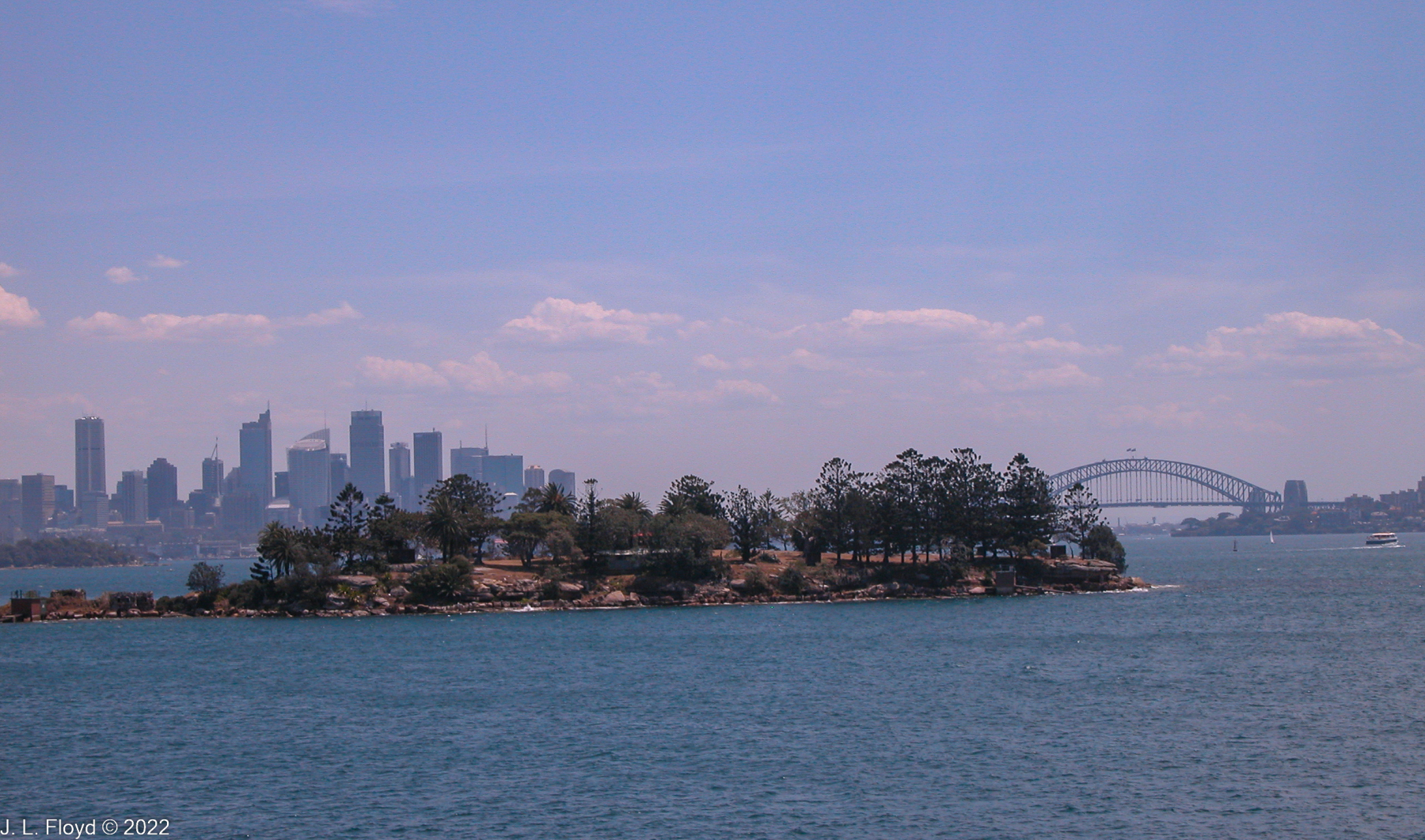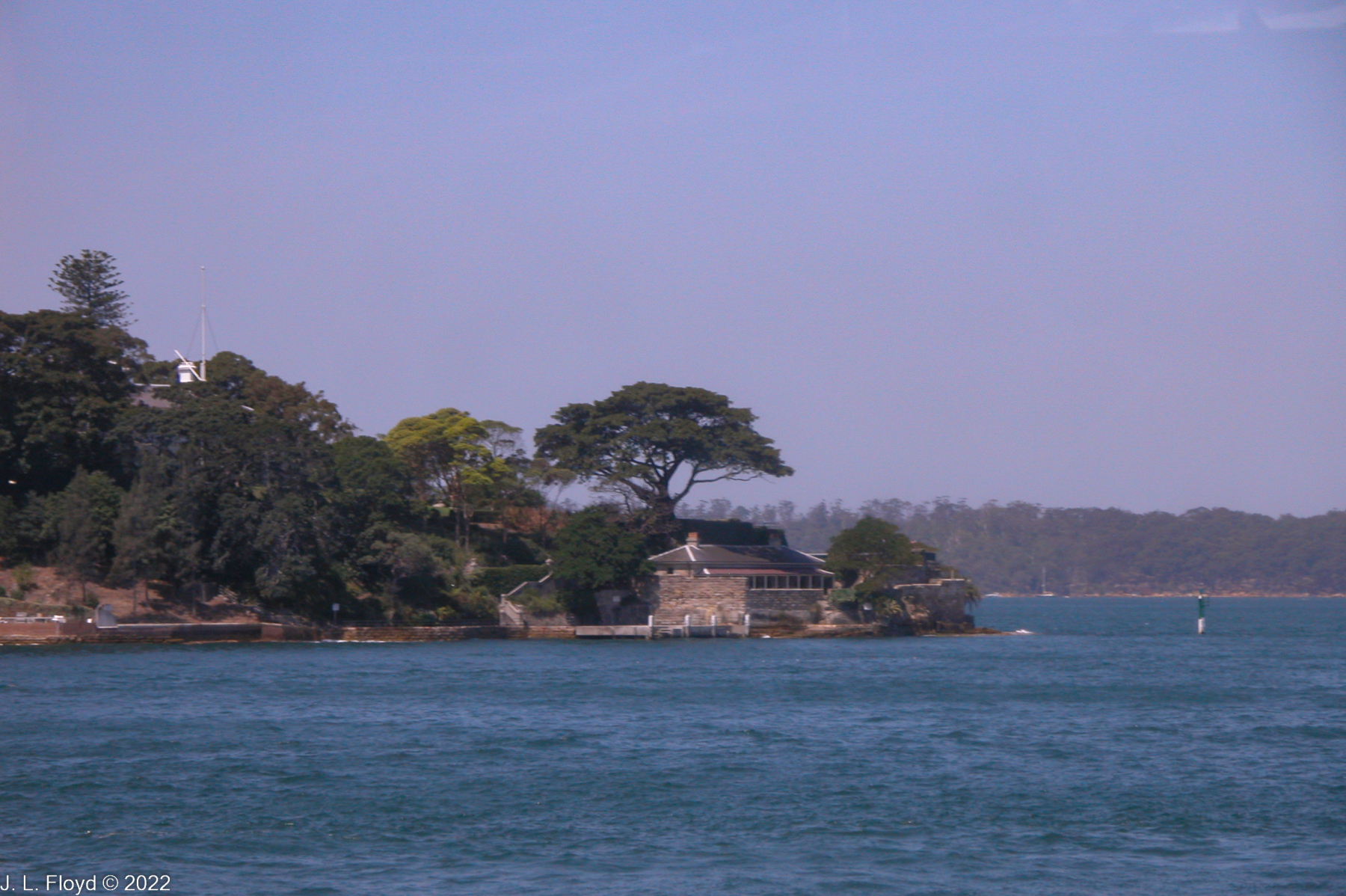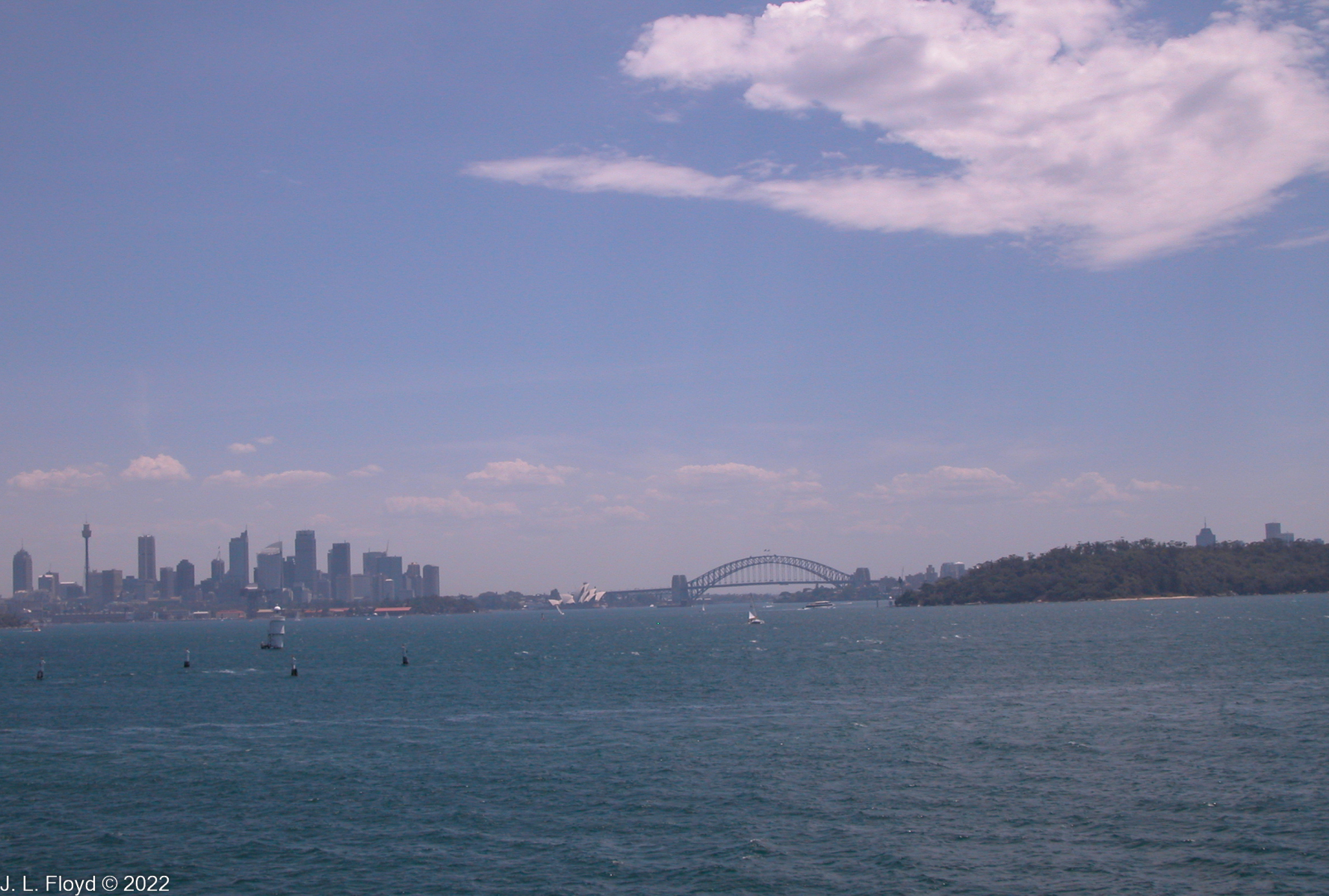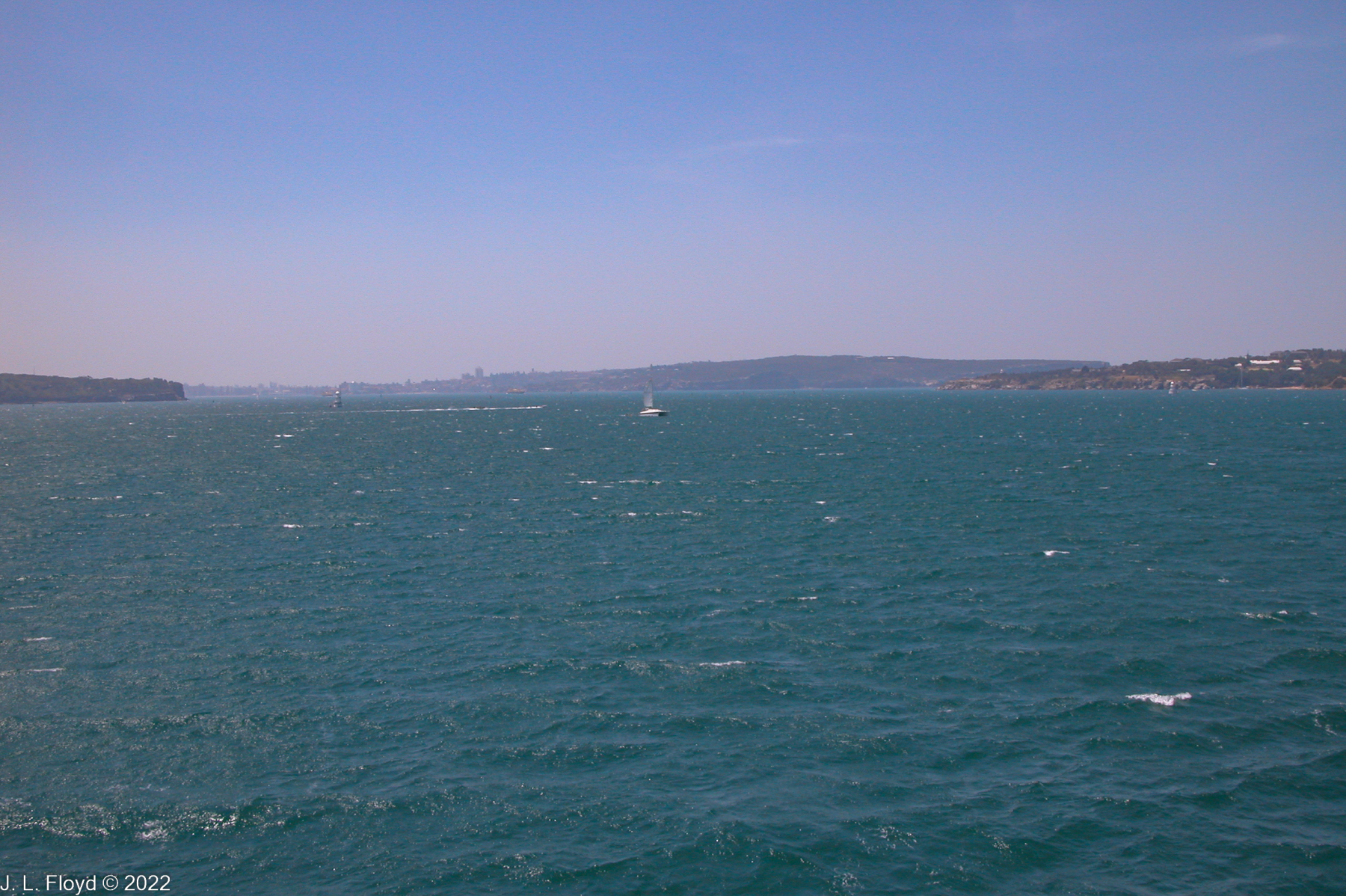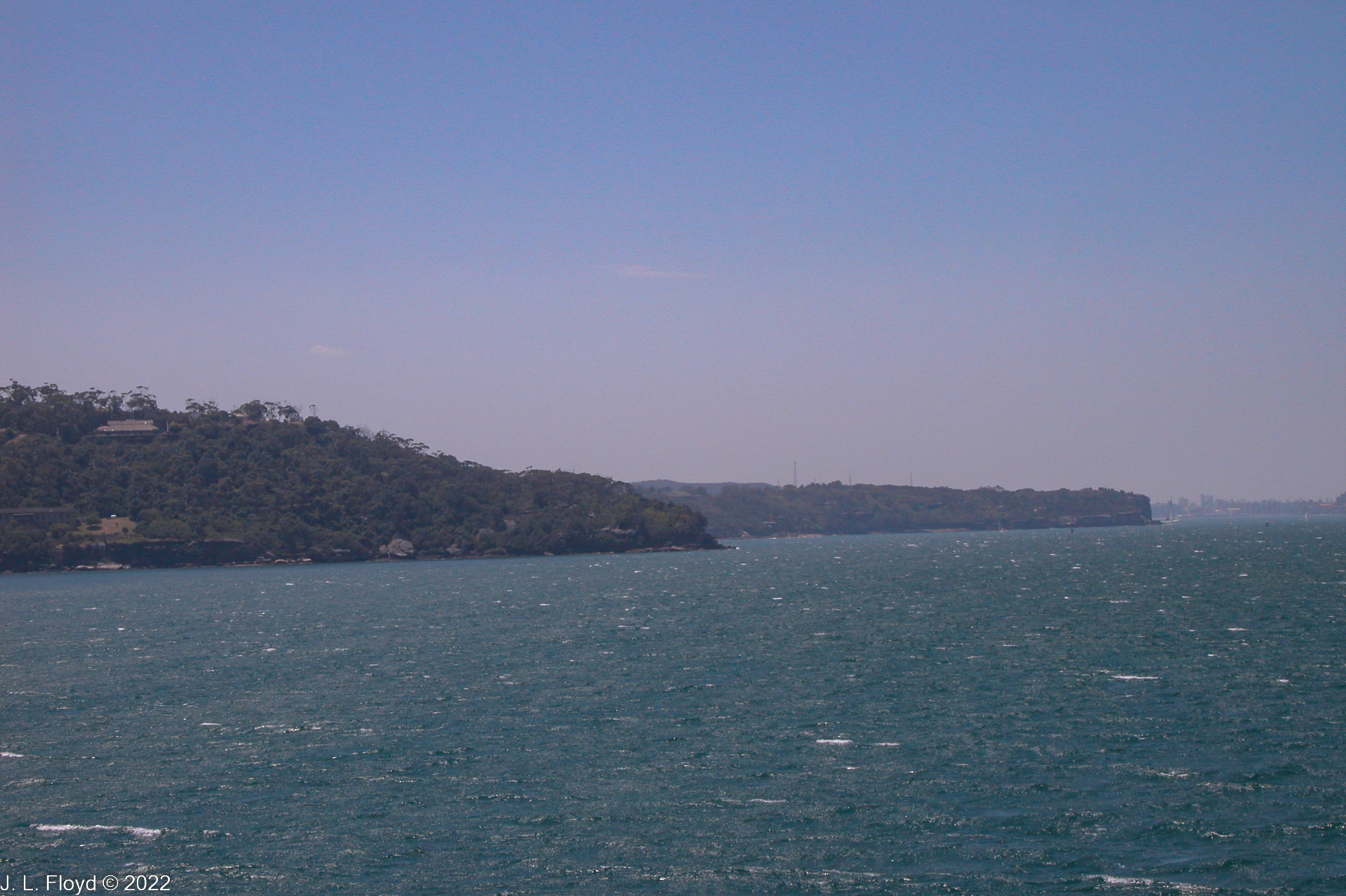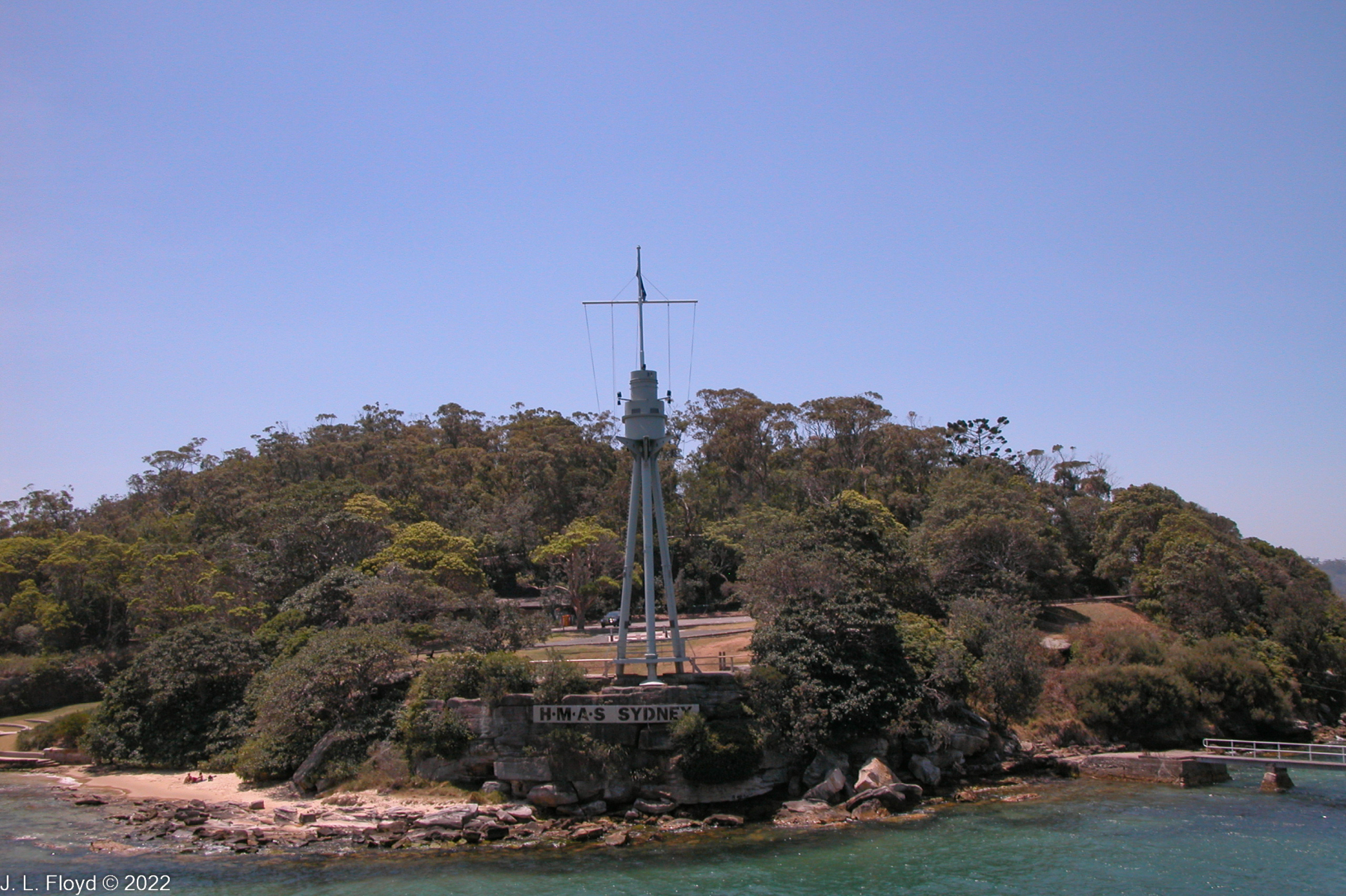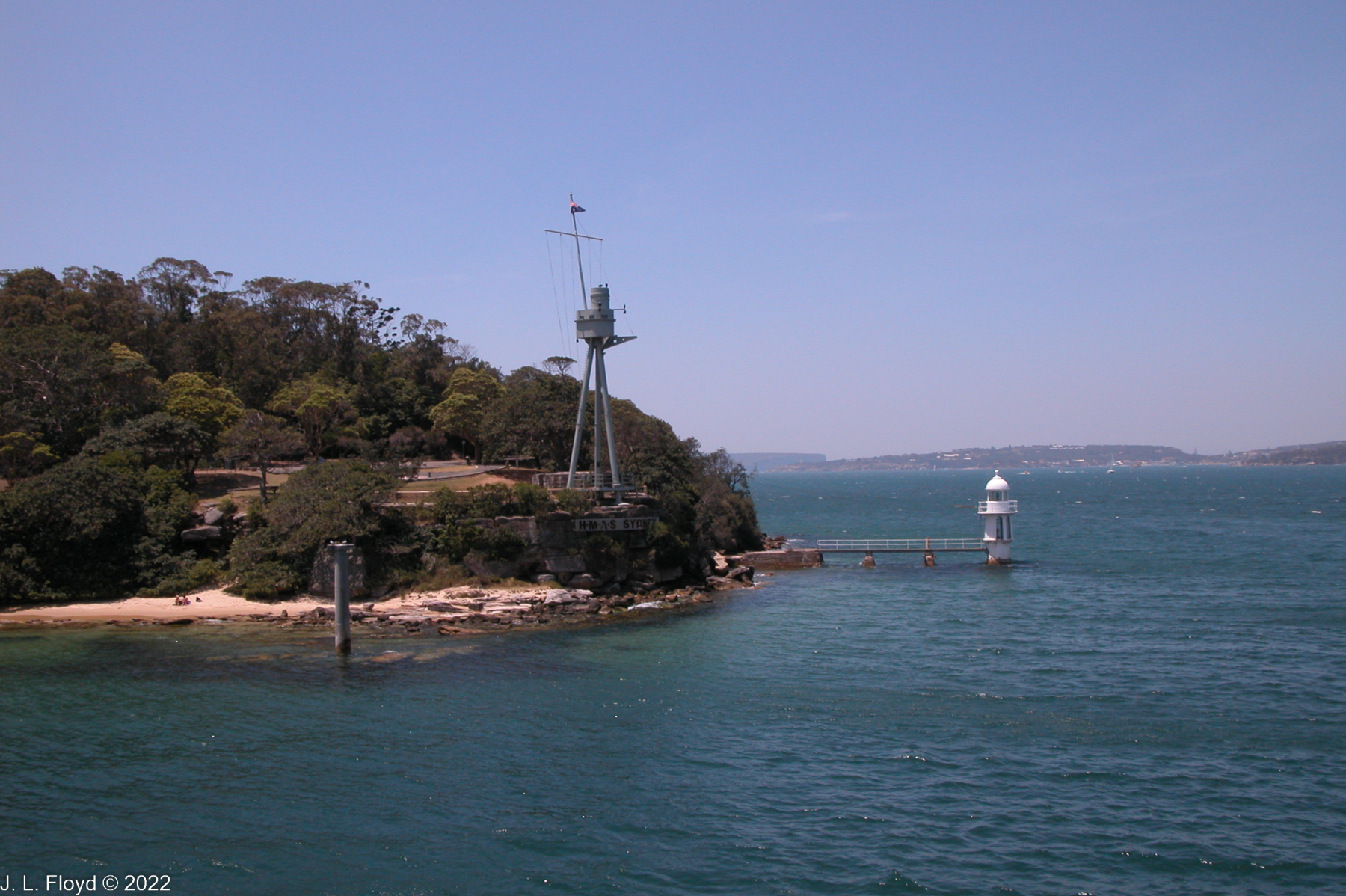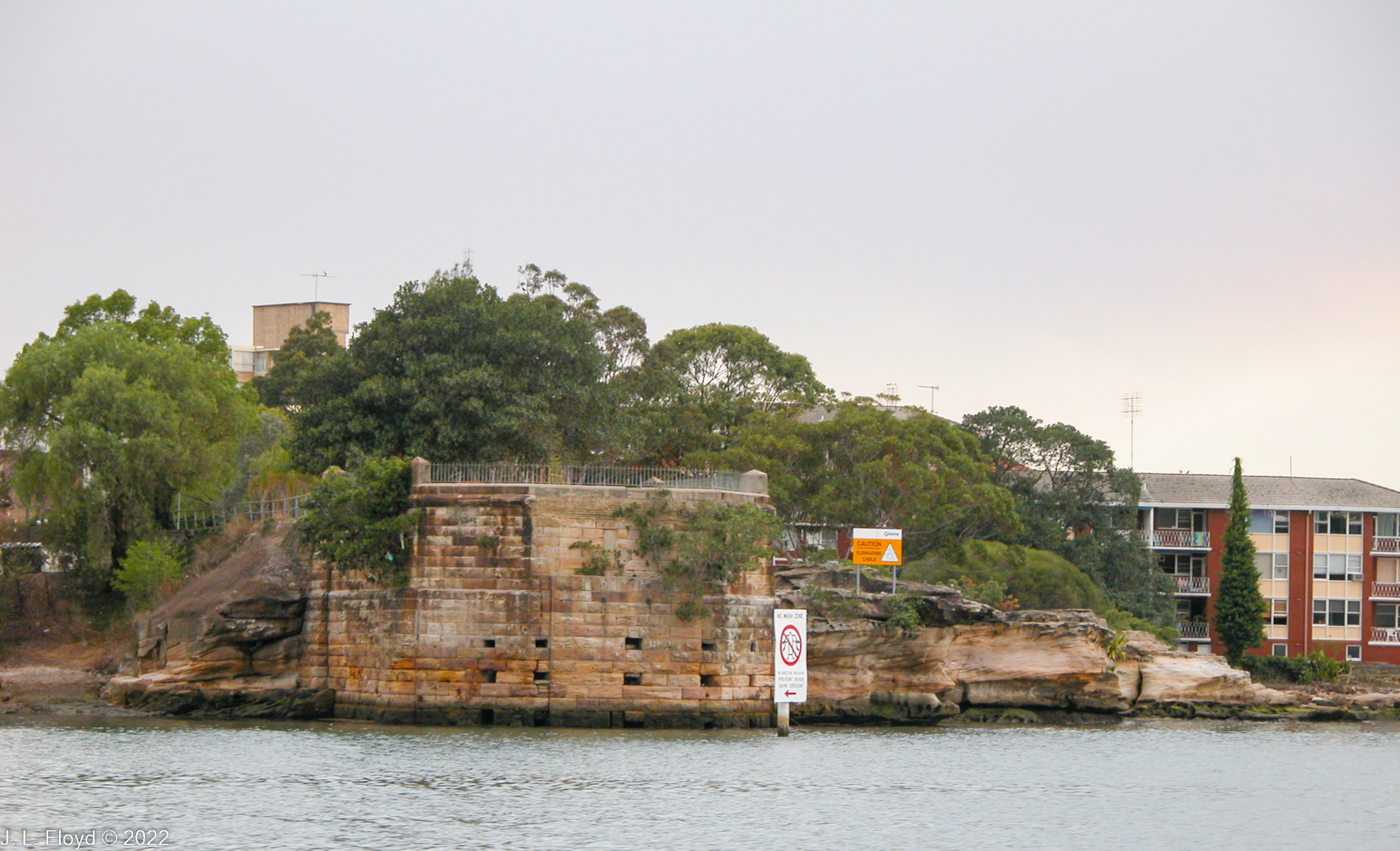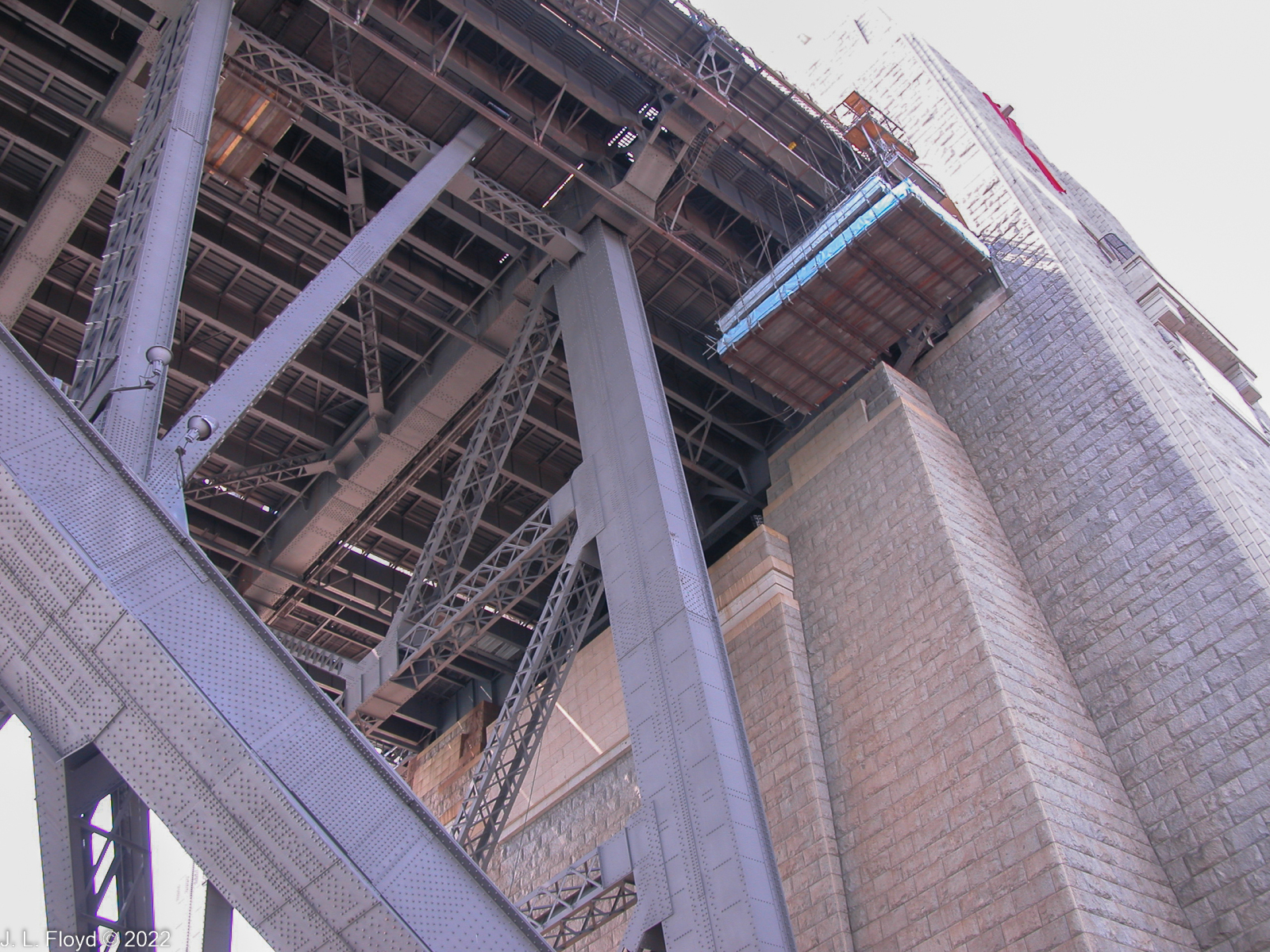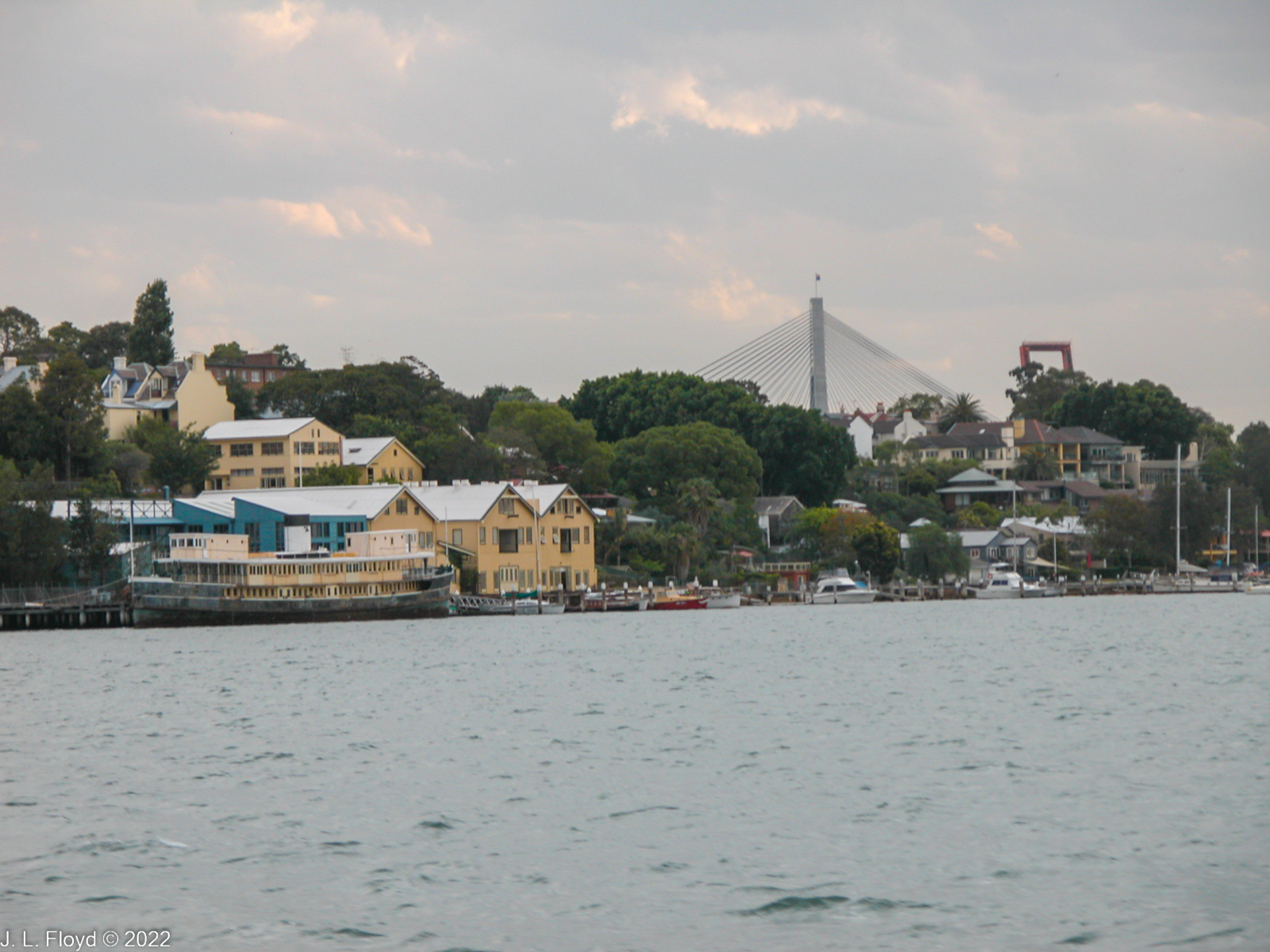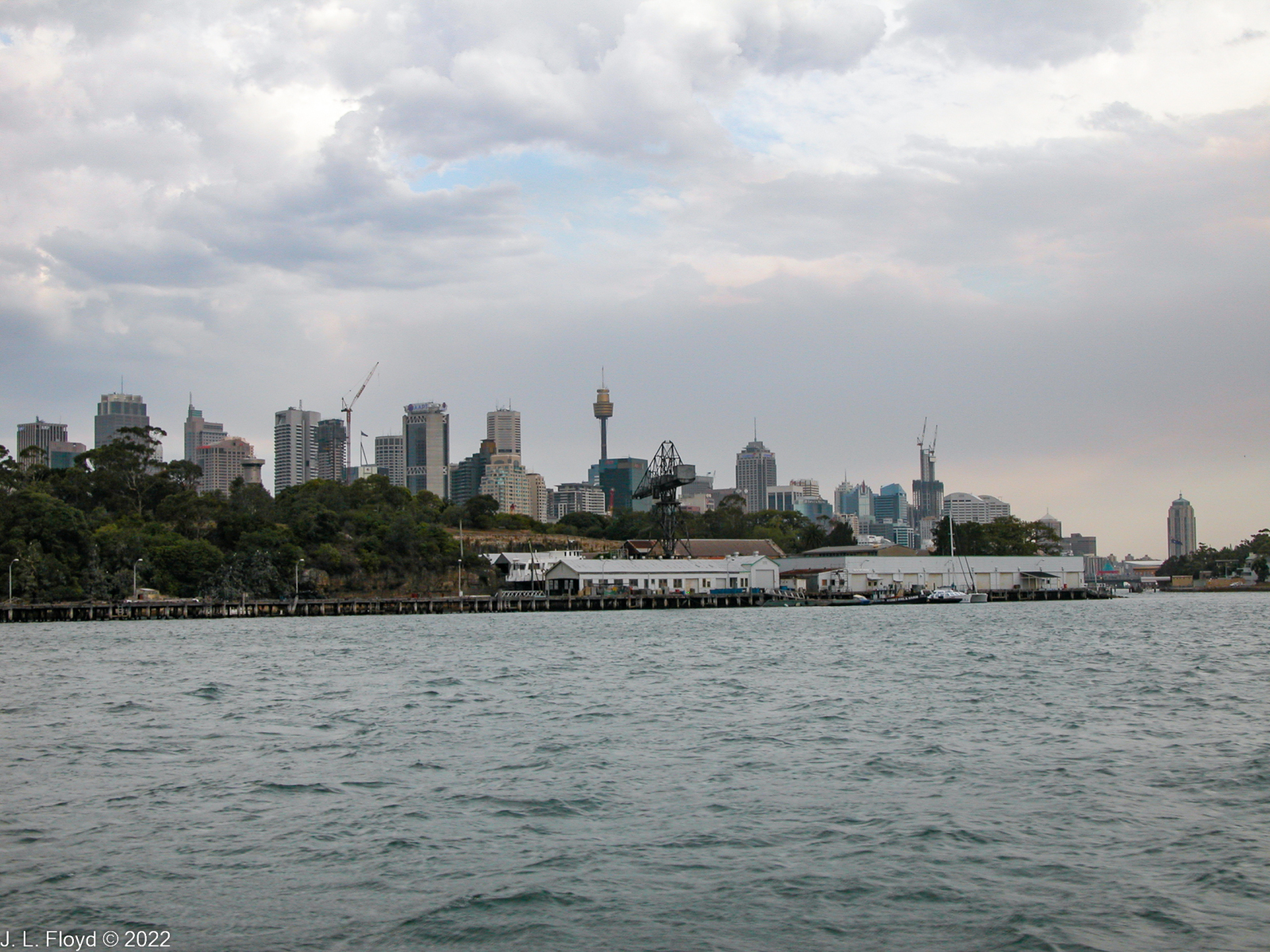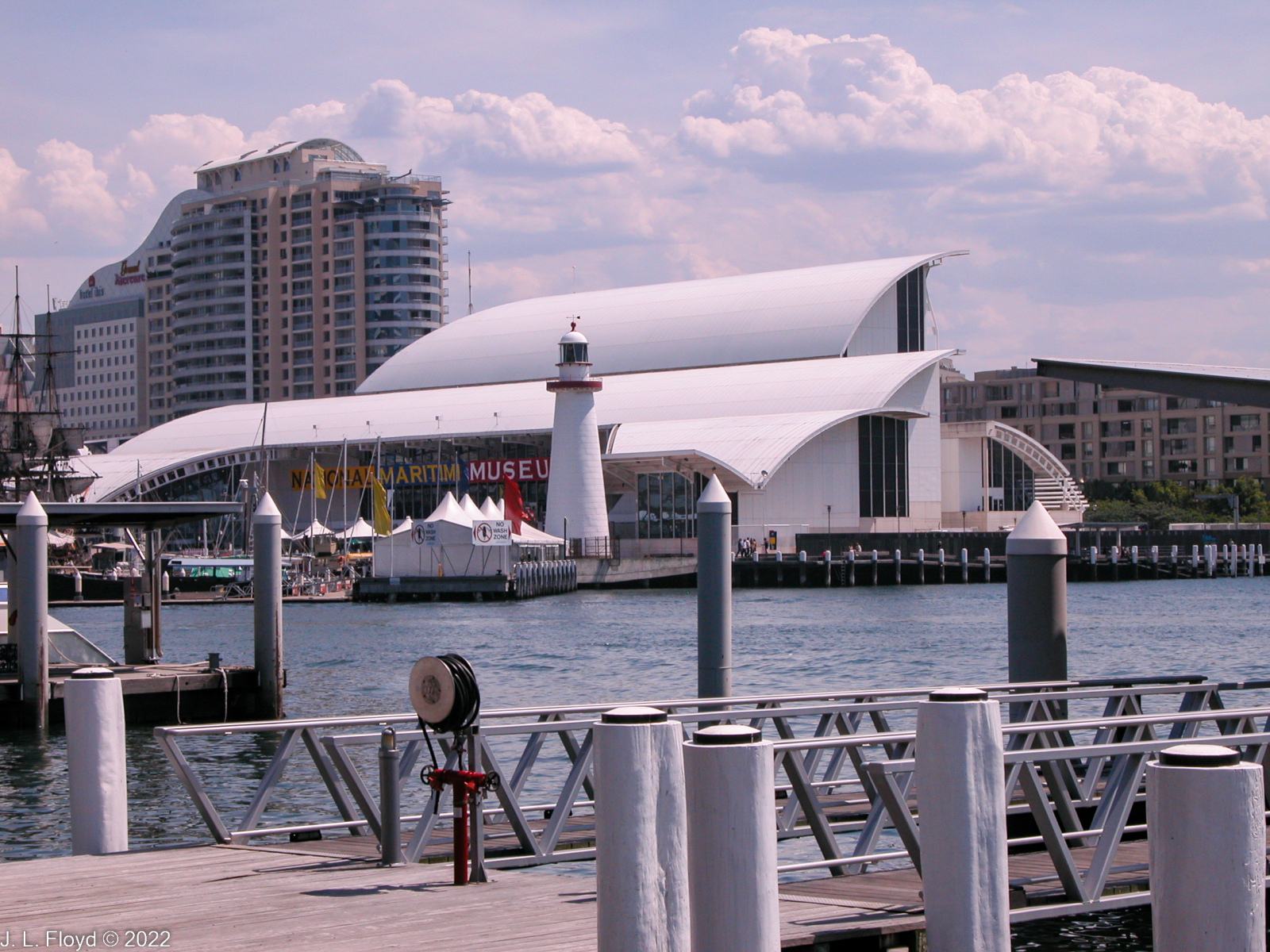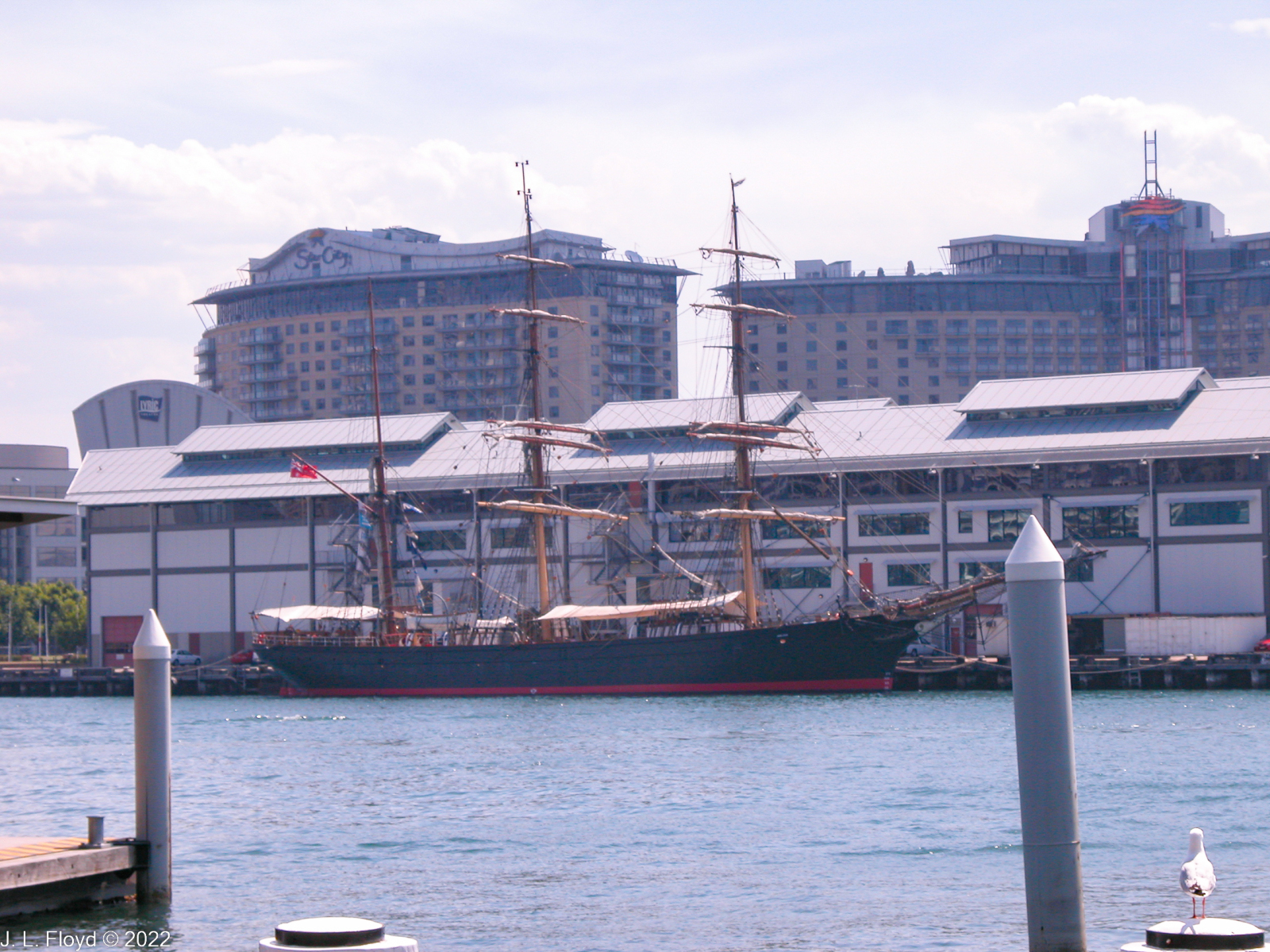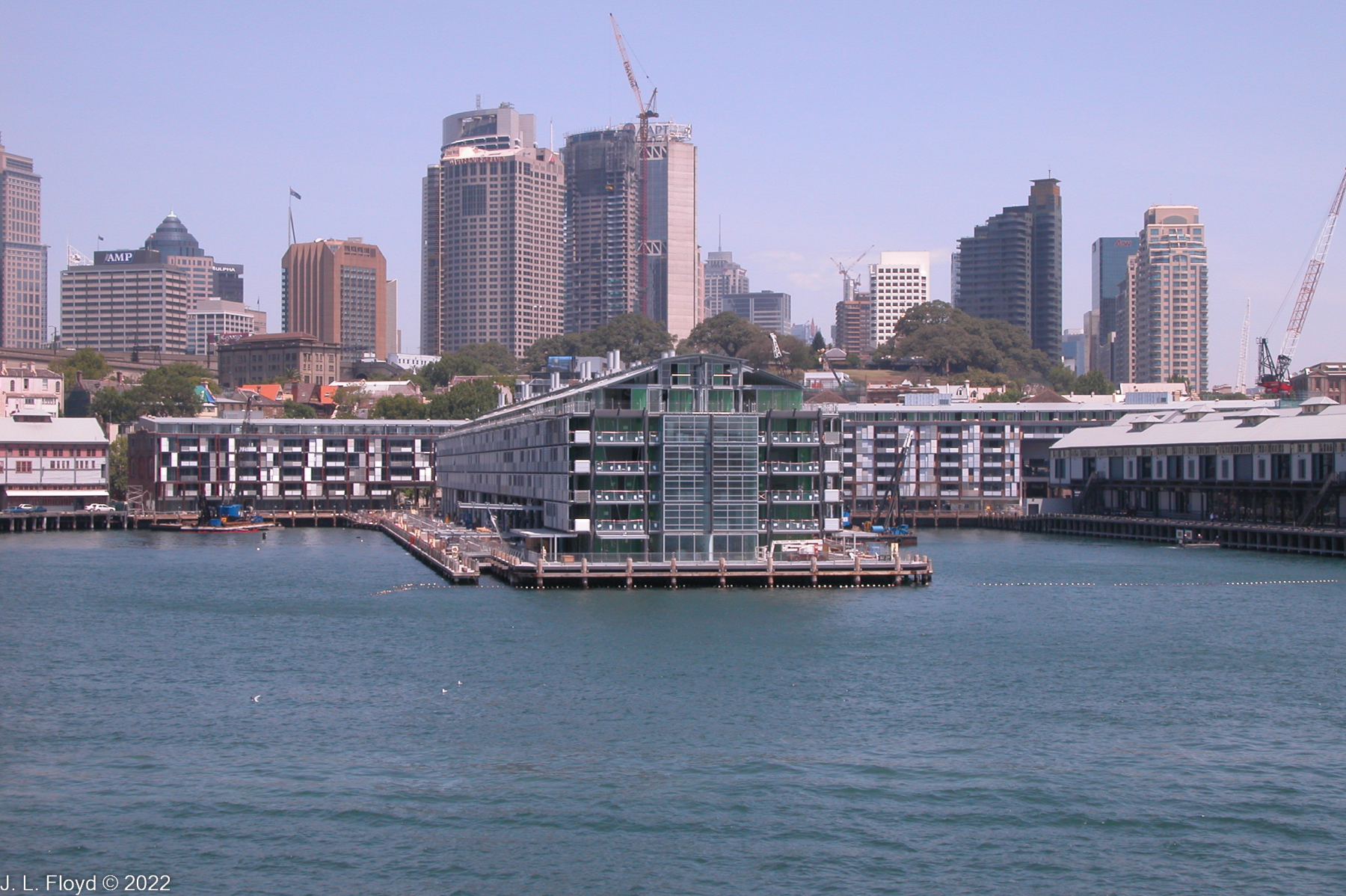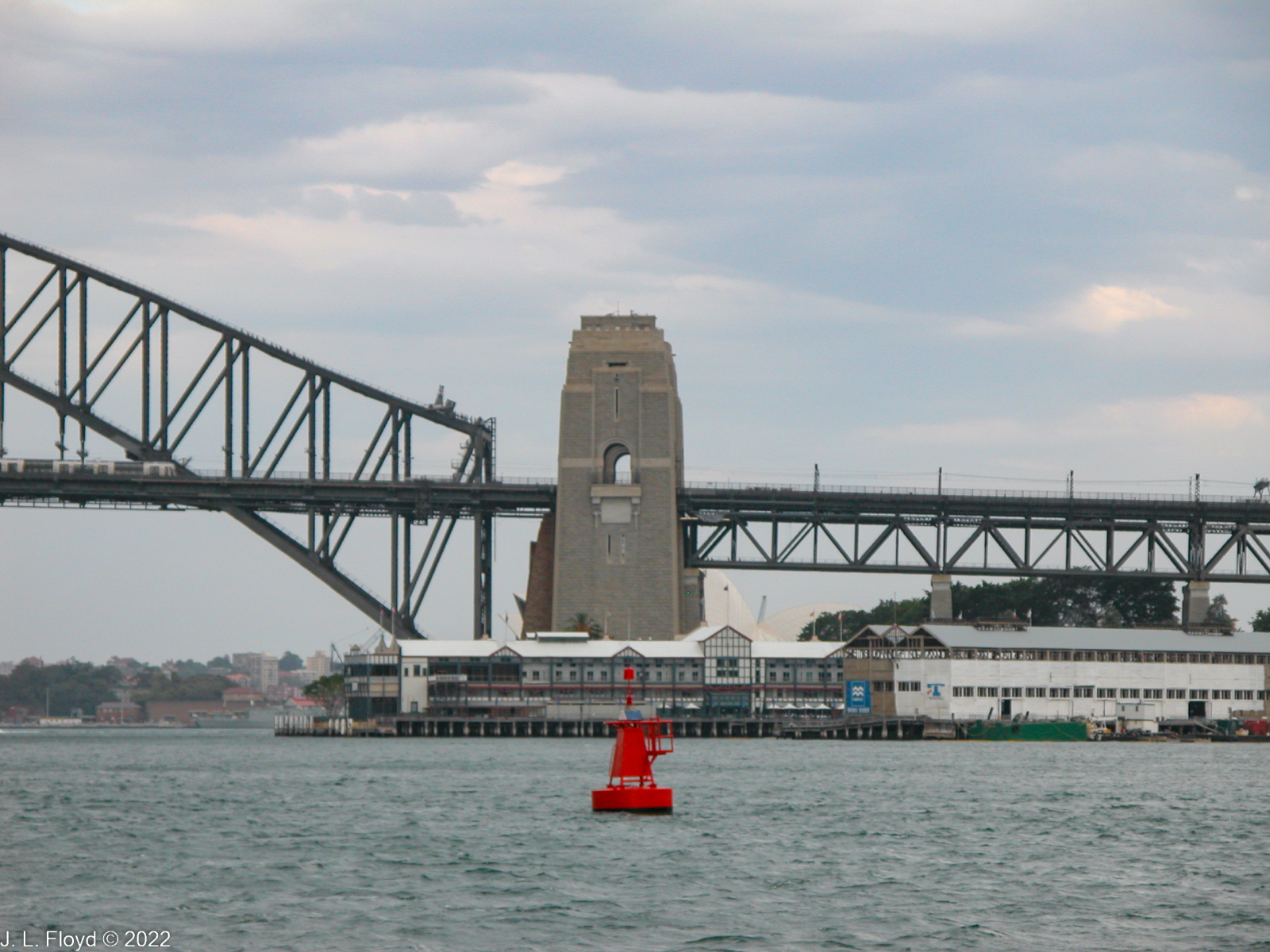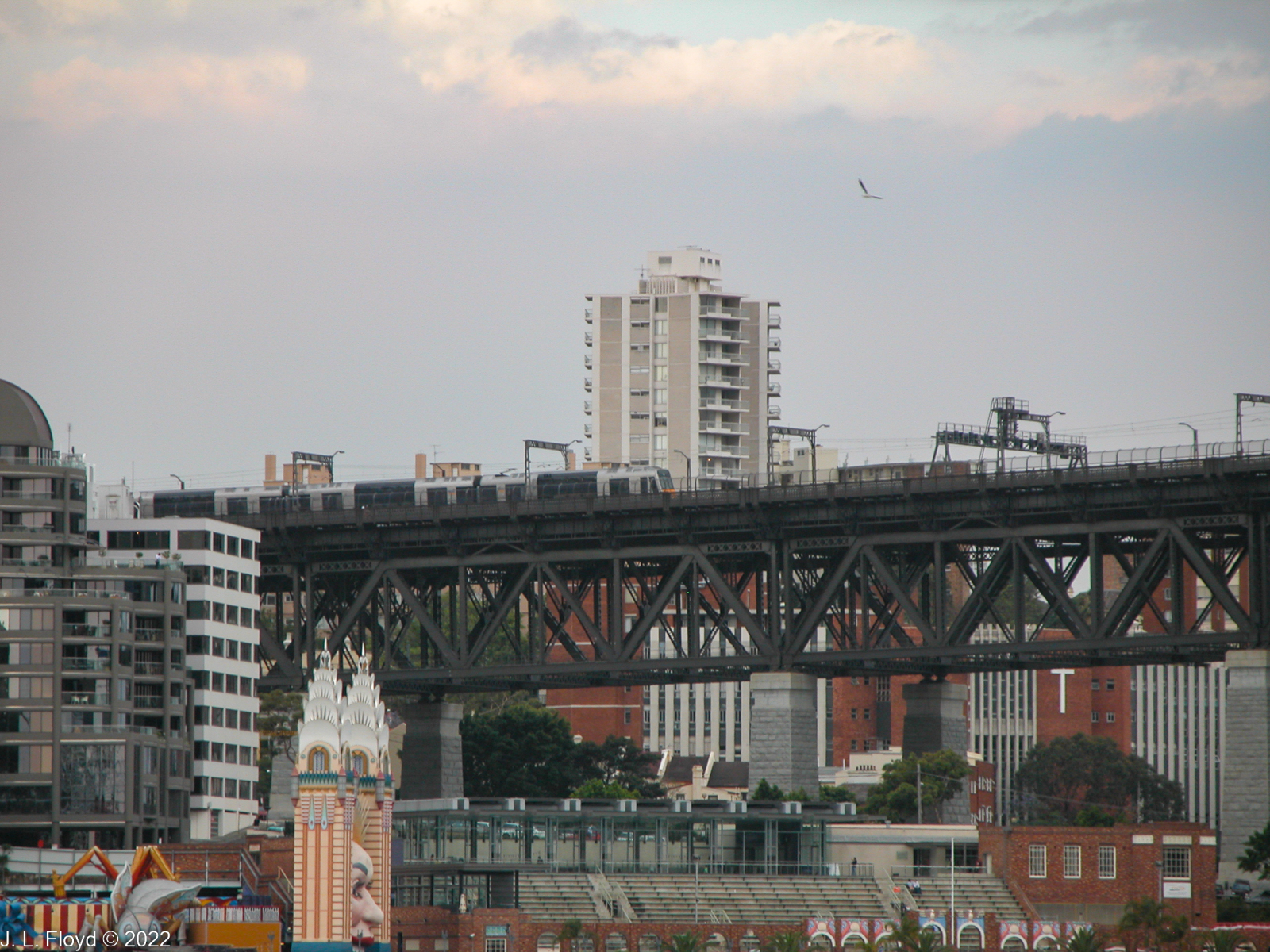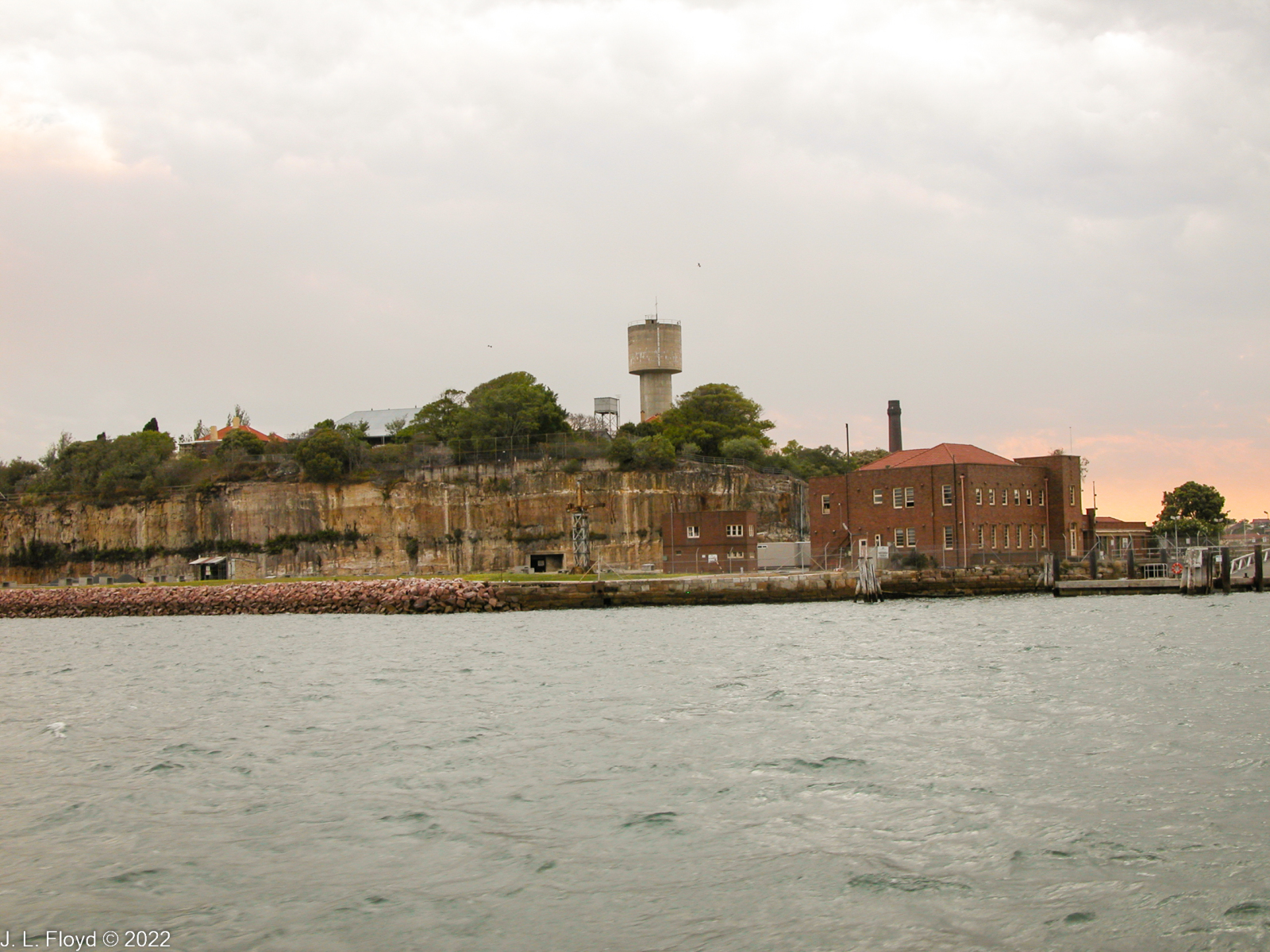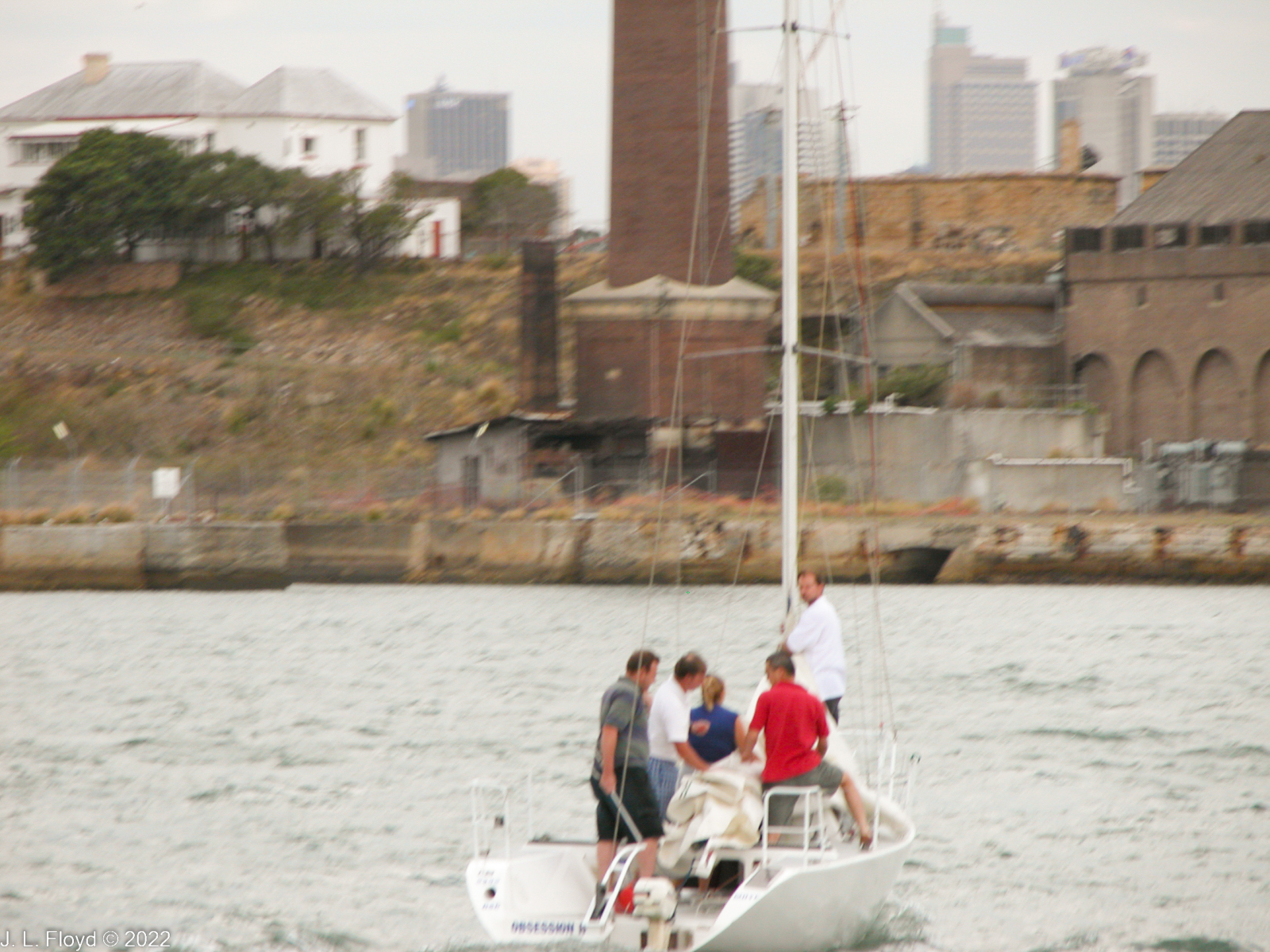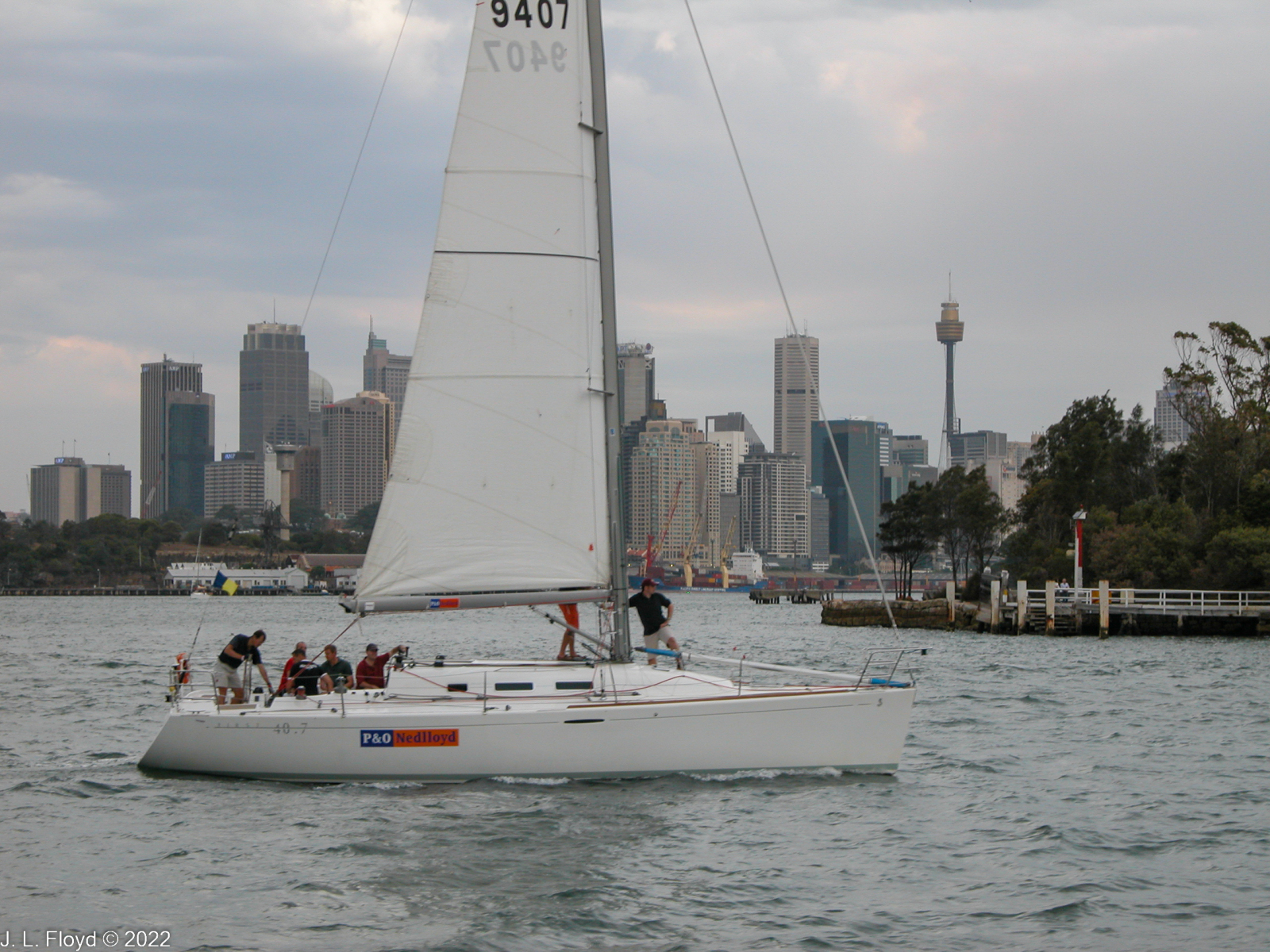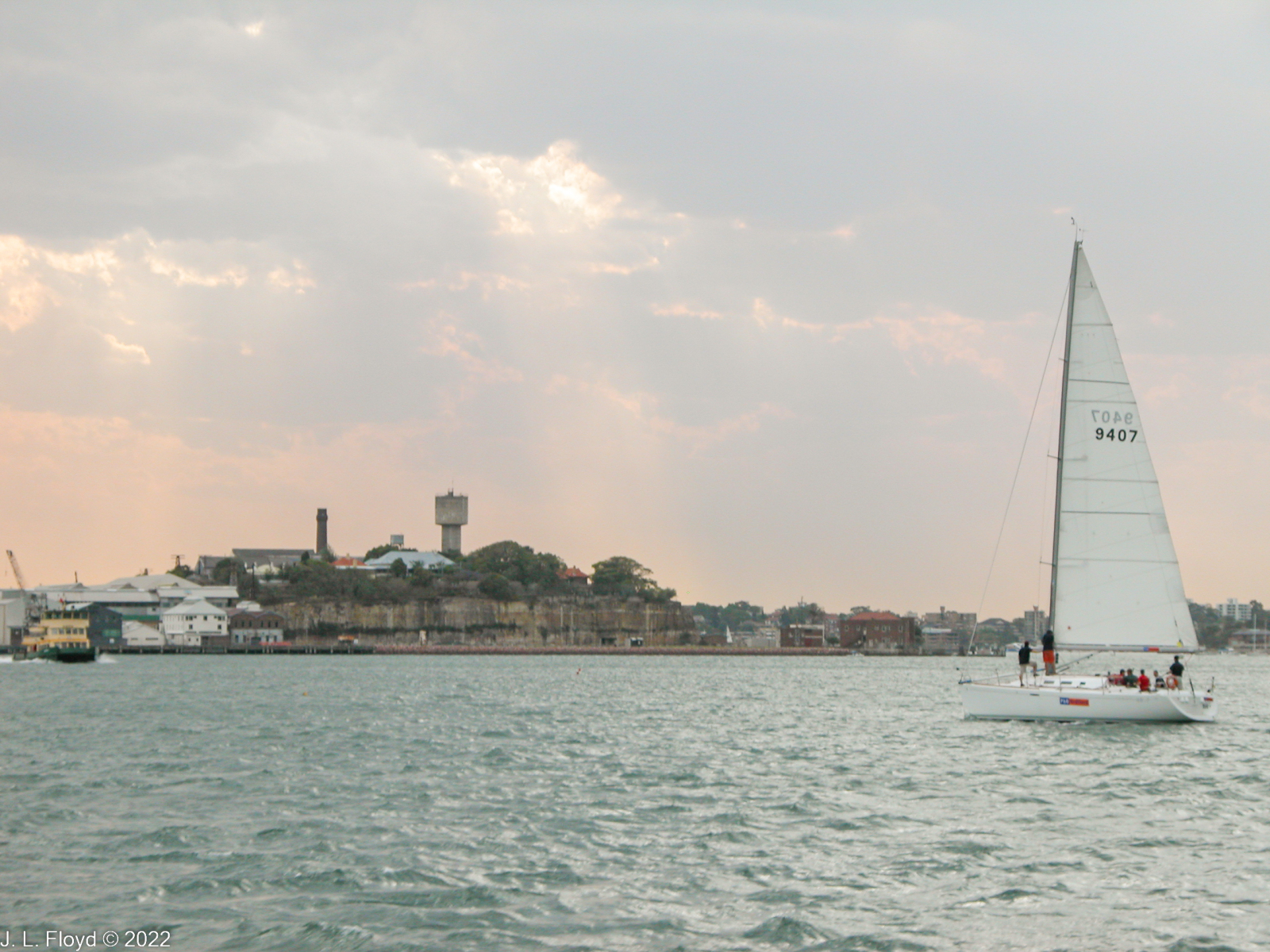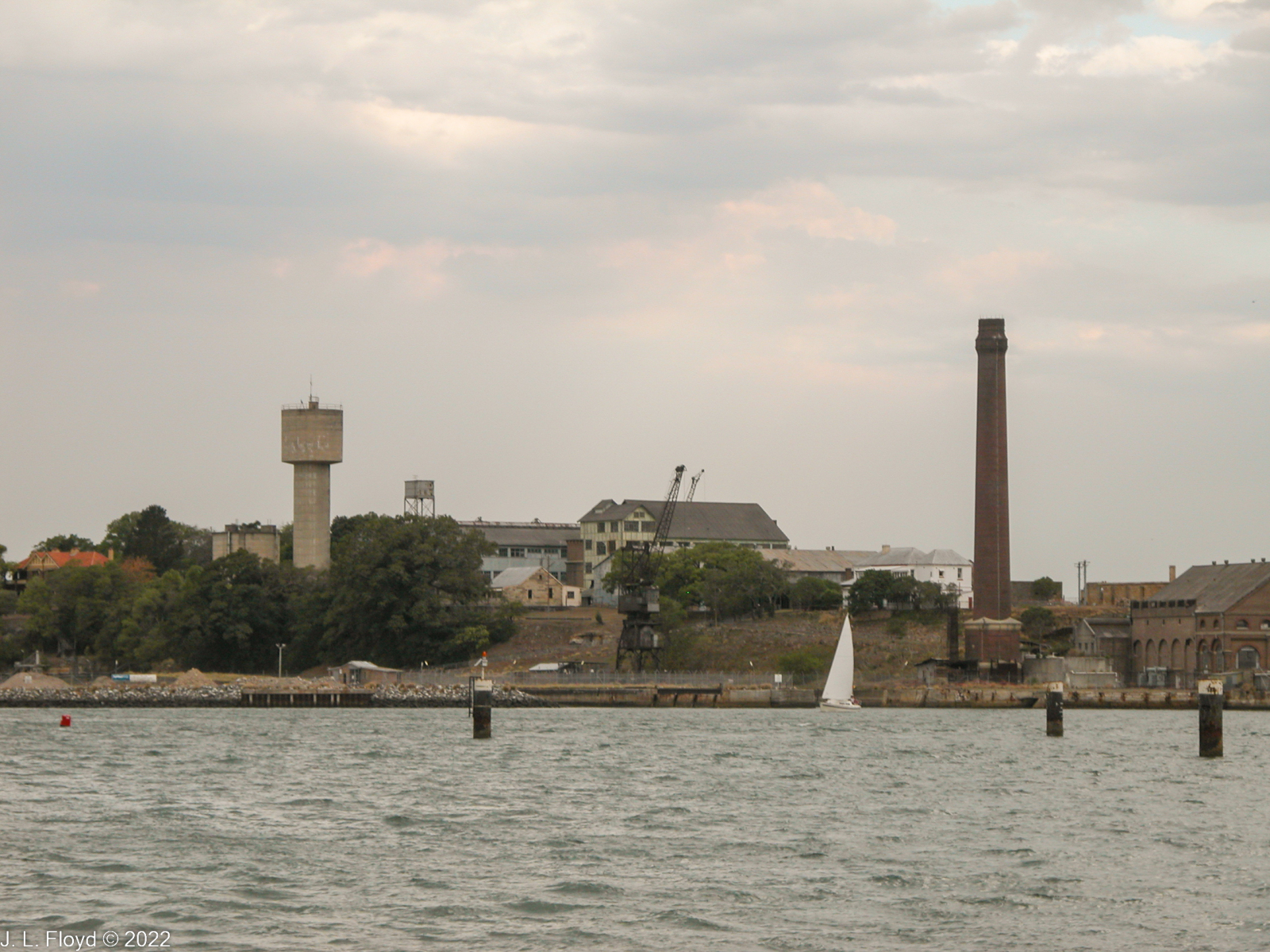On the afternoon of our day in Sydney we went on a harbor cruise. We boarded the cruise boat at Circular Quay, in The Rocks district right next to Sidney Harbor Bridge.
Sydney Harbor cruise boats come in many shapes and sizes, but most of them are catamarans like the ones shown below.
As we pulled away from the dock we got a great view of the Sydney Opera House. Photos of the Opera House are a dime a dozen – it’s probably the most photographed landmark in Sydney – so it didn’t make sense for me to take a bunch of pictures of it, but I did anyway, and here they are – I’ll just put all of them out here at once.
As you might expect, we saw a profusion of pleasure boats of all kinds in Sydney Harbor, both wind- and motor-powered. Having crewed on a few sailboats in my younger days, I was mostly interested in the wind-powered kind, and I shot a plethora of pictures of them, ranging from centerboard dinghies to luxury yachts.
One sleek sloop moored off Darling Point got my attention because it bore the letters “UCLA” on the sail cover. I wondered whether the boat belonged to UCLA, or the owner was a UCLA alum, or whether “UCLA” in this case stood for something other than “University of California at Los Angeles”, such as “United Calvinist Laymen of Australia” or “Undersea Congress of Lustful Anchorites.”
Sydney is one of the world’s ten or fifteen most expensive cities to live in, and the shores of Sydney Bay, lined with opulent residences, have some of the most pricey real estate in the world. Of course, many of these properties are right down on the waterfront and one wonders whether they will retain their value in an age of rising sea levels incurred by climate change.
Our cruise boat took us along the southern shore of Sydney Bay to the east of the Harbor Bridge, almost to the mouth of Sydney Bay, then went to the north shore and circled back to the bridge. Here are scenes from the eastern circuit of the bay.
Entering the west part of Sydney Bay under the Harbor Bridge, our cruise boat hugged the north shore, giving us a close view of the north end of the bridge and the area nearby, known as Milson’s Point. This is the location of a famous amusement park, Luna Park, which opened in 1935. For many years it was one of Sydney’s premier attractions, but in 1979 a terrible catastrophe occurred, the Ghost Train Fire, in which six children and an adult were killed, leading to the closure of the park. It was rebuilt and reopened but continued to be troubled by financial and safety issues for years thereafter, resulting in further closures. At the time of our visit in December 2002, it was still inoperative, but a new redevelopment plan was underway which led to its reopening in 2004.
Our cruise boat next took us west to the confluence of the Parramatta and Lane Cove rivers, which join to form Sydney Bay. At the mouth of the Parramatta lies Cockatoo Island, the largest island in Sidney Harbor, which our cruise boat circled before heading back to Circular Quay. From 1839 to 1869 Cockatoo Island served as a prison, reserved for convicts who, having been transported to Australia as a punishment for crimes committed in Britain, were found guilty of new offenses in Australia. In 1857 the convicts housed there were pressed into service to start building a shipyard, which eventually became one of Australia’s largest shipbuilding facilities and remained in operation until 1991. Since the shipyard closed, Cockatoo Island has become a site for camping, art festivals and other cultural events, and historical exhibits.
Our route back from Cockatoo Island took us past some of Sydney’s most engaging sights and attractions. On Balmain Peninsula we saw a group of colorful buildings known as the Waterview Wharf Workshops, formerly the location of a ship repair yard, which have been preserved as a prime example of industrial maritime architecture and now house a variety of creative businesses. Passing Jones Bay Wharf, another restored port landmark, we entered Darling Harbor, the site of some of Sydney’s major attractions. One of them is the Australian National Maritime Museum, opened in 1991. It serves as home-port to a number of historic vessels, such as a replica of the bark Endeavor, which Captain James Cook sailed in to chart the eastern coast of Australia and New Zealand. I shot a picture of a large three-masted sailing ship docked at the museum which I thought was the Endeavor replica, but I later discovered that it did not arrive in Sydney until 2005; the ship turned out to be an original 19th-century barque (not a replica), the James Craig. Opposite the museum on the other side of Darling Harbor is King Street Wharf, a picturesque waterfront promenade with restaurants and shops, and just to the south of it is Sea Life Sidney Aquarium.
Emerging from Darling Harbor at Millers Point, we cruised past Walsh Bay, next to Sydney Harbor Bridge, another historic port area now transformed into a playground with theaters, restaurants, bars and shops, before returning to dock at Circular Quay.
After completing the cruise, we had dinner at a restaurant at King Street Wharf, where we were introduced to barramundi, a white-fleshed fish that is also known as Asian sea bass and is absolutely delicious. After that we dined on barramundi whenever we could.
